NIEUW Maak boeiende enquetes met Personio Surveys - Meer informatie
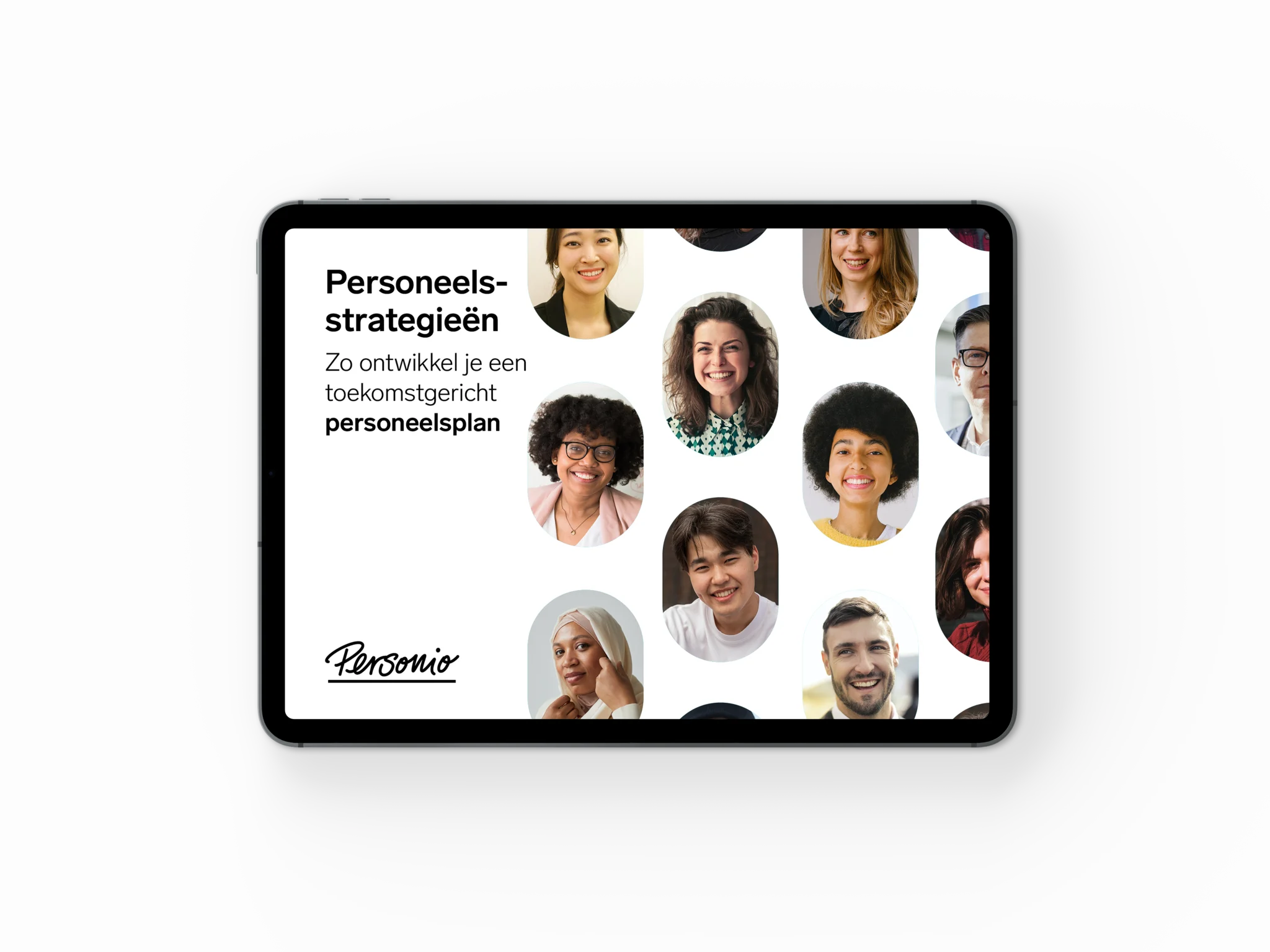
Gids werknemersstrategie

Ontwikkel je volgende werknemersstrategie.
Nieuwste blogberichten, meest geliefd, employee journey: wat is het en hoe gebruik je het.

De employee journey kan bedrijven helpen om de verschillende stadia van hun werknemers beter te begrijpen. Met deze inzichten kunnen werkgevers de tevredenheid van hun werknemers vergroten en gedurende hun hele loopbaan een geweldige ervaring bieden.
In dit artikel definiëren we de employee journey, presenteren we de kenmerken ervan en leggen we uit hoe je de employee journey samen met Personio in kaart kunt brengen.
- 1 Wat is de employee journey?
- 2 Waarom is de employee journey belangrijk?
- 3 Welke stappen doorlopen medewerkers in hun employee journey en waarom?
- 4 Hoe breng je de employee journey in kaart?
- 5 Tips voor het optimaliseren van de employee journey
- 6 Veelgestelde vragen
Wat is de employee journey?
Het werknemerstraject, of employee journey , omvat alle tijd die je werknemers bij je bedrijf hebben doorgebracht. Dit traject betreft alle belangrijke gebeurtenissen en mijlpalen die je werknemers tijdens hun loopbaan bij je bedrijf zullen tegenkomen.
Je zou kunnen stellen dat de employee journey bestaat uit alle interacties van je werknemers met je bedrijf. Deze interacties beginnen vanaf hun eerste sollicitatie. Over het algemeen wordt echter aangenomen dat de employee journey begint bij de werving en doorgaat tot de werknemer je bedrijf verlaat.
Om dit traject te visualiseren, gebruiken bedrijven employee journey maps . Dit zijn trajectvisualisaties die je helpen om alle belangrijke stappen van de journey vast te leggen. De employee journey is ook nauw verbonden met de werknemerservaring . Daarom is het nauwkeurig in kaart brengen van de employee journey een belangrijke stap om de werknemerservaring van je werknemers te verbeteren .
Leestip: Leer over de beste praktijken voor het behouden van toptalent binnen jouw organisatie.
Waarom is de employee journey belangrijk?
Het begrijpen van de employee journey van je werknemers is belangrijk om werknemerssucces mogelijk te maken. Personeelsdiensten doen daarom aan Employee journey mapping om belangrijke inzichten te verwerven. Met een duidelijk inzicht in de employee journey genieten bedrijven namelijk van de volgende voordelen :
Een betere werknemerservaring: door het herkennen en analyseren van de werknemerservaring kunnen bedrijven werkzaamheden beter plannen. Het helpt je bedrijf om bewuster te worden van de stappen die nodig zijn om je werknemers te helpen tijdens hun loopbaan.
Sterkere bedrijfscultuur: een betere ontwikkeling is mogelijk wanneer de loopbaanplannen van je werknemers in kaart worden gebracht en de verwachtingen duidelijk worden gecommuniceerd.. Dit leidt tot een vriendelijke werksfeer en een sterkere bedrijfscultuur .
Grotere tevredenheid onder werknemers: studies tonen aan dat werknemers die het gevoel hebben dat ze met respect behandeld worden beter presteren op het werk.
Minder personeelsverloop: tevreden werknemers zullen je bedrijf minder snel verlaten. Inzicht in de employee journey helpt je om te bepalen welke opleidingen nodig zijn voor de ontwikkeling van je werknemers .
Welke stappen doorlopen medewerkers in hun employee journey en waarom?
Elke werknemer doorloopt verschillende stadia tijdens zijn employee journey. Deze stadia liggen niet vast. Het is aan jou om de cruciale stadia van hun employee journey in je bedrijf te herkennen en te creëren. Hier zijn de 6 meest voorkomende stadia voor de meeste bedrijven:
1. Recruitment
Het eerste contact dat je werknemer met je bedrijf zal hebben, gebeurt tijdens het wervingsproces. Daarom moet je deze fase zorgvuldig plannen om je toekomstige werknemers de best mogelijke ervaring te bieden.
Denk na over de beste manieren om je kandidaat aan te trekken, schrijf een gedetailleerde functiebeschrijving en bied je kandidaten een vlotte sollicitatie-ervaring. Blijf daarna in contact en informeer je kandidaten over het verloop van het wervingsproces. Personio kan je helpen om je sollicitatiegesprekken en functiebeschrijvingen tijdens deze stap beter voor te bereiden.
2. Loonvoorstel
Het is niet alleen belangrijk om bij het werven een mooi salaris en concurrerende secundaire arbeidsvoorwaarden te bieden. Het is ook belangrijk om de voorwaarden aan te passen naarmate je werknemer zich ontwikkelt in je bedrijf.
Er zijn veel manieren om het salaris voor nieuwe werknemers vast te stellen. Elk bedrijf gebruikt wat het beste bij zijn behoeften past, maar hier zijn 3 populaire suggesties om het salaris te bepalen:
Een marktconform salaris: het gemiddelde loon dat op de markt voor een bepaalde functie betaald wordt. Hierover valt te onderhandelen, maar het geeft je een goed idee van wat je als bedrijf zult moeten betalen.
Een salarisschaal: met een salarisschaal kun je als bedrijf de juiste verwachtingen stellen, maar ook binnen je eigen financiële mogelijkheden blijven.
Een prestatiegericht loon: werknemers krijgen een basisloon dat door allerlei bonussen flink kan stijgen. Deze bonussen worden uitgekeerd op basis van behaalde KPI's.
Het opstellen van arbeidscontracten die voor elke werknemer andere voorwaarden bevatten, kan al snel veel administratie opleveren. Daarom biedt Personio tools die bedrijven helpen om hun salarisadministratie bij te houden.
3. Onboarding
Wist je dat een sterk onboardingproces de productiviteit van nieuwe werknemers onmiddellijk verbetert? Het is dus belangrijk dat je werknemers zich tijdens de eerste dagen of weken van hun dienstverband niet verloren voelen.
Geef je werknemers daarom een duidelijk onboardingplan. Dit bevat hun belangrijkste taken, en ook doelen waar ze naartoe kunnen werken. Je managers spelen hierbij een belangrijke rol. Werk samen met je managers aan het onboardingplan van je bedrijf, zodat ze nieuwe werknemers beter kunnen begeleiden.
Personio biedt hiervoor geweldige tools waarmee je het hele onboarding proces volledig kunt automatiseren. Op deze manier krijgen werknemers de kans om zich bijna helemaal zelf in te werken, terwijl managers het proces moeiteloos kunnen opvolgen.
4. Performance - Learning & Development
Als werknemers eenmaal bij je bedrijf werken, is het belangrijk hun een gevoel van vooruitgang te geven. Opleidingen bieden je werknemers ontwikkelingskansen, waardoor ze beter worden in het uitvoeren van hun werk. Ze kunnen zich ook beter voorbereiden op een eventuele promotie.
Daarom moet je opleidingen en andere ontwikkelingskansen in je employee journey map opnemen. Hiermee voorkom je dat talenten stagneren en zo houd je werknemers efficiënt en gemotiveerd. Met de juiste software voor trainingsbeheer en een goede aanpak van performance management , kun je deze doelen gemakkelijker bereiken.
Hier zijn een paar concrete voorbeelden van Learning & Development op het werk:
Formele opleidingssessies (individueel of in groep): dit zijn trainingssessies waar elke werknemer aan kan meedoen en die vooraf bepaald worden. Deze opleidingen kunnen tijdgebonden zijn of afhangen van persoonlijke vordering.
Coaching en mentoring van werknemers: nieuwe medewerkers kunnen aan een meer ervaren collega worden toegewezen. De coach krijgt de kans om door te groeien naar een leidinggevende positie, terwijl de nieuwe collega profiteert van de ervaring van de mentor.
Jobshadowing: laat werknemers in andere afdelingen van je bedrijf meedraaien. Zo leren de werknemers meer over alle processen die bij hun werk betrokken zijn, en hoe hun taken samenhangen met de taken van collega's.
Deelname aan conferenties: de bedoeling van een conferentie is om gelijkgestemden samen te brengen om te leren, gedachten te bespreken, te netwerken of ideeën uit te wisselen.
Opleiding op de werkvloer: opleidingen op de werkvloer zijn een belangrijk aspect van je personeelsbeleid . Deze dragen bij aan de ontwikkeling van de individuele loopbaan en de succesvolle groei van het bedrijf.
5. Betrokkenheid van werknemers en doorlopende communicatie
In feite zou deze stap de gebruikelijke aanpak moeten zijn die in je hele bedrijf wordt toegepast. Werknemersengagement is een continu proces dat tijdens de hele employee journey moet worden voortgezet. Betrokken werknemers presteren over het algemeen beter voor je bedrijf.
Een belangrijk onderdeel van het werknemerstraject is ook de communicatie met je werknemers. Je moet je communicatiestrategie zorgvuldig uitwerken en weten wanneer en hoe je met je werknemers moet communiceren.
6. Off-boarding
Of het nu gaat om pensionering, uitdiensttreding of ontslag: een werknemer zal je bedrijf ooit verlaten en daar moet je rekening mee houden. Daarom is het belangrijk dat je een goed off-boarding plan hebt.
In principe bepaal je in dit plan hoe je een goed exitgesprek voert, en hoe je op de juiste manier afscheid neemt van werknemers. Je zoekt uit wat je als bedrijf had kunnen doen om je werknemer te behouden, en je doet je best om alle deuren open te houden voor een eventuele terugkeer. Als je werknemers met pensioen gaan, moet je hun dienstjaren vieren en je oprechte dankbaarheid aan hen tonen.
Hoe breng je de employee journey in kaart?
Hoe begin je aan het maken van een employee journey map en hoe zorg je ervoor dat deze past bij elk personeelslid in je bedrijf? De volgende richtlijnen helpen je bij het maken van een employee journey map die ervoor moet zorgen dat je werknemers gedurende hun hele loopbaan een geweldige ervaring krijgen:
Splits je personeelsbestand in segmenten: denk na over hoe de employee journey verschilt tussen afdelingen en leeftijdsgroepen: verdeel je personeelsbestand in verschillende segmenten, met elk hun eigen traject.
Maak meerdere maps: je hoeft niet per se voor elke medewerker een aparte employee journey map op te stellen, maar wees inclusief en maak sub-kaarten of kleinere variaties van elke hoofdkaart.
Neem enquêtes af bij je werknemers: organiseer regelmatig enquêtes en onderzoek wat je werknemers zelf van hun ervaring vinden.
Maak aanpassingen op basis van de beschikbare feedback: ga op zoek naar kwaliteitsfeedback en verbeter de employee journey maps voor je werknemers. Kijk bijvoorbeeld of je werknemers de training die je organiseerde nuttig vonden, of vraag hun of ze alle hulp kregen die ze nodig hadden tijdens de onboarding.
Trek conclusies op basis van je analyses: analyseer de juiste gegevens om je KPI's bij te houden en het succes van je inspanningen voor je employee journey in kaart te brengen. Bepaal je eigen parameters om het succes van je aangeboden onboarding, waardering of ontwikkelingsmogelijkheden te meten.
Tips voor het optimaliseren van de employee journey
Het creëren van een betere werknemerservaring is geen gemakkelijk proces. Gebruik deze tips om je HR-team op weg te helpen bij het optimaliseren van de employee journey:
Luister naar je werknemers
Probeer te begrijpen wat hen inspireert en motiveert, maar ook wat hen demotiveert en ontmoedigt. Waag je in de schoenen van je medewerkers om hun dagelijkse ervaring beter te begrijpen. Om dit te doen, kun je bijvoorbeeld enquêtes of focusgroepen gebruiken.
Zorg voor open communicatie met je team
Zorg voor voldoende contact met je werknemers en communiceer op transparante wijze. Zo kun je bijvoorbeeld gebruikmaken van 360 graden feedback . Moedig je werknemers aan door duidelijk te zeggen dat hun mening welkom is. Je wilt er namelijk alles aan doen om je werknemers een gevoel van verbondenheid te geven binnen je bedrijf. Dit kun je bereiken door ervoor te zorgen dat er geen eenrichtingscommunicatie is met managers, maar ook door werknemers te betrekken via sociale media en regelmatige sociale evenementen.
Betrek je managers bij het proces
Ondersteun je managers bij het begeleiden van hun teams. Dit kan door aan hen toolkits, gesprekshandleidingen en training te bieden waarmee ze hun werknemers effectiever kunnen betrekken en begeleiden.
Ondersteun de ontwikkeling van je medewerkers
Laat je werknemers weten dat je begaan bent met hun professionele groei en loopbaanontwikkeling. Voorzie hen van de juiste hulpmiddelen en mogelijkheden die dat ondersteunen. Ondersteun de employee journey van je medewerkers met regelmatige coaching, feedback en beoordelingen, maar ook met concrete leermethoden zoals e-learning, training tools en cursussen.
Stimuleer de gewenste werknemerservaring op alle gebieden
Zorg ervoor dat je aanpak van de werknemerservaring (waardeproposities voor werknemers, prestatiebeheer, Leren & Ontwikkelen, onboarding, enz.) consistent is met de gewenste boodschap en uitstraling die je voor je bedrijf wilt.
Veelgestelde vragen
Waarom is employee experience belangrijk.
Het ontwikkelen van een geweldige werknemerservaring kan ertoe leiden dat je personeel zich gelukkiger, productiever en gemotiveerder voelt. Deze verhoogde productiviteit kan een verbazingwekkend effect hebben op je bedrijf. Een team dat gemotiveerd is, is waarschijnlijk meer betrokken bij zijn werk, en levert betere resultaten.
Is de employee journey voor iedere medewerker hetzelfde?
In de meeste bedrijven zijn er verschillende employee journeys op basis van verschillende werknemersprofielen. Het is belangrijk je personeelsbestand te segmenteren om gepersonaliseerde trajecten te creëren die een sterke invloed hebben op de betrokkenheid, tevredenheid en prestaties van je werknemers.
Stimuleer performance bedrijfsbreed
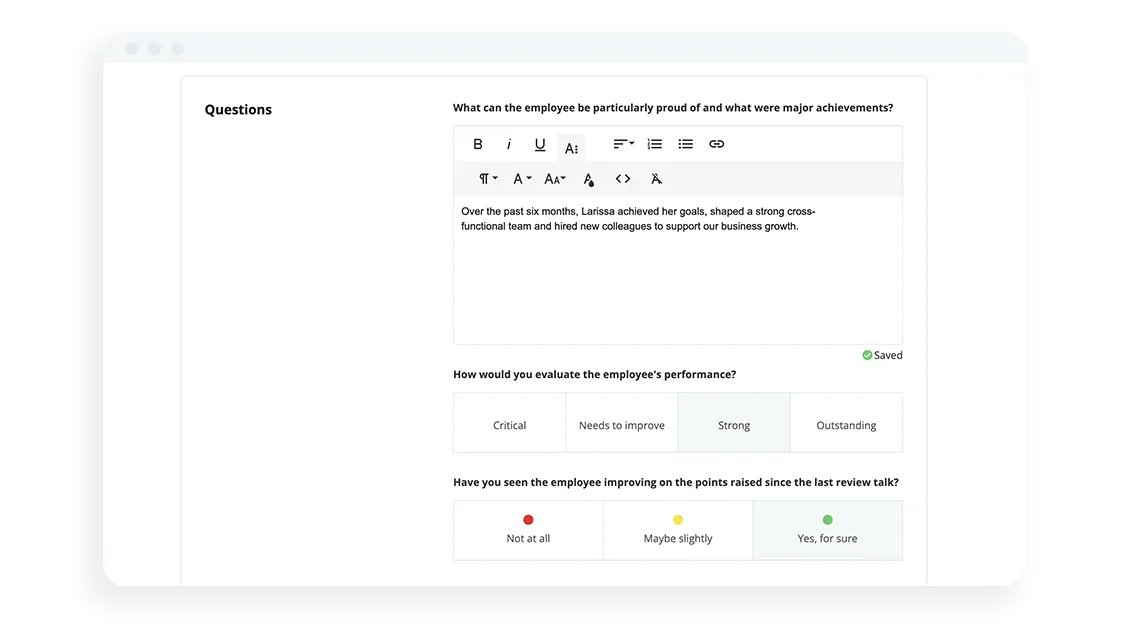
Home » Kennisbank » Employee journey: alles wat je moet weten
Employee journey: alles wat je moet weten
De employee journey is een onmisbaar punt van aandacht voor elke organisatie. Net zoals een doordachte customer journey essentieel is voor elke sluitende marketingstrategie, zo is een zorgvuldig uitgestippelde employee journey onmisbaar voor het personeelsbeleid.
In dit artikel duiken we in het concept van de employee journey. We laten zien waarom het ontwikkelen ervan onmisbaar is voor jouw organisatie. Daarnaast zullen we illustreren hoe je een employee journey effectief in kaart brengt, gebruikmakend van praktische voorbeelden.
Definitie employee journey
Het belang van de employee journey, het generatieperspectief op employee journeys.
- Voorbeeld uit de praktijk
Meest gestelde vragen
Enkele kernelementen bij de employee journey:
- Journey De reis van een medewerker binnen de organisatie, van sollicitatie tot afscheid.
- Touchpoints Momenten van interactie tussen de medewerker en de organisatie.
- Belang Versterken van werknemerstevredenheid en -betrokkenheid.
- Persona’s Profielen van ideale kandidaten voor verschillende rollen binnen de organisatie.
- Fasen Werving, onboarding , ontwikkeling, behoud, en uitstroom.

Er zijn verschillende definities van werknemerstevredenheid in omloop. Wij zetten er drie op een rij. Ieder met eigen accenten.
Het analyseren en optimaliseren van de employee journey is essentieel voor het creëren van een positieve werkomgeving en het bevorderen van personeelstevredenheid .
Door elke fase van de werknemerservaring te onderzoeken, van candidate journey en onboarding tot ontwikkeling en eventueel vertrek, kunnen organisaties knelpunten identificeren en verbeteringen doorvoeren. Dit proces helpt bij het bouwen aan een sterke bedrijfscultuur die werknemers motiveert en ondersteunt. Zo werk je gericht aan het verbeteren van prestaties en bedrijfsresultaten.
Shine the light on what’s right. Donald ‘o Clifton
Door aandacht te besteden aan de behoeften en verwachtingen van werknemers in elke fase de medewerkersreis creëren bedrijven een omgeving waarin talent kan bloeien. Dit is niet alleen gunstig voor de werknemers zelf, maar versterkt ook het employer brand en maakt het bedrijf aantrekkelijker voor potentieel toptalent.
Het inspelen op de wensen en behoeften van verschillende generaties draagt bij aan een positieve employee experience . Door rekening te houden met de diversiteit aan perspectieven en voorkeuren, kunnen bedrijven een werkomgeving creëren die alle werknemers aanspreekt.
Een effectieve benadering van de employee journey voor verschillende generaties omvat onder meer:
- Aanpassen van communicatiekanalen om te voldoen aan de voorkeuren van verschillende leeftijdsgroepen, van traditionele e-mail tot moderne sociale media platforms.
- Bieden van diverse trainings- en ontwikkelingsprogramma’s die aansluiten bij de uiteenlopende leerstijlen en carrièreaspiraties.
- Implementeren van flexibele werkregelingen die tegemoetkomen aan de verschillende levensfasen en werk-privébalans behoeften.

Door deze stappen te nemen, kunnen organisaties een inclusieve cultuur bevorderen waarin de unieke bijdragen van elke generatie worden gewaardeerd. Dit niet alleen verbetert de algemene employee experience, maar versterkt ook de loyaliteit en het engagement van werknemers op lange termijn.
Voorbeeld van optimalisatie van de employee journey
De voorbeelden in onze kennisbank zijn gebaseerd op het fictieve softwarebedrijf Brym Tech.
Bij softwarebedrijf Brym Tech werd een verbetering in de employee journey gerealiseerd door een strategische herziening van het onboardingproces. Dit begon met een grondige analyse van de bestaande procedures. Hierbij werd feedback van zowel nieuwe als langdurige werknemers verzameld.
Het resultaat was een gestroomlijnd onboardingprogramma, ontworpen om nieuwe teamleden sneller en efficiënter te integreren in de organisatie.
Het programma omvatte interactieve leermodules, mentorprogramma’s, en regelmatige check-ins, die allen bijdroegen aan een verhoogde werknemerstevredenheid en een snellere productiviteit.

Daarnaast introduceerde Brym Tech een flexibel werkbeleid, dat inspeelde op de diverse behoeften van hun werknemers. Dit beleid, variërend van thuiswerkopties tot flexibele werktijden, erkende het belang van een gezonde werk-privébalans.
Het effect was tweeledig: werknemers voelden zich gewaardeerd en ondersteund, wat leidde tot een merkbare toename van engagement en loyaliteit aan het bedrijf.
Uit welke fases bestaat de employee journey?
De employee journey omvat de gehele reis die een medewerker maakt binnen een organisatie, van begin tot eind. De fasen worden vaak onderverdeeld in:
- Aantrekken (Attract): Dit begint al vóór de sollicitatie, met employer branding en het aantrekken van de juiste kandidaten.
- Onboarding: De eerste kennismaking met de organisatie, van sollicitatie tot het inwerken.
- Ontwikkeling (Engage): De periode waarin de medewerker zich ontwikkelt, gemotiveerd blijft en presteert.
- Behoud (Retain): Acties om medewerkers tevreden te houden en te voorkomen dat ze de organisatie verlaten.
- Vertrek (Offboarding): De laatste fase, van ontslag tot het alumnibeleid.
Welke inzichten levert employee journey mapping op?
Door de employee journey te mappen, krijg je waardevolle inzichten in:
- de ervaring van de medewerker op elk touchpoint.
- knelpunten en verbetergebieden in de processen.
- factoren die bepalend zijn voor motivatie en tevredenheid.
- mogelijkheden om de employee experience te optimaliseren.
Wat zijn de voordelen van employee journey feedback ten opzichte van regulier medewerkersonderzoek?
Employee journey feedback richt zich op specifieke momenten in de reis van de medewerker, waardoor:
- gerichtere feedback wordt verzameld.
- de oorzaken van knelpunten beter te achterhalen zijn.
- er sneller op problemen kan worden gereageerd.
- de ROI op HR-activiteiten toeneemt.
Over de auteur
Meest gelezen
Customer journey
Generation journey
Patient journey
Generatie onderzoek
Wat is jouw vraagstuk?
Wij helpen je graag effectief te communiceren met verschillende generaties.
- Officient news
- Vraag demo aan
- Wat doet Officient
- Succesverhalen van klanten
- Kom werken bij Officient
- www.officient.io
- French (fr)
Wat houdt de employee journey in en hoe breng je die in kaart?
Wil je het juiste talent binnenhalen en goede cijfers halen als het op verloop aankomt? Dan kan een goed uitgewerkte employee journey je daarbij helpen. Ontdek in deze blogpost welke stappen je medewerkers doorlopen tijdens hun loopbaan bij jouw bedrijf, waarom ze belangrijk zijn en hoe je dit alles helder in kaart brengt.

Wat is de employee journey?
De employee journey, ook wel employee lifecycle genoemd, is het traject die je medewerkers afleggen vanaf hun sollicitatie bij je bedrijf tot hun offboarding. Die weg bepaalt hoe je medewerkers hun job, of specifieke elementen ervan (touchpoints) beleven. Door elk van deze stappen goed uit te werken zorg je ervoor dat je het juiste talent kan aantrekken en behouden.
Welke stappen doorlopen medewerkers in hun employee journey en waarom?
1. rekrutering.
De eerste stap in de employee journey vindt plaats wanneer een kandidaat solliciteert voor een job in jouw organisatie. Dit is dan ook de eerste kans om een goede indruk te maken. Zorg dat deze stap een positief ervaring wordt door een snel, transparant en eerlijk rekruteringsproces op te zetten. Denk daarbij goed na over hoe je stakeholders betrekt, hoe je de verschillende fases doorloopt en hoe je iedere kandidaat eerlijke feedback bezorgt. Goed begonnen, is half gewonnen.
Op zoek naar vragen voor tijdens het sollicitatiegesprek ? Onze template biedt inspiratie. Wil je je kennis van rekrutering nog verder verdiepen? In onze rekruteringsgids helpen we je samen met Amon , specialisten in rekrutering, op weg.

2. Loonvoorstel
De geschikte kandidaat gevonden? Dan volgt het loonvoorstel. Maar hoe begin je daaraan? Daar zijn verschillende opties voor: kies voor een marktconform loon op basis van het profiel, onderhandel over het loon, of maak gebruik van een salary grid die gebaseerd is op prestaties (voorbeeld van Payflip ). Let er wel op dat je verder denkt dan alleen het brutoloon. Extralegale voordelen spelen zowel in jouw voordeel als in dat van de medewerker.

3. Onboarding
Tot een akkoord gekomen? Dan gaat de employee journey door met de onboarding . Letterlijk, het aan boord brengen van nieuwe medewerkers zodat ze zo snel mogelijk vertrouwd zijn met je bedrijf, het team en de functie. Stel een vaste structuur op en giet dit in een digitale checklist. Communiceer deze tijdig naar de juiste stakeholders en zorg ervoor dat deze ook uitgevoerd worden.
Alle HR administratie tijdig en accuraat in orde brengen bij een nieuwe aanwerving? Met Officient importeer je alle data naar een digitaal en overzichtelijk medewsdossier. Met workflows communiceren we automatisch alle taken naar de juiste mensen en volg je als HR het onboardingproces makkelijk op.

4. Performance - Learning & Development
Wil je de medewerkers ook echt aan boord houden? Dan is het van belang om in te zetten op hun ontwikkeling. Door in te zetten op performance management dat sterk focust op de richting die de medewerker wil dat zijn/haar carrière uitgaat, toon je dat hun groei centraal staat. Welke vaardigheden wil de medewerker aansterken? Wil hij/zij zich verdiepen of groeien naar een andere functie?

5. Learning & Development
Welke ondersteuning of opleidingen kan je aanbieden om performance te gaan verhogen? Dat brengt ons bij een ander belangrijk deel van de employee journey: Learning & Development . Gebruik het functioneringsgesprek om hierover een gesprek te starten en formuleer concrete actiepunten op vlak van learning & development.

6. Offboarding
Aan het einde van employee lifecycle wacht de offboarding . Ook al betekent dat dat de medewerker je bedrijf verlaat, het is een belangrijke stap die je beter niet overslaat. De manier waarop je afscheid neemt van medewerkers vertelt namelijk ook veel over hoe je met hen omgaat. Om nog maar de zwijgen over de mooie kans die een exitgesprek biedt om feedback te vragen rond hoe zij hun employee journey in jouw KMO hebben ervaren.

Hoe breng je de employee journey in kaart?
Simpel gezegd is de employee journey map een visuele representatie van de organisatorische weg die medewerkers zullen afleggen, met daarop de belangrijkste stappen en momenten. Het effectief in kaart brengen van deze momenten helpt jou en je medewerkers om de employee experience beter te begrijpen en deze te optimaliseren.
- Snap waarom de employee journey map belangrijk is Bepaal doelstellingen voor zowel de employee journey in zijn geheel, als succescriteria voor de specifieke stappen. Een kaart dient om je ergens te brengen: zolang je niet weet waar je naartoe wil, heeft de kaart weinig nut.
- Snap dat niet elke medewerker dezelfde weg aflegt De employee journey zal er anders uitzien voor een software developer dan voor een sales manager. Bepaal persona’s en baseer de lifecycle daarop.
- Identificeer belangrijke momenten en bijhorende acties Welke touchpoints zijn cruciaal? Denk bijvoorbeeld aan een eerste kennismaking met het team tijdens de onboarding. Leg deze vast per persona en giet ze in een gestroomlijnd proces.
- Houd de employee journey map up-to-date Verandering is de regel, niet de uitzondering. Zorg er daarom voor dat de employee journey map meebeweegt met het traject van de medewerker.

- Onze HR Software Performance
- Resources Masterclasses
- Gratis demo
Employee journey
Wat is een employee journey.
Een employee journey is de reis die medewerkers afleggen bij een organisatie. Het begint bij het solliciteren en eindigt zodra de medewerker de organisatie verlaat. Tijdens de journey komen medewerkers verschillende dingen tegen, hebben zij ervaringen en gevoelens. Dit alles wordt samengevat in de employee journey. Neem bijvoorbeeld de onboarding. Door iedere week in gesprek te zijn met nieuwe medewerkers zullen hun gevoelens en ervaringen over het bedrijf beter worden en is de kans groter dat zij langer zullen blijven.
Is dit voor iedere medewerker hetzelfde?
De journey is voor iedere medewerker en iedere afdeling anders en is daarom ook niet statisch. De ene medewerker werkt bijvoorbeeld net bij het bedrijf en de ander al 5 jaar. Het kan zelfs per dag verschillen. Kortom, iedereen bevindt zich in een ander stadium van de ‘medewerkersreis’. Het is dan ook onmogelijk om door middel van een jaarlijkse enquête te begrijpen wat de ervaringen van medewerkers zijn. Om de employee journey zo passend mogelijk te maken is het allereerst goed om na te denken over de belangrijkste mijlpalen in de carrière van de medewerker. Bijvoorbeeld de sollicitatieprocedure, onboarding, training, ontwikkeling en offboarding. Zo kan je meer inzicht krijgen in de meest belangrijke momenten die medewerkers ervaren in de employee journey zodat je daarop kan inspelen. Later nemen we je stap voor stap mee naar de perfecte Employee Journey.
Waarom is het belangrijk om inzicht te hebben in de employee journey?
In de afgelopen jaren is het begrip employee journey steeds belangrijker geworden voor HR-afdelingen en managers. De reden hiervoor is dat steeds meer organisaties zich er bewust van zijn dat een positieve medewerkers ervaring een van de belangrijkste elementen is voor het succes van een bedrijf. Medewerkers die niet betrokken zijn, niet met plezier naar het werk gaan of stress hebben zullen ook niet het beste werk kunnen leveren. Daarnaast is het met de aantrekkende economie belangrijk om de juiste medewerkers aan te trekken en ze te behouden. Het is dus goed om er eerst achter te komen hoe je ervoor zorgt dat de juiste personen voor jouw organisatie willen komen werken en vervolgens hoe je ervoor zorgt dat zij voor jou willen blijven werken.
Hoe ga je aan de slag?
We leggen je graag stap voor stap uit hoe jij aan de slag kan gaan:
Segmenteer je medewerkers en maak persona’s Binnen een organisatie werken vaak heel veel verschillende persoonlijkheden. Zelfs per afdeling kan dit enorm verschillen. Een software-ontwikkelaar heeft waarschijnlijk een heel andere ervaring dan een salesmedewerker. Begin daarom eerst met het identificeren van je medewerkers. Segmenteer op basis van persoonlijkheden en niet op basis van demografische gegevens zoals leeftijd en geslacht. Maak voor iedere groep medewerkers een persona. Stel de reis voor iedere persona samen Nu je de persona’s voor alle groepen hebt samengesteld kan je beginnen met het in kaart brengen van de contactmomenten die de groepen medewerkers hebben met de organisatie. In onze feature ‘journey’ wordt dit automatisch vastgelegd. Begin bij het eerste contactmoment (vaak de sollicitatie) en bouw dit uit tot het moment dat zij de organisatie verlaten. Soms gaat het zelfs nog verder dan het moment dat de medewerker de organisatie verlaat. Onderaan dit artikel vind je alle momenten uit vrijwel iedere employee journey. Schrijf alle momenten per persona op en schrijf bij ieder moment op hoe je dit aan gaat pakken. Zo komt er een concreet plan waar je direct mee aan de slag kan. Het is hierbij belangrijk om klein te beginnen en groot uit te bouwen. Begin bijvoorbeeld met kleine aanpassingen voor een bepaalde medewerkersgroep en meet wat het effect hiervan was. Meten is weten, en daarom kan je, als het werkt, het daarna verder uitbouwen. Neem alle stakeholders mee in de Employee Journey Hoogstwaarschijnlijk zijn er verschillende stakeholders betrokken bij de Employee Journey van de verschillende medewerkersgroepen. Zo doet de ene medewerker het onboarding programma, maar faciliteert de ander de trainingen. Zorg ervoor dat de hele organisatie dezelfde aanpak volgt en dezelfde meetmethode hanteert bij het vragen van feedback. Zo is het veel makkelijker om alle gegevens samen te brengen en daarop bij te sturen of verder uit te bouwen. Vraag feedback! Om te weten wat de impact van iedere interactie is bij de verschillende medewerkersgroepen, is het belangrijk om feedback te vragen. Door middel van feedback leer je te begrijpen hoe je medewerkers kan ondersteunen en zie je waar de pijnpunten liggen. Met behulp van een mobiele app als Treams kan je na ieder moment in de Employee Journey een feedback verzoek versturen. Wanneer je dit door middel van een app doet is het voor medewerkers makkelijk en laagdrempelig om te antwoorden en feedback te geven. Wanneer je dit op het moment zelf vraagt krijg je de meest waardevolle, eerlijke feedback. Als je langer wacht is het niet meer top of mind en is de feedback minder waardevol. Met de feedback die je krijgt kan je de reis bijstellen of verder uitbouwen.
Momenten in de employee journey
Ondanks dat de reis voor iedere medewerker(groep) anders is, zijn er een aantal momenten die vrijwel in iedere employee journey voorkomen:
Het eerste gesprek De eerste werkdag De eerste een-op-een met de manager Het eerste voortgangsgesprek Het eerste beoordelingsgesprek De verjaardag van de medewerker Het exitgesprek
- Facility Management
- Technisch Management
- Exploitatie en beheer
- Facility services
- Huisvesting
- Zakelijke dienstverlening
- Duurzaamheid
- PSO Prestatieladder
- Onderdeel van Vebego

Stappenplan: in 5 stappen je employee journey model in kaart brengen
Om de ervaring van je medewerkers te verhogen moet je leren begrijpen hoe jouw mensen zich voelen in hun ‘reis’ binnen je organisatie. Om dat te doen moet je die reis eerst in kaart brengen. Dat is waar het employee journey model om de hoek komt kijken. In dit artikel lees je wat het model inhoudt en hoe je jouw employee journey in 5 stappen in kaart brengt.
Wat is het employee journey model?
De employee journey bevat de hele periode die een werknemer bij een bedrijf doorbrengt. Het begint al bij het eerste contactmoment, de sollicitatie, en eindigt wanneer de werknemer de organisatie verlaat. De employee journey zijn alle momenten en ervaringen die zich in deze periode afspelen. Deze reis heeft uiteindelijk invloed op de gevoelens en ervaringen van de medewerker, ook wel de employee experience genoemd. De employee journey bestaat uit zowel touchpoints en fasen en kun je in kaart brengen met een employee journey map.
Wat zijn employee journey touchpoints?
Elk belangrijk interactiemoment tussen de organisatie en de medewerker wordt in de employee journey aangeduid als een ‘touchpoint’. Dit kunnen zowel positieve ervaringen zijn, zoals een promotie, of pijnpunten, zoals een onvoorbereide onboarding.
Wat zijn de employee journey fasen?
De touchpoints van de employee journey breng je in kaart in de verschillende fasen waaruit de reis van de medewerker bestaat. Je kunt de employee journey in de volgende fasen opdelen:
- Oriënteren & solliciteren : in deze fase komt de toekomstige medewerker in contact met je organisatie en vindt het sollicitatie- en selectieproces plaats.
- Onboarding : in deze fase wordt de nieuwe medewerker klaargestoomd om bij jouw organisatie aan de slag te gaan.
- Werken bij de organisatie : dit is vaak de fase die het langst duurt; de werkzame periode.
- Exit, ofwel uitstroom : in deze fase neemt je medewerker afscheid van de organisatie.
In 5 stappen jouw employee journey model in kaart brengen
Om het employee journey model voor jouw organisatie te laten werken, moet je die voor jouw organisatie gaan vormgeven. De employee journey is voor elke organisatie uniek en het in kaart brengen van jullie medewerkersreis helpt je om inzichten te verkrijgen om de employee experience te verbeteren. Dat kan vervolgens zorgen voor meer binding , lagere uitstroom, betere doorstroom, meer instroom en uiteindelijk een betere werkgeversreputatie.
Stap 1. Segmenteer werknemers
Start het proces met het identificeren van de verschillende werknemersgroepen aan de hand van persona’s. Met een persona breng je een typische werknemer in kaart, op basis van functiegroep. Zo kun je persona’s opstellen van bijvoorbeeld een facility manager, servicedesk medewerker, receptionist en klantmanager.
Stap 2. Breng de reis van je persona in kaart
Nu je de verschillende persona’s van je organisatie kent, kun je beginnen met het in kaart brengen van de interacties die zij met je organisatie kunnen hebben. Schakel een groep collega’s in om je van de juiste informatie te voorzien. Zorg dat die groep alle persona’s bevat die je in de eerste stap hebt ontleed. Je wil namelijk input krijgen die voor alle werknemersgroepen kan gelden en die input kan tussen teams en afdelingen verschillen.
Stap 3. Feedback verzamelen
Voordat je de employee journey map definitief maakt is het verstandig om feedback te vragen van verschillende medewerkers. Let op dat je medewerkers specifiek naar feedback vraagt over de fase waarin zij zich bevinden, zo krijg je input op basis van ervaringen die nog vers in hun geheugen liggen.
Stap 4. Kies je meetmethode
Het is goed mogelijk dat verschillende fasen in de employee journey worden beheerd door verschillende teams. Denk bijvoorbeeld aan de HR-afdeling die zich ontfermt over de oriëntatie- en sollicitatiefase. Om inzichten over het gehele traject te kunnen krijgen en koppelen moeten alle betrokken teams het eens worden over de meting. Denk bijvoorbeeld aan het gebruik van een NPS (Net Promoter Score) of vormen van enquêtes. Je wil dat je consistent de fasen van de employee journey kunt meten en dat het voor alle teams duidelijk is.
Stap 5. Automatiseer het proces
Wanneer jullie het intern eens zijn over de meetmethode(s) die gebruikt gaan worden, is het tijd om te kijken naar manieren om het verkrijgen van feedback te automatiseren. Elke keer handmatig een enquête versturen wanneer iemand een cursus afrondt of promotie maakt, is voor niemand haalbaar. Zorg er dus voor dat er een systeem gebruikt wordt dat automatisch een enquête verstuurt naar een medewerker die een bepaalde mijlpaal bereikt.
Voorbeelden van employee journeys
De employee journey kan er voor jouw organisatie anders uitzien dan voor een andere. Zo hoort het ook! Je wil hier je eigen werk- en medewerkerscultuur weergeven en deze uitwerken zoals het voor jullie werkzaam is.
Het onderstaande voorbeeld van Appical laat zien hoe zij de eerste fasen van de employee journey weergeven. Deze organisatie heeft ervoor gekozen om de grote fasen van de employee journey los te koppelen en daar afzonderlijke visualisaties voor te maken. Deze gaat dus specifiek over de ‘nieuwe medewerkers’.

In het laatste voorbeeld hier onder zie je de employee journey gevisualiseerd als een pad dat je volgt. Deze heeft alle hoofdfasen in één illustratie weergegeven, maar behandelt minder concrete touchpoints. De journey laat daarentegen wel belangrijke momenten zien in de vorm van keywords. Zo staat het woord ‘imago’ tussen het balkje ‘werving’ en ‘sollicitatie. Want inderdaad, imago is een element dat ervoor kan zorgen dat een potentiële kandidaat bij jouw bedrijf solliciteert.

Het opstellen van je unieke employee journey map is een belangrijke stap in het verkrijgen van inzicht om de medewerkerstevredenheid te kunnen verbeteren. Door actief de verschillende fasen van de journey te meten kom je erachter in welke fase je de binding met je medewerkers verliest en waar je dus moet investeren. Het vragen van feedback zorgt er bovendien voor dat je medewerkers zich meer gehoord voelen.
Heb je advies of hulp nodig bij het opstellen van een employee journey model en map? Contacteer onze experts via deze link .

Zo maak je een succes van de hybride werkplek

Het ideale werkplekconcept in en na 2020 (deel 2)

Wat is het nieuwe werken? Uitleg, tips en voorbeelden
- Mijn gegevens
- Registreren
- HR Academy.nl
- HR Wetten en regels.nl | HR Premium.nl
- HR Rapporten.nl

Employee benefits Achtergrond
- Achtergrond
- Persberichten
- 17 januari 2023
- Lonneke Gillissen (RBLG)
8 tips voor een succesvolle employee journey
Blije medewerkers blijven bij je en zorgen voor blije klanten. Alle reden voor organisaties om te investeren in de ideale employee experience. Daarom hier tips en voorbeelden voor de drie fases van de employee journey.

Customers will never love a company until the employees love it first. Deze quote van leiderschapsexpert Simon Sinek weerspiegelt perfect de visie van hoofd strategieconsultant Sascha Becker van bureau PROOF en Interim Professional Change & Employee Experience Wenda Bolink over de manier waarop organisaties zouden moeten omgaan met hun medewerkers. “Medewerkers zijn nog belangrijker dan je klanten,” stellen zij dan ook.
“Als je organisatie jou in staat stelt elke dag succesvol te acteren, voel je je beter en doe je nog beter je best. Een klant voelt dat. Dat betekent dat wie focust op de belangrijkste asset van de organisatie, de medewerker, focust op het creëren van business value.” Bolink en Becker maken zich dan ook hard voor het 'creëren van een awe-inspiring employee experience'. “Een organisatie heeft een bepaalde cultuur. Als organisatie moet je zoeken naar dát talent dat exact daarbij past. Talent met de juiste mindset.”
Schrijf je in voor de HR Praktijk-nieuwsbrief
HR Praktijk informeert en inspireert HR-professionals. Met scherpe nieuwsselecties en verhelderende achtergronden. Nieuwsbrieven op dinsdag en donderdag zorgen ervoor dat je snel op de hoogte bent. Weet wat er speelt in HR. Word lid van HR Praktijk.
War for talent
Aandacht voor de totale employee journey levert veel op. Meer omzet, minder verloop en minder verzuim bijvoorbeeld. Bovendien ben je aantrekkelijk voor nieuw talent. Gecombineerd met een toenemende wereldwijde schaarste aan talenten, maakt dat iedere organisatie gedwongen is te investeren in de employee experience. Maar hoe pak je dit aan? Bolink: “Een sterke reputatie begint intern. Neem daarom allereerst je bestaande talenten mee in je plannen en zorg voor intern alignment. Binnen moet je namelijk waarmaken wat je buiten belooft.
“Voor je klanten maken je medewerkers het verschil. Een sterke reputatie zorgt voor tevreden en loyale klanten. En dat levert de organisatie op de lange termijn business value op. Neem daarbij een voorbeeld aan de customer journey van de marketingprofessional: zet als organisatie de employee journey structureel op de agenda en speel voortdurend in op de wereld in verandering; de wisselende wensen, behoeftes en trends.”
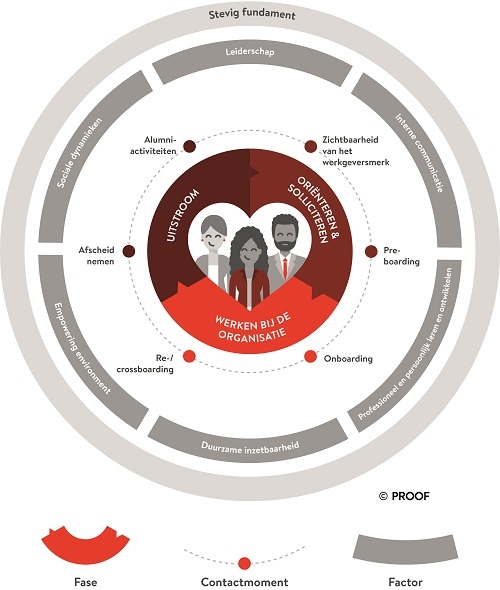
Employee journey
Zijn de interne medewerkers aligned, dan volgt het aantrekken van nieuw talent – de eerste fase van de employee journey, die al begint voordat iemand in dienst is. Becker: “De eerste indruk is van groot belang voor je positionering als werkgever. Schets daarom een beeld van het werken bij je organisatie dat klopt met je identiteit en dat aansluit bij de corporate uitstraling en marketinguitingen. En vertel wat je je potentiële medewerkers te bieden hebt: wat je propositie is aan nieuw talent, de Talent Value Propositon. Vertel vervolgens tijdens het sollicitatieproces hoe mensen in jouw organisatie met elkaar omgaan, waar het bedrijf voor staat en wat de sollicitant en de werkgever van elkaar kunnen verwachten. Het gaat om wederkerigheid.”
De tweede fase vangt aan vanaf het moment dat het talent in dienst is. “De eerste werkdag zegt al veel over het verloop van het dienstverband,” vervolgt Becker. “Zorg voor een goed ontvangst en wees er zeker van dat alles voor je nieuwe collega is geregeld. Zorg ook voor begeleiding daarna: betrek je medewerkers proactief bij relevante ontwikkelingen binnen de organisatie, zodat ze kunnen meedenken en actief een bijdrage kunnen leveren.” Uiteraard kan een medewerker na verloop van tijd besluiten te vertrekken, fase drie. “Ga ook dan actief de dialoog aan. Vraag wat de medewerker vond van zijn employee experience en de organisatie, wat hij eraan waardeerde en waar hij verbeterpunten ziet. Zorg dat hij de organisatie met een goed gevoel verlaat, zodat hij ambassadeur blijft.”
Boostcamp Binden en boeien met de optimale employee journey

De grootste uitdaging van de huidige arbeidsmarktproblematiek is het behouden van talent. Een goed doordachte employee journey is daarbij key. In deze boostcamp leer je aan de hand van concrete praktijkvoorbeelden hoe je hiermee aan de slag kan.

HR als voortrekker
Van het creëren van een sterk werkgeversmerk tot onboarding, van leiderschap tot beloning, omdat HR bij elke fase van de employee journey betrokken is, moet ze een voortrekkersrol vervullen bij het bevlogen maken en houden van medewerkers. Bolink: “Dat kan door de intrinsieke motivators van medewerkers te ondersteunen, zoals hun behoefte aan autonomie, om bij te dragen aan het doel, en om hun talenten in te zetten en te verbeteren zodat ze de beste versie van zichzelf zijn en hiervoor erkenning te krijgen. Daarvoor is het belangrijk dat je als organisatie een sterk verhaal hebt en je belofte kunt nakomen: weet waarvoor je staat en gaat als organisatie. Wat is je bestaansrecht, identiteit en ambitie, en wat heb je te bieden?”
HR moet daarom zorgen voor commitment van de top. Becker: “Dat betekent dat de CHRO onderdeel van de board is. Verdiep je in de business, word er onderdeel van, praat met de CEO over waar je als organisatie naartoe wilt werken. Wat is de korte- en langetermijnvisie, wat heb je nodig, tijdelijk en op de lange termijn, en wat betekent dat voor de manier waarop je tegen resources en mensen aankijkt?
“Zorg als HR-directeur voor een people vision, weet wat de kijk van de organisatie is op de medewerkers. Heb je dat commitment, werk dan samen met de communicatieafdeling aan de verdere invulling en uitwerking van de employee journey. Bij een goede samenwerking kunnen HR en communicatie elkaar versterken en aanvullen, waarbij communicatie faciliteert en HR nadenkt over de producten die in de etalage kunnen worden gezet en deze uiteindelijk gaat vormgeven op basis van de behoeftes, wensen en eisen van de organisatie en medewerkers. Daarbij gaat het om de visie, niet om de tools. We moeten dus afstappen van kortetermijntooling.”
Onboarding met 100-dagen plan

Normaal gesproken is effectieve onboarding van nieuwe collega’s al een uitdaging. Maar in deze tijd, waarin veel organisaties remote en hybride (gaan) werken, vraagt het extra inspanningen. Want hoe leert een nieuwe medewerker vanachter zijn bureau thuis de cultuur van jouw organisatie kennen? Hoe pak je dat aan en waar moet je dan allemaal rekening mee houden? Hoe vertaal je het huidige onboardingsprogramma naar de remote of hybride praktijk? In deze boostcamp ga je er concreet mee aan de slag.
Optelsom contactmomenten = employee experience
Organisaties kunnen aan een zestal factoren werken om de employee experience te verbeteren: Leiderschap, Interne communicatie, Duurzame inzetbaarheid, Leren en ontwikkelen, Empowering environment, en Social dynamics. In de journey heeft een organisatie een groot aantal contactmomenten met haar talenten. In fase 1, oriënteren en solliciteren, is dat zichtbaarheid van het werkgeversmerk en preboarding. In fase 2, werken bij de organisatie: onboarding en cross-/reboarding. In fase 3, uitstroom: op goede wijze afscheid nemen en het organiseren van alumni-activiteiten. De optelsom van de contactmomenten is de employee experience. (zie model)
Fase 1: oriënteren
De eerste fase betreft het oriënteren en solliciteren van een potentiële medewerker. Die kan met een organisatie in contact komen door een bezoek aan de werken bij-site. Ook belangrijk zijn de inzet van social media, beurzen, advertenties en posters.
Case oriënteren: Dura Vermeer
Het van oorsprong traditionele bouwbedrijf Dura Vermeer wil tot de top 3-vernieuwers in de bouw behoren. Daarvoor zoekt zij starters en professionals Bouw en Civiele Techniek. Een schaarse doelgroep en dus een uitdaging. Met een sterk werkgeversmerk wil zij deze talenten aantrekken. In de campagne ‘Maar wat kan jij?’ zet PROOF projecten met een landelijke uitstraling centraal en zoomt in op het unieke karakter. In de uitingen maakt ze een onderscheid tussen starters en professionals. Het verhaal van Dura Vermeer vertelt ze via posters, banners, de werken bij-site en de vloggers ‘De Durvers’ die op social media projecten belichtten. Maar ook met merchandise in de vorm van speciale T-shirts en de Dura Vermeer-leaseauto voor degenen die bij hen aan de slag gaan. Maar wat kan jij? is zo de succesvolle eerste stap naar een compleet afgestemde employee journey.
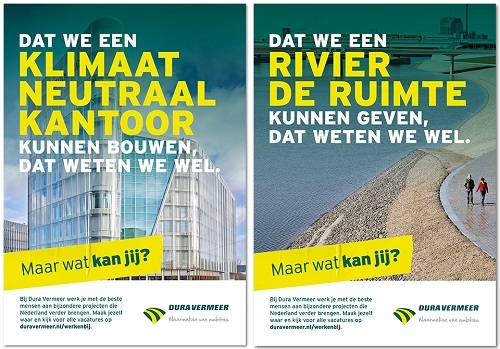
Fase 2: werken bij
Eenmaal aan boord is het belangrijk dat de nieuwe medewerker continu in zijn keuze wordt bevestigd. Dat betekent dat het verhaal van de organisatie betekenis krijgt en in het vervolg van zijn journey wordt onderschreven. Door een inspirerende werkomgeving met slimme systemen en structuren. Met een prettige cultuur die zijn prestatie stimuleert. Door de top en leidinggevenden die het goede voorbeeld geven. En doordat hij zich continu kan blijven ontwikkelen. Zodat de nieuwe medewerker zijn bijdrage wil en kan leveren. Zo versterken medewerker en werkgever elkaar.
Case werken bij: VGZ Zorg
De coöperatie VGZ, tweede zorgverzekeraar van Nederland, richt zich tot PROOF met de vraag hoe ze voor een aligned workforce kan zorgen, met de medewerkers als trotse en betrokken ambassadeurs. Om dit te bewerkstelligen, betrekt PROOF allereerst de medewerkers bij de nieuwe positionering Zinnige Zorg, want alleen als zij weten wat Zinnige Zorg inhoudt, kunnen ze daaraan bijdragen. Binnen beginnen is buiten winnen. Te starten bij de top. Daarbij worden vier fases gedefinieerd: luisteren, beseffen, waarderen, uitdragen. Sneller dan verwacht is de organisatie er klaar voor om Zinnige Zorg ook expliciet naar buiten toe te claimen. Zelfs de externe pay-off wordt aangepast.
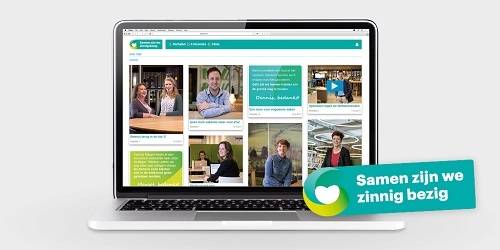
Fase 3: uitstroom
Om welke reden een medewerker de organisatie ook verlaat, je wilt dat hij dit met een goed gevoel doet. Het is daarom belangrijk om goed uit elkaar te gaan. Ook kan de organisatie bepalen of, en zo ja hoe, zij in contact wil blijven met oud-medewerkers. Een medewerker die zich betrokken en gewaardeerd heeft gevoeld, zich verbonden voelt met het verhaal van de organisatie en de kans heeft gekregen daaraan mede vorm te geven, blijft een goede ambassadeur – en potentieel een waardevolle relatie – ook als hij is uitgestapt.
Becker: “Om welke reden iemand ook vertrekt, bij elk afscheid gaat het om respect. Als de vertrekkende medewerker het gevoel heeft dat er op een respectvolle manier met hem is omgegaan, is het een goed afscheid.” In hun boek ‘ The employee journey’ geven Wenda Bolink en Sascha Becker antwoord op de vraag hoe je als organisatie talent optimaal kunt benutten.
Tips & tricks
- Breng met de employee journey de belangrijkste contactmomenten in kaart en ontdek waar de employee experience kan worden verbeterd. Dit helpt HR en communicatie om prioriteiten te bepalen.
- Gebruik de belofte aan medewerkers als vertrekpunt voor de gehele employee journey. En zorg ervoor dat deze belofte in elk contactmoment wordt bevestigd.
- Een belangrijke randvoorwaarde: commitment en support van de top. Die moet geloven in het investeren in de employee journey en hem prioriteit geven, anders heeft het weinig zin om aan de slag te gaan.
- Zorg dat de basis op orde is. Je kunt nog zo’n mooie belofte aan medewerkers formuleren, die is niets waard als je hem niet kunt waarmaken.
- Zorg voor een heldere people vision: zet je medewerkers op nummer één, twee en drie. Dan pas de klant. Het is de medewerker die de klant op één zet.
- Benader je organisatie als een vijfsterrenhotel, je medewerkers zijn je gasten. Hoe zou je je gasten behandelen?
- Bouw aan een continue samenwerking tussen HR, communicatie, de business en je leidinggevenden om de people vision tot leven te brengen.
- Begin binnen. Neem eerst je bestaande talenten mee in je plannen en zorg voor intern alignment: binnen moet je waarmaken wat je buiten belooft.
Wenda Bolink is Interim Professional Change & Employee Experience , Sascha Becker is bij PROOF werkzaam als head of strategy en programmamanager. Zij houden zich bezig met de strategie voor- en de implementatie van trajecten die (in)direct bijdragen aan een optimale employee experience.

Producttips
Gerelateerde artikelen.
- 5 jun 2024 ‘Beste baas, ik wil een tussenjaar’ - Wat werkgevers moeten weten over onbetaald verlof
- 27 mei 2024 Tuinbouwbedrijf hoeft geen belasting te betalen over gratis lunches - zijn onderdeel van arbobeleid
- 21 mei 2024 40-urige werkweek voor veel Nederlanders achterhaald
- 16 mei 2024 Deze punten uit het hoofdlijnenakkoord zijn van belang voor HR
- 8 mei 2024 Zo voorkom je zonder extra kosten stress en vermoeidheid bij jonge ouders
- 8 mei 2024 Voorwaarden bonus niet goed vastgelegd - Dure les voor werkgever
- © Sijthoff Media. Auteursrecht voorbehouden.
- Algemene Voorwaarden
- HR Praktijk is een merk van Sijthoff Media
Volg HR Praktijk
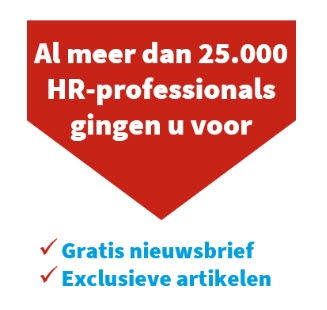
Employee journey mapping: everything you need to know
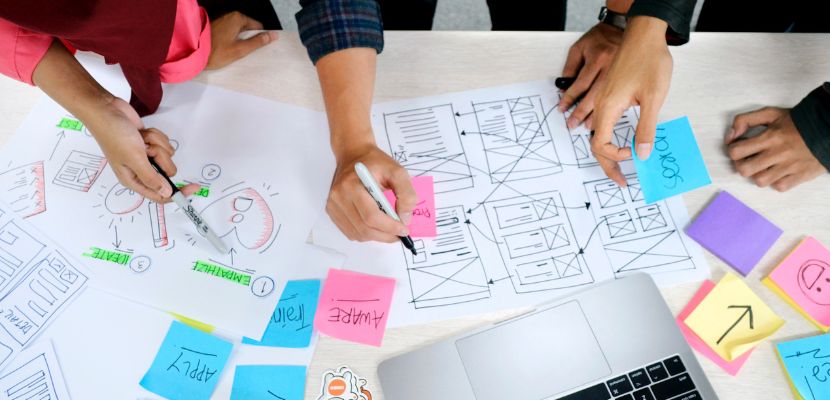
The experience that your employees have in your organization has a direct impact on your business. The better the experience that you offer at each touchpoint in the employee journey, the more likely they are to become happy, engaged and productive members of your team. And given the recent shift in employee expectations and the increasing demand for improved working environments, the employee experience has never been so important. In fact, according to a 2021 report by Isolved, 92% of HR leaders said that employee experience is now a top priority for them .
The first step in improving your employee experience is understanding the entire employee lifecycle. And this is where employee journey mapping becomes a vital resource to have in your HR toolbelt. An employee journey map can help you better understand the experience your workforce has at each stage of their time at your company. That way, you can identify what you need to improve in order to offer the best possible experience. This, in turn, will help you attract and retain loyal, engaged and productive talent in your business.
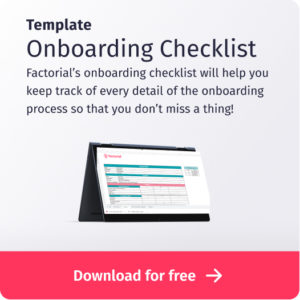
Table of Contents
What is the employee journey?
The employee journey, also known as the employee lifecycle , covers every touchpoint that an employee has with your company . The journey begins when a candidate applies for a position with your company and ends when an employee leaves their job. The primary stages of the journey relate to attraction, recruitment, onboarding, retention, development and separation.
Notable experiences within the earlier stages of the employee journey include an employee’s first job interview, their first day at work, and their first performance review. When an employee has a good experience at each of these initial touchpoints, it sets them up to have a positive overall experience at your company. And this is the first step in making a good impression so that a new employee is motivated to become an engaged and productive member of your workforce.
What is employee journey mapping?
Employee journey mapping is the process of creating a defined timeline that covers each stage of the employee lifecycle. The aim is to identify the ‘ moments that matter ’ for employees so that you can improve each touchpoint and offer the best possible employee experience. That way, you can build an engaged, loyal and productive workforce.
The most important aspect to consider when you map your employee journey is the perspectives of employees at each stage of their lifecycle.
How many applicants accept your invites to interviews? What percentage of candidates accept your job offers? How do new employees feel about your onboarding processes? Do employees feel they are being offered enough training and development opportunities? Do they get valuable feedback from their performance reviews? What are your retention levels like?
In terms of separation, at which stage of the employee journey do leavers tend to become disengaged? Why do employees leave your company? What would they improve about your employee experience? Are they happy with your organization’s management style?
You can find answers to these questions by collecting feedback at each touchpoint of the journey . For example, during onboarding and performance reviews, by sharing employee satisfaction and engagement surveys, and by conducting exit interviews. You can also find valuable feedback from sites like Glassdoor where ex-employees are more likely to be honest about their experience with you and what they would change.
What are the benefits of employee journey mapping?
There are a number of reasons why it’s important to map the employee journey:
- The biggest benefit is that it provides you with a visual representation of the employee lifecycle that helps you understand how your staff experience every interaction they have with your organization. This provides you with the insights you need in order to improve each touchpoint in your model so that you can offer the best possible experience to employees. And this is vital because the better the experience that employees have with you, the more likely they are to remain at your company and become productive and engaged members of staff .
- By gathering the right employee feedback at every stage of their lifecycle you can identify at which points employees feel engaged and disengaged . In other words, you can determine what you’re doing well, and what you need to improve in terms of your internal processes. You can also collect valuable information to help you define the experience that you can offer, helping you create job descriptions that give candidates a clear understanding of what their role involves .
- The feedback you collect from employee satisfaction surveys and performance reviews can help you design learning and development strategies that encourage your employees to build on their skills and realize their full potential.
- Above all, by implementing measures to improve your overall experience, you can improve your reputation as an employer and attract the talent you need to build a loyal and driven workforce .
What steps are included in the employee journey?
There are numerous stages in the employee journey. Generally speaking, though, they can be broken down into 6 specific phases. These are attraction, recruitment, onboarding, retention, development, and separation.
It’s important to understand what employees expect at each of these stages. That way, you can balance their expectations with those of your organization.
We are now going to look at each of these 6 phases. For each stage of the journey, think about the experience that your employees have, what they might be feeling, and whether there are any potential barriers that you need to address.
This is the first stage of your employee journey, and it is where potential applicants are first exposed to your employer brand . This is a vital stage because if a candidate’s first impression of your organization is negative then they are unlikely to accept a job offer from you.
Think about the following:
Where do you advertise your job openings? How can candidates apply for positions? Do you communicate directly with all applicants? Do you promote the value you have to offer as an employer?
Overall, though, the best way to improve this initial stage of the employee journey is to focus on building your brand and reputation. Think about what you have to offer potential applicants and whether your EVP is strong enough to attract candidates with a genuine interest in working at your company.
Recruitment
The next stage of the employee journey is recruitment. This is when an employee passes from applicant to employee, and the experience they have at this stage has a big impact on the opinion they form of you as an employer .
The best way to improve this touchpoint is to use the right tools to streamline your recruitment processes so that you can focus more on building positive experiences. It’s also important to create clear and informative job descriptions so that applicants understand their roles and your expectations.
Here are a few tips to consider:
- Be specific about the skills and abilities you are looking for so that nobody wastes their time.
- Involve your existing employees. Encourage them to refer potential candidates and to share opinions on the skills new team members should possess. Ask managers to sit in on interviews.
- Offer attractive benefits and compensation to keep you competitive as an employer and help you attract top talent.
Once you have hired a new employee, the next stage in their employee journey is onboarding and orientation. This is where you give employees more information about their roles and responsibilities. This is also where you share all the tools and resources they will need to perform their duties. Plus, you should be giving new hires the opportunity to ask important questions at this stage. All this will help employees understand how to blend into your company culture.
During this stage, make sure you share enough information so that new hires understand your goals, attitudes, and values as a company . You want them to understand the role they will play in helping to build your organization. Check out this onboarding checklist for more information about this stage of the employee lifecycle.
Here are some tips to help you make this stage a positive experience:
- Make employees feel welcome and provide them with as much information as possible.
- Be as clear as possible about your expectations .
- Provide as much training as possible.
- Conduct regular check-ins to see how new employees are settling in and if they are integrating well with the team.
Once you’ve got your new hires settled in and ramped up, you need to make sure they are happy enough to stay at your organization. This is a vital stage of the employee journey because if your employees are not satisfied and decide to leave, then the time and money you invested in sourcing, hiring and onboarding them will be wasted.
Essentially, this is all about doing what you can to provide a working environment where your employees are happy and motivated.
There are a few strategies you should implement to improve your chances of nurturing happy employees:
- Focus on building relationships with your employees.
- Foster a culture of respect and transparency .
- Promote open lines of communication amongst all team members.
- Seek out employee feedback and measure team morale frequently.
- Understand what motivates each of your employees.
- Implement a rewards and recognition program to keep your employees motivated.
- Build a nurturing and supportive culture that promotes employee satisfaction and engagement.
Development
Another vital touchpoint in the employee journey that will help you retain employees is offering opportunities for them to develop their skills . It’s important to make your employees feel valued and challenged and that they have a clear career path in your organization. That way, they won’t be tempted to seek opportunities for professional development elsewhere.
Here are a few tips to help you improve this stage of the journey:
- Meet with employees regularly to discuss their goals .
- Regularly assess the knowledge and skills of all your employees.
- Provide regular training opportunities .
- Encourage external learning and reward employees who learn in their own time.
- Get your managers to work with employees directly to help them prioritize the areas that require further development.
- Encourage your team members to be responsible for their own development .
The final stage of the employee life cycle is separation, also known as offboarding. This is what happens when an employee leaves your company. This might be due to retirement, new employment, or personal reasons. It also includes employees who you lay off .
Whatever the reason for leaving, it’s important to provide a positive experience at this final stage. Aside from anything else, when a team member leaves, it has an effect on your other employees. And this can impact your overall employee journey.
- If an employee resigns, conduct an exit interview with them so that you can understand why they are leaving. Ask for open and honest feedback . Is there anything that you could have done to improve their experience with working with you?
- If you fire an employee, make sure you do it the right way . This includes following an established dismissal process, giving enough notice, and providing them with a clear and concise termination letter .
Best practices for creating an employee journey map
Now that we’ve discussed the various stages of the employee lifecycle, let’s finish by taking a look at a few best practices for creating an effective employee journey map.
Above all, though, the best way to improve your employee journey is to engage with your employees at every touchpoint of their time with you so that you can better understand their needs and provide them with the best possible experience.
Segment your employees and create employee personas
Most companies will have a variety of different employee personas . These will depend on roles, departments, and level of seniority, among other factors. It’s important to keep this in mind when you begin the process of employee journey mapping, as the experience an executive has at your company is likely to be very different to the experience of an intern, for example. To the same effect, a finance administrator is likely to have a very different experience than an external sales rep. Make sure you take into account each and every individual experience at your company.
Start by identifying your employee segments . Once you’ve done that, create a typical employee persona for each segment. Make sure you consider all the interactions each persona has with your organization. Are there any processes that might frustrate them currently? Are there any barriers preventing them from having a positive journey in your company? In terms of employee feedback, are there any specific departments where employees consistently report a lack of engagement or satisfaction?
Identify touchpoints that matter in the employee journey
When you create your map, make sure you identify all the moments that matter . In other words, the touchpoints that employees are most likely to remember when they leave your company. These usually include a candidate’s first interview with you, a new employee’s first day, and their onboarding experience. Memorable experiences also include performance reviews and any support they get for their professional development.
Did onboarding go smoothly? Did they receive regular communication from you? Are you providing enough information for employees to blend seamlessly into their new roles?
The more memorable touchpoints you include in your map, and the more you focus on the employee experience at these touchpoints, the more complete your visual representation of their journey will be.
Create metrics for tracking your employee journey
Once you have created your employee journey map, you need to implement a strategy for measuring and monitoring each stage of the journey .
Make sure you define clear KPIs and objectives for each stage of your employee journey. Obvious indicators include retention and turnover, but you should try to include goals that specifically target the employee experience. For example, you could set goals for improving your onboarding process, the channels you use for collecting employee feedback, or the training initiatives you offer employees. You could also implement regular pulse surveys to understand the experience your employees have at each stage of their journey. Any metrics related to onboarding, wellness and engagement are essential for understanding the employee experience.
Use the right tools to manage and collect employee feedback
The best way to ensure you offer the best employee experience is to use the right tools and software. The software you use should support you at each stage of the employee life cycle . Firstly, you need effective recruitment and onboarding software and an integrated employee portal. Secondly, you need tools to help you keep track of employee performance and support your L&D programs. Thirdly, you need tools for employee recognition, as this has a huge impact on building a positive, nurturing culture. Finally, you also need a platform to conduct employee surveys and appraisals so that you have access to honest and transparent feedback at each stage of the employee life cycle.
Factorial’s all-in-one solution supports you at each stage of the employee life cycle, including attracting, recruiting, engaging, retaining, and developing employees. Streamlining and automating all your HR processes with Factorial has a huge impact on improving the employee journey.
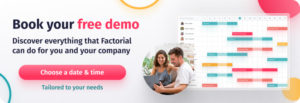
Focus on continuous improvement
Your employee journey map should be an ongoing process . That means you need to monitor your employee experience regularly and update your map periodically. Send out regular employee surveys to keep your finger on the pulse of how your employees feel. When you identify problem areas, implement measures to improve them.
Most importantly, make sure you are as objective as possible when you create your map. Don’t design the journey you want employees to have – create the journey they actually have. This means listening to what your employees have to say by collecting feedback at each stage of the employee lifecycle. After all, the best people to describe your employee journey are your employees themselves. They are your most important asset when it comes to designing a journey map that improves your employee experience.
Related posts

Shift Swapping: How to reschedule, trade, and swap employee shifts the right way
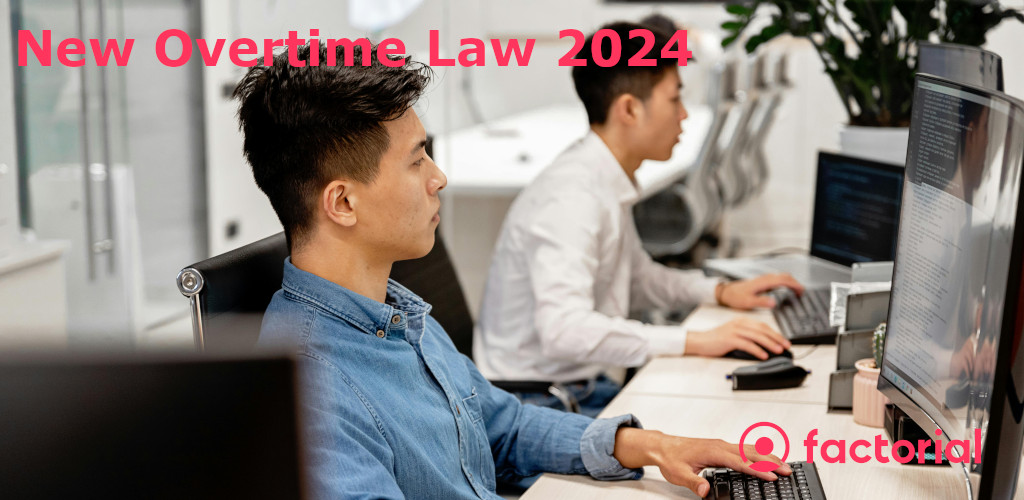
New Overtime Rules 2024: Everything Employers Need to Know

Focus on your people, not paperwork
Get a quick demo of our HR software to see how Factorial can help your business grow.
Book a free demo

AI-driven Job House, Job Matrix & skill taxonomy
Performance
Evaluations, 1:1’s, feedback and goals
Career and growth opportunities
Traditional surveys, Pulse surveys and eNPS
All about our security and GDPR protocols
Integrations
Integrate with HRIS, SSO, MFA and Calendar
Our working method
In 5 steps to data-driven HR
Return on investment
Business value and return on investment
HR knowledge hub
E-guides, webinars and templates
Implementation & support
Implementation tracks, videos and webinars
Customer stories
Find out how our customers are using Learned
Articles for HR Professionals and Managers
Employee journey: a complete guide
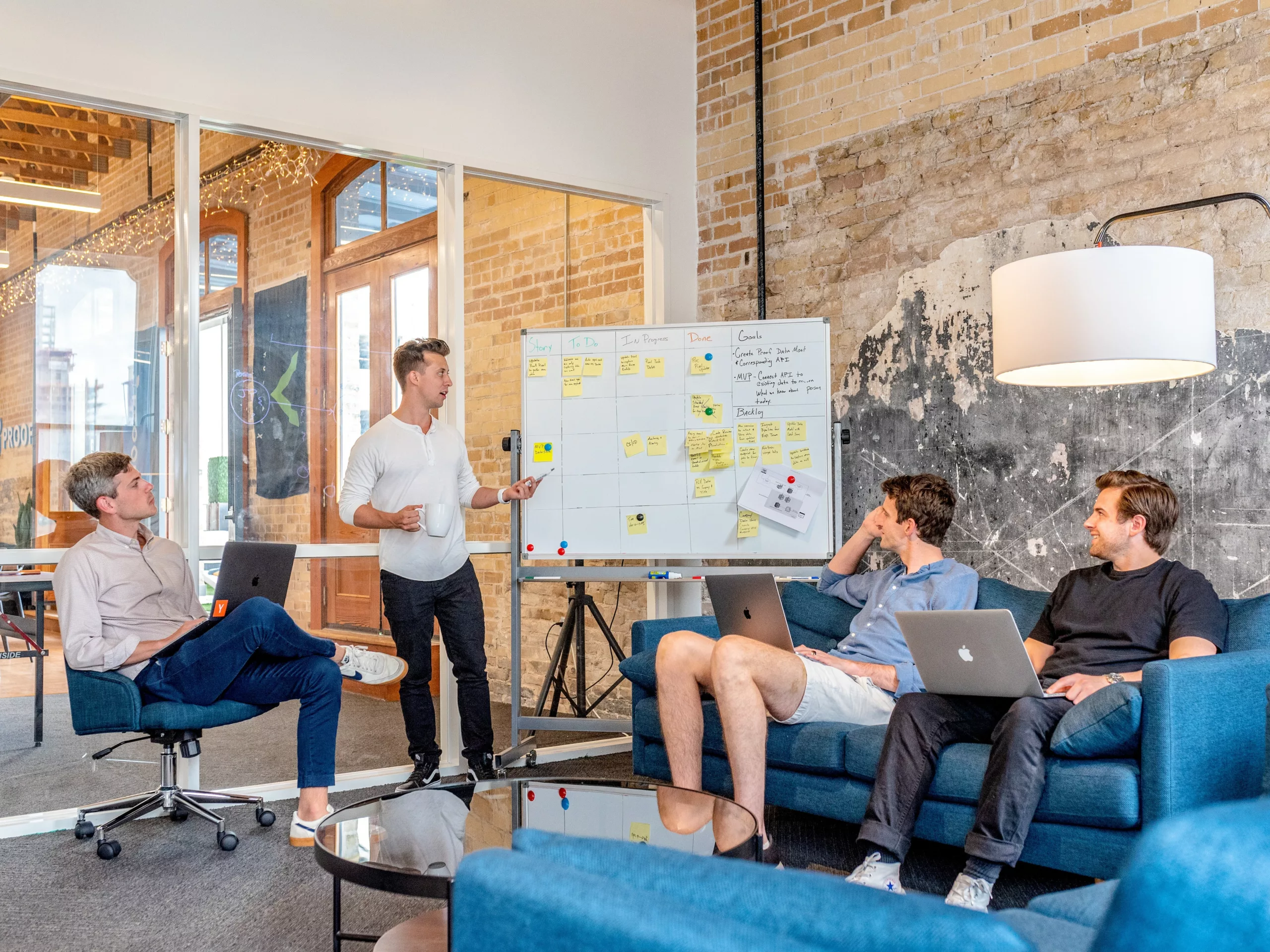
Creating an engaging and supportive employee journey is an essential strategy for companies striving for high employee satisfaction, engagement and overall business performance. This journey, which encompasses an employee’s entire experience with an organization, from initial introduction to departure, is complex and multifaceted. Managing the employee journey requires insight, strategy and a deep focus on both the big picture and the fine details of employee interactions.
What is an employee journey?
The “Employee Journey” refers to the complete journey an employee takes within an organization, from first contact to the moment they leave. This term encompasses every interaction, experience and moment of contact employees have with the company, playing a crucial role in both their professional development and overall satisfaction with the work environment.
Examples of these contact moments:
- the job interview;
- the first day of work;
- team meetings;
- organizational meetings;
- conversations such as the benefits conversation, onboarding conversation, assessment conversation, absenteeism conversation, coaching conversation and exit conversation.
The focus is on all contact moments, both planned and spontaneous, that foster conversations about development, workload, autonomy, etc. These moments contribute positively to the employee experience and include alumni meetings and formal talks. This line is continued when employees leave. Leavers can return (boomers) or become customers, confirming: he who does good, meets goodness.
By understanding and optimizing the employee journey, organizations can not only foster a positive work culture but also significantly improve their ability to attract and retain top talent.
Why is this trip important
A well-structured employee journey is important for both employees and employers. For employees, it creates a meaningful experience that can lead to increased engagement and performance. For employers, a positive employee journey can lead to improved employee satisfaction, higher retention rates and a stronger employer brand. An engaged employee is not only more productive, but also contributes to a positive company culture and reputation. With our real-time employee engagement insight e-guide, discover how to measure, interpret and improve engagement so you retain the best talent and save costs. Download the free e-guide right away!
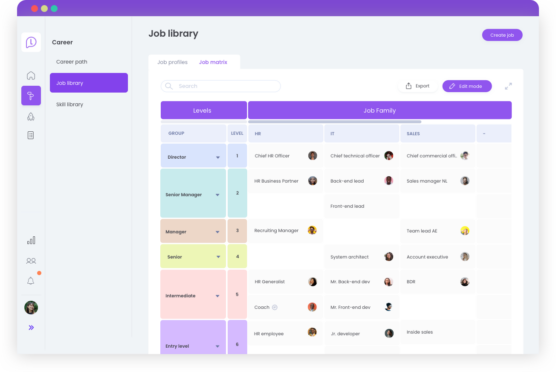
With Learned’s Career Framework, you make evaluations objective and advancement opportunities transparent. By doing so, you will ensure engaged employees and will reduce turnover.
How to create an employee journey
Understanding an employee journey is a process that helps organizations understand and optimize their employees’ experiences throughout their careers within the company. This process is essential to creating a positive work environment and promoting employee satisfaction and engagement. Here are some steps to understanding an employee journey:
1. Define the stages of the employee journey
Identify and define the key stages an employee goes through, from recruitment and selection to onboarding, development, retention, and ultimately leaving the organization. This provides a clear overview of the entire trip.
2. Identify touchpoints and interactions.
Define the different touch points – the moments of interaction between the employee and the organization – within each stage of the journey. These could include job interviews, training sessions, performance reviews, or team meetings.
3. Collect and analyze data
Use surveys, interviews, and feedback sessions to collect data on employee experiences at various touchpoints. Analyze this data to gain insight into what is going well and what can be improved.
4. Create personas
Develop personas that represent different types of employees within the organization. This helps to better understand the needs, expectations and experiences of diverse groups of employees.
5. Map the employee journey
Use the information gathered to create an employee journey map. Highlight key stages, touchpoints, and employee emotional experiences at each point. This makes it easier to oversee the entire journey and identify areas that need attention.
6. Implement improvements
Use the insights gained from the employee journey map to make targeted improvements. This can range from optimizing the onboarding process to providing personalized development opportunities.
7. Monitor and iterate
Understanding the employee journey is not a one-time project, but an ongoing process. Continue to collect feedback regularly and analyze the impact of changes made. Be prepared to adjust your approach based on new insights and changing circumstances.
By following these steps, organizations can develop a thorough understanding of the employee journey and work proactively to improve the employee experience. This not only leads to higher satisfaction and engagement but also contributes to the overall performance and success of the organization.
Example employee journey
Let’s explore the employee journey through a fictional character, Emma, who begins her career at an innovative tech company called “FutureTech.”
Phase 1: attraction and recruitment
Emma first encounters FutureTech at a career fair. She is immediately intrigued by the company’s mission and culture. After following FutureTech on social media and reading positive employee reviews, Emma decides to apply for an open position as a junior software developer.
Phase 2: application and selection
Emma applies online and receives an invitation for an interview within a week. The application process is transparent and communicative, with clear information about the next steps. After a series of interviews and a technical test, Emma receives an offer, which she enthusiastically accepts.
Phase 3: onboarding
On her first day at FutureTech, Emma is warmly welcomed by her team. She receives a comprehensive onboarding, including a tour of the office, introductory sessions with colleagues and an overview of current projects. Emma feels valued and part of the team.
Phase 4: growth and development
Emma enjoys regular feedback sessions with her manager, discussing her performance and opportunities for growth. She uses FutureTech’s learning platform to develop new skills and participates in a mentoring program. Within a year, Emma is promoted to a medior software developer.
Phase 5: engagement and retention
Over the years, Emma feels strongly about FutureTech. She appreciates the corporate culture that fosters innovation and collaboration. Emma actively participates in team building activities and corporate events. Her input is valued and she clearly sees her contribution to company goals.
Phase 6: feedback and evaluation
Emma undergoes annual performance reviews where her performance, career goals and any concerns are discussed. These sessions provide valuable insights and help set clear goals for the coming year.
Stage 7: departure or transition
After five years at FutureTech, Emma decides it’s time for a new challenge. She openly discusses her decision with her manager, who supports and helps her with a smooth transition. Emma’s last days at FutureTech are positive, with a farewell gathering organized by her colleagues.
Phase 8: alumni network
After her departure, Emma remains connected to FutureTech through the alumni network. She shares her knowledge with new employees, stays abreast of company updates and attends networking events. Emma’s journey with FutureTech may have ended, but the positive experiences and relationships remain.
Emma’s journey at FutureTech illustrates the different stages of the employee journey, from attraction to departure, and highlights the importance of each touchpoint in creating a positive and supportive employee experience.
Personalize your employee journey with Learned
Learned.io plays an integral role in enriching the employee journey, particularly by providing personalized learning and development pathways that are critical to each stage of the employee journey. As a result, Learned supports organizations in creating an engaging, productive and fulfilling work environment. Try Learned now for 14 days for free!
Gratis downloads
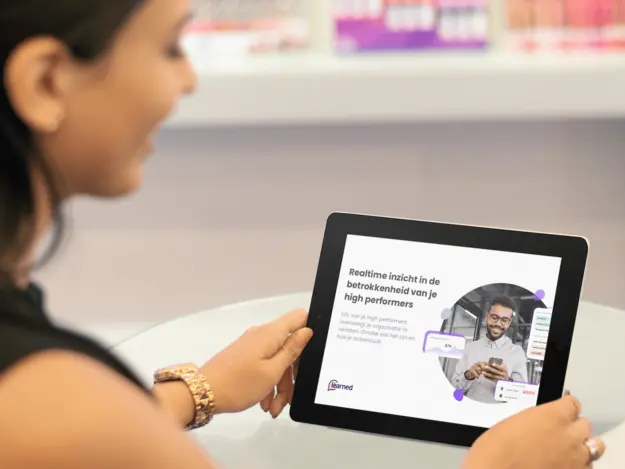
Real-time insight into employee engagement
Additional Resource
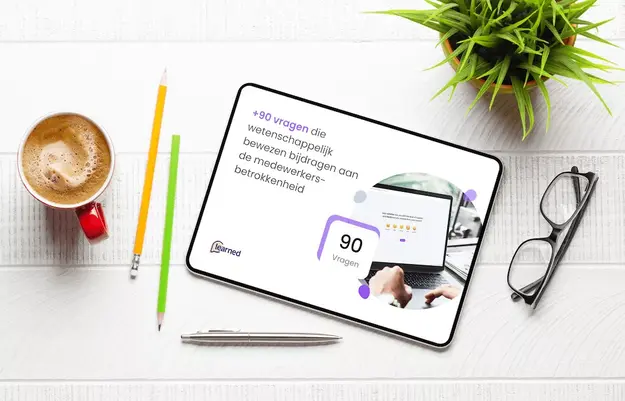
Employee happiness survey – 90 questions for measuring employee engagement
E-Guide , Engagement
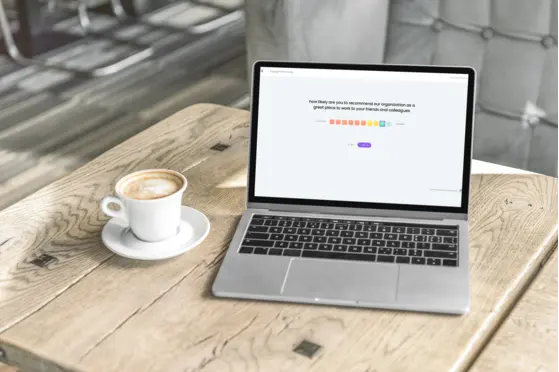
10-step plan to conduct a modern Employee happiness survey
All resources >
Maandelijkse nieuwsbrief

Related blogs

How do you evaluate and improve the onboarding of new employees? Tips & tricks.
Evaluating and improving the onboarding process for new employees is crucial to preparing them for success in their positions. In this blog, we explore the significance of onboarding and its importance to employee engagement and satisfaction. We also give you the...

What is employee engagement, how do you measure it and why is it important.
In this blog, we delve into the concept of employee engagement: what it means, how it differs from employee satisfaction and why it is important for organizations. We also discuss different methods of measuring employee engagement, including surveys, interviews and...

Why more and more organizations are choosing to conduct their MTO themselves and not by a research firm
Outsourcing an Employee Satisfaction Survey to a specialized research firm has advantages, but also disadvantages such as costs, reduced control and lack of internal involvement. Learn more about these aspects and find out how Learned supports companies in...
- go to walkme.com
The Employee Journey: Mapping the Way Forward

The employee journey is a crucial part of any organization’s success.
Businesses fail to realize that every interaction between employees and their employers, from recruitment to retirement, is a journey. Employee experience is the sum of these exchanges, and when managed well, it can be a powerful tool for business success.
The employee journey encompasses more than just recruitment and onboarding. It also includes their career progression, such as training and development opportunities, interactions with colleagues and management, response to feedback and performance reviews, and even their experience when their employment ends.
According to a recent Gallup poll , 48% of employed Americans are seeking a new job or potential opportunities. These alarming statistics demonstrate that businesses must pay close attention to the employee journey to keep their best talent.
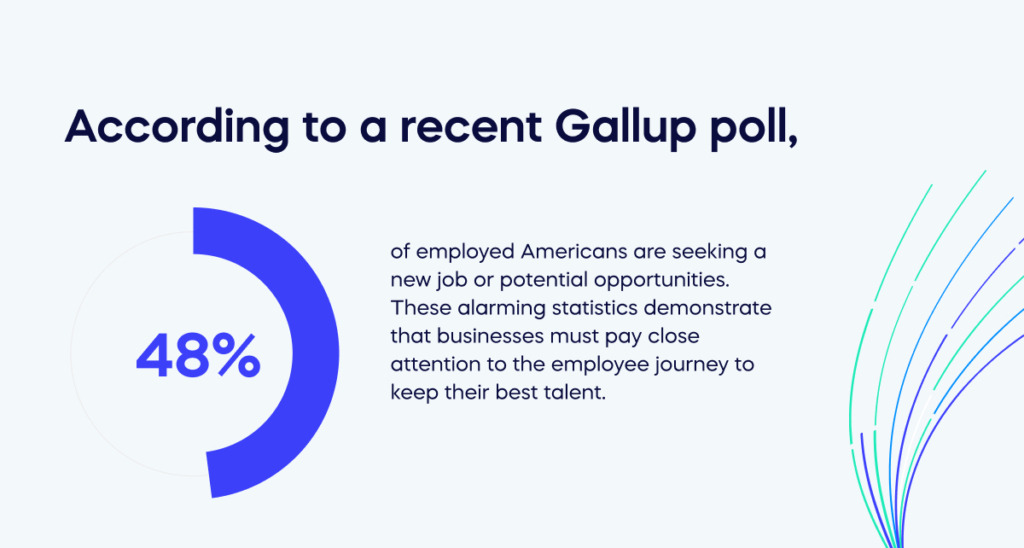
The key to successfully mapping out an employee journey is to create a culture of engagement while steadily investing in employee experience. This involves creating a personalized experience for each employee centered around their career goals.
This article will discuss the importance of the employee journey, provide tips to create effective employee experiences and highlight the most popular methods for mapping out an ideal journey. By understanding the employee journey and creating a practical experience, businesses can hold onto top talent and increase employee engagement tenfold.
What is the employee journey?
The employee journey is the collection of experiences an employee has throughout their entire tenure with a company. It encompasses everything from recruitment to employee onboarding , training, career development, and eventual departure from the company.
Essentially, it’s the story of an employee’s time with your business. Each step in this journey shapes the employee’s perspective, attitude, and motivation toward their job, company culture, and colleagues.
A negative recruitment experience may make a candidate feel undervalued and unappreciated, resulting in a lack of interest in joining your team. Similarly, poor onboarding or training failures could leave your employees feeling unsupported and unprepared for their roles, leading to low morale and reduced productivity.
Providing a positive employee journey can lead to a more engaged, productive, and loyal workforce. Creating a supportive culture prioritizes employee well-being and growth can foster a sense of community and belonging, leading to better employee retention rates, improved performance, and a strong employer brand.
What is employee journey mapping?
Customer journey mapping visually represents the customer journey, from the first point of contact to post-purchase support. It involves identifying the different touchpoints a customer interacts with throughout their journey and analyzing their feelings at each stage.
On the other hand, a customer journey is the actual experience that a customer has with a brand, including their emotional and practical interactions. While the two concepts are closely related, customer journey mapping is a tool used to gain insights into the customer journey, whereas the customer journey itself is the experience that the customer has with the brand.
Why is employee journey mapping important?
Employee journey mapping is essential for organizations that seek to gain a deeper understanding of their employees’ perspectives and experiences throughout their tenure with the company. It enables businesses to identify pain points and opportunities for improvement, which can significantly impact employee satisfaction and engagement.
By mapping out the various touchpoints along the employee journey, organizations can take a more proactive approach to improve the recruitment process, onboarding, training and development, workplace culture, communication, employee benefits, and other areas. This can help to attract and retain top talent, improve employee productivity , and positively influence overall business performance.
In today’s competitive job market, businesses must create a positive and engaging work environment that aligns with their values and goals. Employee journey mapping gives organizations the insights to establish an environment and foster a more productive, motivated, and loyal workforce.
The benefits of employee journey mapping are clear, and businesses must invest the time and resources necessary to implement this tool successfully. Doing so can create a substantial competitive advantage and contribute significantly to the organization’s long-term success.
What are the benefits of employee journey mapping?
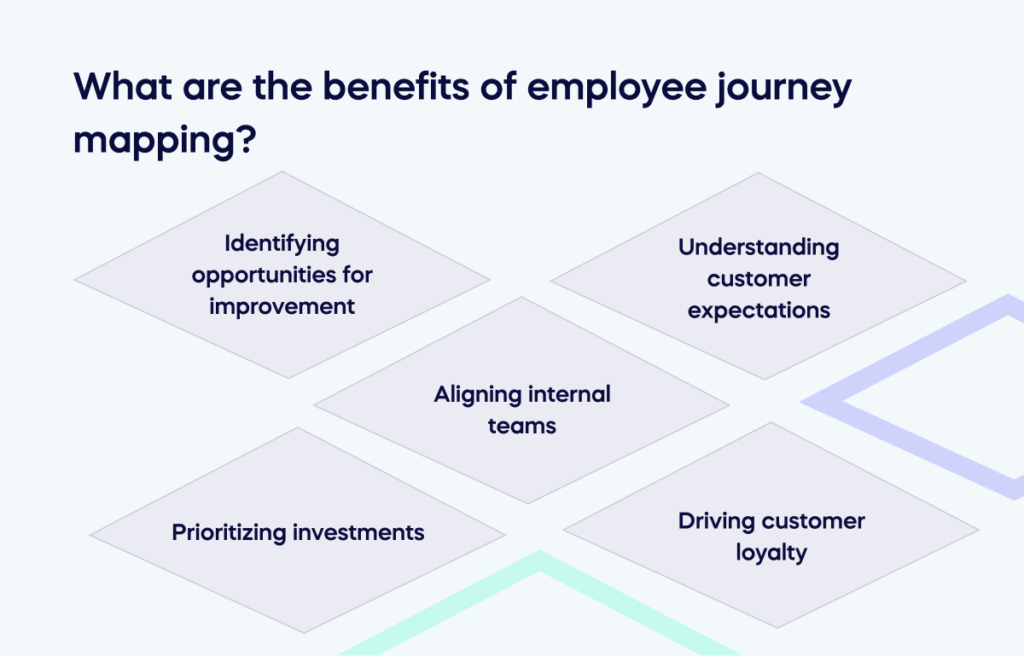
Customer journey mapping is essential for businesses looking to improve their customer experience. By visually representing each touchpoint a customer has with your brand, journey mapping can help you understand your customers’ needs, wants, and pain points.
Here are just a few benefits of customer journey mapping:
Identifying opportunities for improvement: By mapping out all of the touchpoints along the customer journey, you can identify areas where your customers may be experiencing frustration or confusion. This can help you pinpoint where to focus your efforts to improve the customer experience.
Understanding customer expectations: Journey mapping can help you better understand your customer’s expectations at each journey stage. This insight can inform everything from your marketing messaging to your product development roadmap.
Aligning internal teams: By creating a shared understanding of the customer journey across departments, journey mapping can help align your entire organization around a common goal: improving the customer experience.
Prioritizing investments: Journey mapping can help you prioritize where to invest resources to improve the customer experience. For example, if you identify customers experiencing frustration during checkout, you may invest in streamlining that process.
Driving customer loyalty: By improving the customer experience at every touchpoint, you can make loyal customers more likely to return and recommend your brand to others.
How to create an employee journey map
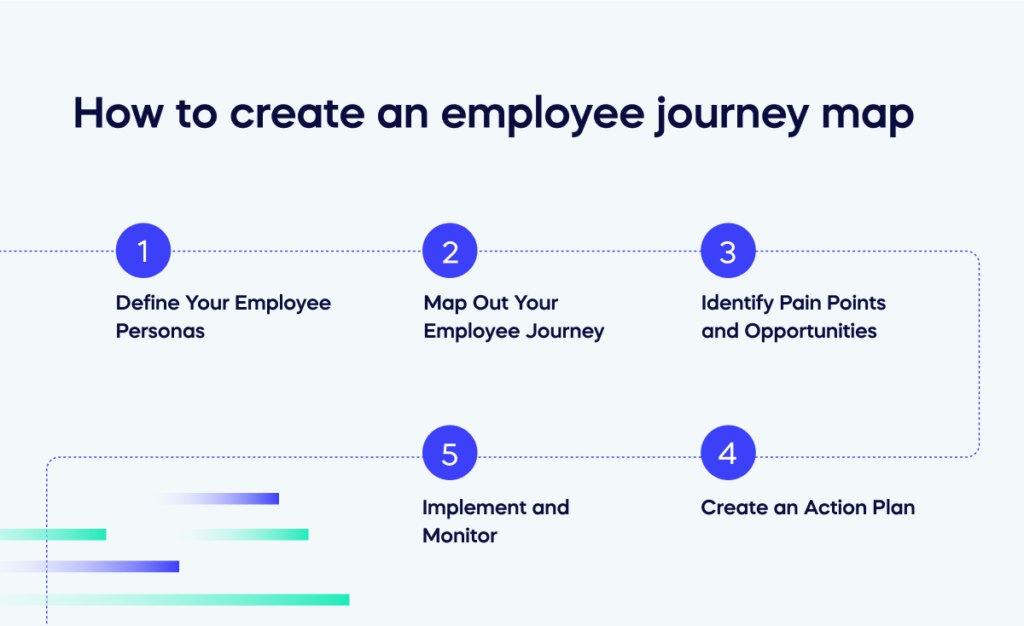
An employee journey map visually represents employees’ steps when engaging with your organization.
It helps you to evaluate the employee experience from their perspective, identify pain points and opportunities for improvement, and ultimately create a more engaging and satisfying work environment.
McorpCX reported that using an employee journey map resulted in a 25.3% increase in year-over-year employee engagement compared to the 10.8% increase for organizations that did not use journey maps.
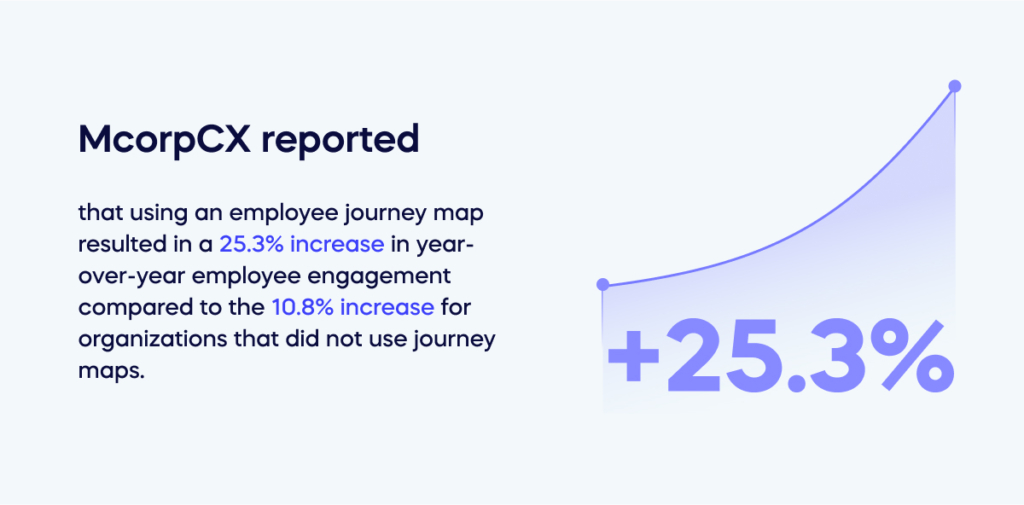
Here’s a step-by-step guide to creating and implementing an employee journey map:
Step 1: Define Your Employee Personas
Before creating an employee journey map, you must define your employee personas. An employee persona is a fictional representation of your ideal employee based on demographic, behavioral, and psychographic data.
To create your employee personas, start by conducting employee research and analyzing your existing employee data. Once you understand your employee base, you can create an employee persona document including age, gender, job title, interests, pain points, and goals.
Step 2: Map Out Your Employee Journey
The next step is to map out your employee journey. This involves identifying all an employee’s touchpoints with your organization, from initial hiring to post-employment opportunities.
To do this, gather a cross-functional team, including representatives from HR, leadership, and other relevant departments. Brainstorm all potential touchpoints an employee might have with your organization and organize them into a chronological journey.
Step 3: Identify Pain Points and Opportunities
With your employee journey map in hand, it’s time to analyze the data and identify pain points and opportunities for improvement. This involves looking at each touchpoint and evaluating it from the employee’s perspective. Ask questions such as:
- What emotions are employees feeling at this touchpoint?
- Are there any barriers or obstacles preventing employees from moving to the next touchpoint?
- How can we make this touchpoint more engaging and satisfying for employees?
As you identify pain points and opportunities, document them on your employee journey map.
Step 4: Create an Action Plan
Now that you have identified pain points and opportunities, creating an action plan to improve the employee experience is time. This involves prioritizing the most critical pain points and identifying specific actions that can be taken to address them.
For example, if you have identified that employees are experiencing frustration during the onboarding process, you may want to simplify the paperwork, provide more transparent communication about company culture and values, or offer mentorship programs for new hires.
Step 5: Implement and Monitor
Finally, it’s time to implement your action plan and monitor the results. This involves working with cross-functional teams and leadership to make the necessary changes and tracking metrics such as employee satisfaction, retention rates, and productivity.
Continue to iterate and improve your employee journey map over time, using employee feedback and data to guide your decision-making.
Creating an employee journey map is a powerful tool for gaining an in-depth understanding of your employees and improving their overall experience with your organization. By following these five steps, you can create a comprehensive employee journey map and use it to drive engagement and satisfaction within your workforce.
What comes after an employee journey map?
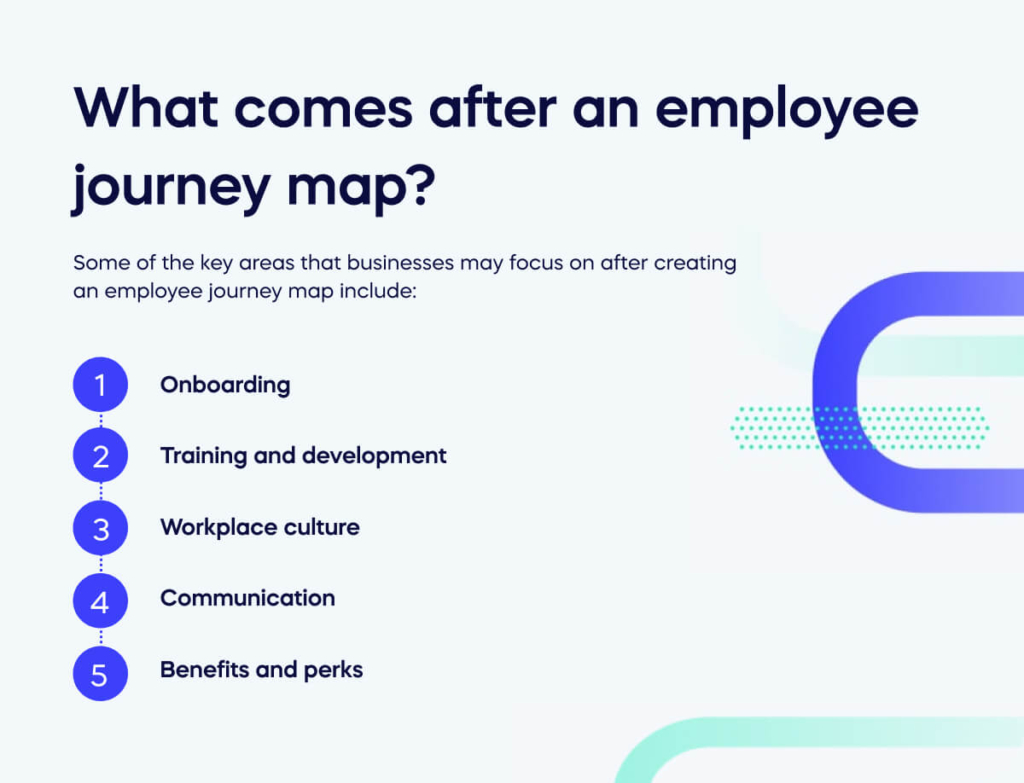
After creating an employee journey map, the next step is to take action based on the insights gained from the mapping process. This involves identifying specific pain points and opportunities for improvement and developing a plan to address them.
Some of the key areas that businesses may focus on after creating an employee journey map include:
- Onboarding: Improving the onboarding process to help new employees feel more engaged, connected, and productive from day one.
- Training and development: Providing ongoing training and development opportunities to help employees grow and advance in their roles and careers.
- Workplace culture: Fostering a positive workplace culture that aligns with the values and goals of the organization and creates a sense of belonging for employees.
- Communication: Enhancing communication channels between employees and management to ensure clarity, transparency, and engagement.
- Benefits and perks: Offering competitive compensation and perks to attract and retain top talent.
Taking action based on the insights gained from an employee journey map allows organizations to humanize their data and boost employee engagement , ultimately leading to increased productivity, retention, and overall business success.
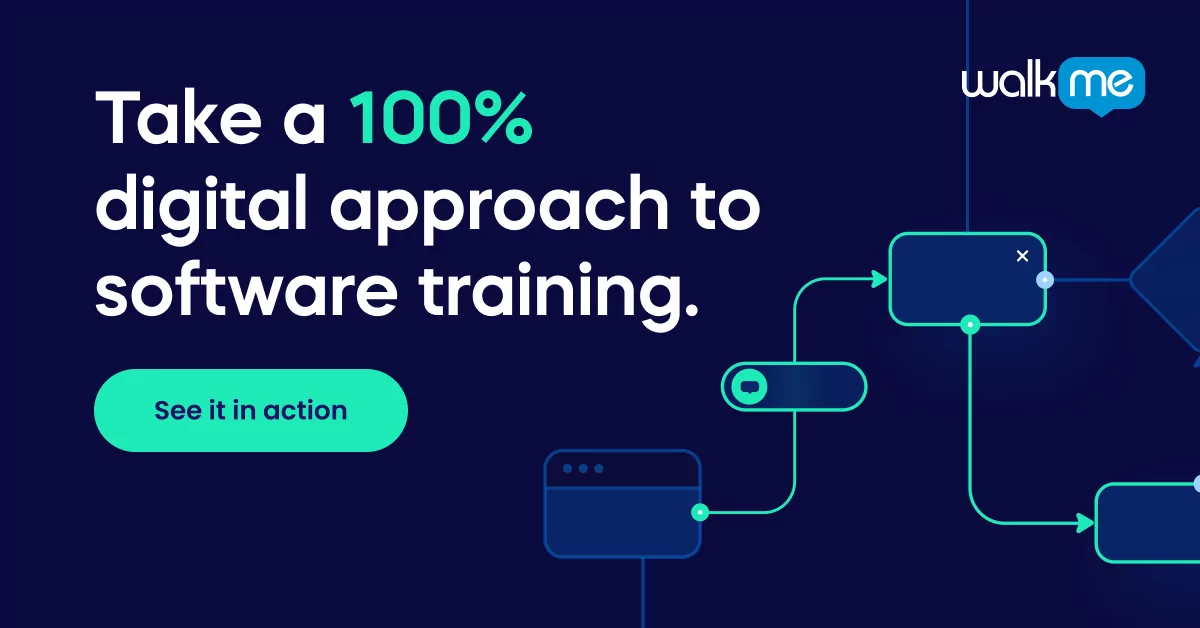
Like what you are reading?
Sign up for our weekly digest of the latest digital trends and insights delivered straight to your inbox.
By clicking the button, you agree to the Terms and Conditions . Click Here to Read WalkMe's Privacy Policy
This site is protected by reCAPTCHA and the Google Privacy Policy and Terms of Service apply.
Thanks for subscribing to WalkMe’s newsletter!
- Business Essentials
- Leadership & Management
- Credential of Leadership, Impact, and Management in Business (CLIMB)
- Entrepreneurship & Innovation
- Digital Transformation
- Finance & Accounting
- Business in Society
- For Organizations
- Support Portal
- Media Coverage
- Founding Donors
- Leadership Team

- Harvard Business School →
- HBS Online →
- Business Insights →
Business Insights
Harvard Business School Online's Business Insights Blog provides the career insights you need to achieve your goals and gain confidence in your business skills.
- Career Development
- Communication
- Decision-Making
- Earning Your MBA
- Negotiation
- News & Events
- Productivity
- Staff Spotlight
- Student Profiles
- Work-Life Balance
- AI Essentials for Business
- Alternative Investments
- Business Analytics
- Business Strategy
- Business and Climate Change
- Design Thinking and Innovation
- Digital Marketing Strategy
- Disruptive Strategy
- Economics for Managers
- Entrepreneurship Essentials
- Financial Accounting
- Global Business
- Launching Tech Ventures
- Leadership Principles
- Leadership, Ethics, and Corporate Accountability
- Leading Change and Organizational Renewal
- Leading with Finance
- Management Essentials
- Negotiation Mastery
- Organizational Leadership
- Power and Influence for Positive Impact
- Strategy Execution
- Sustainable Business Strategy
- Sustainable Investing
- Winning with Digital Platforms
A Guide to Employee Journey Mapping

- 08 Dec 2022
A business is only as strong as its employees—a sentiment that’s top of mind for human resources professionals and people managers amid mass resignations.
As the so-called “Great Resignation” has employees leaving jobs at chart-topping rates , you not only need to retain existing employees but compete with other organizations for top talent.
One way to proactively identify areas for improvement and create value for existing and prospective staff members is through employee journey mapping. Here’s a primer on what it is and how to leverage it to create value.
Access your free e-book today.
What Is Employee Journey Mapping?
Employee journey mapping is the process of visualizing the employee experience from hire to exit. Its goal is to determine areas for improvement and opportunities for value creation so you can retain and attract stellar employees and motivate them to do their best work.
Benefits of the employee journey mapping process include:
- Visualizing each employee’s experience at your company
- Illuminating holes or areas for improvement in your current employee experience
- Enabling more accurate job descriptions
- Informing budget allocation for initiatives that boost retention and engagement
Each of these helps increase employee satisfaction—thus increasing their motivation and quality of work —and your company’s competitive edge in the talent search.
To understand how to use the employee journey map to create value for employees, first explore the basics of value creation.
The Basics of Value Creation
In the online course Business Strategy , Harvard Business School Professor Felix Oberholzer-Gee explains how to create value using a tool called the value stick.

The value stick has four components:
- Willingness to pay (WTP) : The maximum amount a customer is willing to pay for a company's goods or services
- Price : The actual price of the goods or services
- Cost : The cost of the raw materials required to produce the goods or services, or employee compensation
- Willingness to sell (WTS) : The lowest amount suppliers are willing to receive for raw materials, or the minimum employees are willing to earn for their work
There are two ways to gain a competitive edge and attract the best talent: Offer higher compensation (raise the employee’s cost) or make the job more attractive (lower the employee’s WTS).
Lowering an employee’s WTS means they’re willing to accept less compensation. To do this, you need to make the job more attractive and create value.
Value creation not only pays off in terms of employee retention; it can impact the customer experience, too.
“In many services businesses, there’s a strong link between WTS and WTP,” Oberholzer-Gee says in Business Strategy . “By lowering WTS—by making work more attractive—we increase employee engagement, and this then leads to better customer experiences.”
Here are five steps to leverage employee journey mapping to create value.
Related: A Beginner’s Guide to Value-Based Strategy
How to Leverage Employee Journey Mapping to Create Value: 5 Steps
1. define and select employee type.
The first step in the employee journey mapping process is defining employee types, or personas, and selecting which to map first.
If your organization has many roles, you should map a journey for each persona; for example, an “entry-level data analyst” or a “new-hire mid-level marketing manager.”
Some parts of the process will be the same for all employees; others will vary based on job function and level.
2. Map the Employee Journey
The next task is documenting the selected persona’s journey throughout their time at your organization. This can be done in a list format or by drawing a timeline and mapping the journey visually.
This step requires thorough brainstorming to account for as many aspects of the persona’s experience as possible.
It can be helpful to think of the persona’s experience in stages. Use the following example, and tweak it to fit your organization:
- Hiring stage: From job posting to signed offer letter
- Onboarding stage: From day one to ramped up and fully acclimated
- Development stage: Developing skills while performing daily responsibilities
- Progression stage: Opportunities to advance their career within the company
- Offboarding stage: From resignation letter to exit interview
Some organizations operate on a strict schedule for role progression. If this applies to yours, use time as map markers instead of process stages. For instance:
- Before the first day
- One year in
- Two years in
- Eventual offboarding
After defining map markers, list each persona’s planned experience for each stage. This may seem daunting, given the number of factors that influence the employee experience. To make it easier, start by listing processes already in place.
For instance, under the “onboarding stage,” you could list:
- Receive a laptop and a company ID card
- Gain access to email, the project management system, and necessary accounts
- Go on an office tour
- Attend mandatory training
Next, list any added social or culture-building aspects of the experience, such as:
- Receive a company-branded T-shirt and a water bottle on the first day
- Get treated to lunch by the manager and team during the first week
- Attend meet-and-greets with senior leadership and members of each team
More in-depth journey maps include a list of resources needed to make each line item possible—for instance, the platform to conduct onboarding training or a budget for lunches with new hires.
While not every interaction can be documented, each step of the employee journey is important to their overall experience at your company and, ultimately, whether you retain them.
During this process, you may realize there are holes in the journey maps for some roles; for instance, if you don’t currently have practices in place for the development or progression stages. Note these so you can use them in step four when identifying value-creation opportunities.
3. Factor in Employee Feedback
Gathering employee feedback is a general best practice, but it can also play a useful role in assessing current employee journey maps.
There are many options for gathering feedback, including anonymous surveys, private interviews, and physical or virtual suggestion boxes. Other valuable sources of insight include exit interviews with people who leave your company and online reviews from current or former employees on sites like Indeed and Glassdoor .
Map employee feedback to the specific stage or time frame it applies to and notice patterns that emerge. Which stages have the most positive or negative feedback? Are there any general sentiments that could be addressed in a specific stage?
For example, perhaps you observe that employees commonly note in their exit interviews that their job description didn’t match up with their day-to-day tasks. In such cases, you can map that feedback to the hiring stage and use it to create job listings that more accurately reflect roles’ responsibilities.

4. Identify Value Creation Opportunities
Once you’ve mapped the persona’s journey and tracked feedback to each stage, identify areas for value creation. Remember that the two ways to create value for employees are increasing compensation (raising their cost) or making the job more attractive (decreasing their WTS).
Opportunities for value creation can include:
- Holes in the employee journey: Are you providing enough support during the onboarding process? Are professional development opportunities available? Is there a pathway for career advancement within your company for each role?
- Feedback about specific benefits: Benefits can include typical perks (such as vacation time and wellness budgets) or intangibles (like an increased sense of control or flexibility of work location or schedule).
5. Revise the Journey Map
Once you’ve identified opportunities to create value, prioritize and apply them. This can be a long process requiring budget allocation and organization-wide shifts.
Once changes have been implemented, revise the journey maps to include new elements. After you’ve gone through the process once, you can periodically reassess and update the journey maps to adapt to employees’ changing needs and values.

Creating Value for Employees
Creating a competitive employee experience is vital to any business strategy . Without strong, satisfied employees, no organization can reach its goals.
Armed with knowledge of the value stick and the employee journey mapping framework, you can create meaningful value for your employees and attract new ones.
If you’re interested in diving deeper into value creation, consider taking Oberholzer-Gee’s course, Business Strategy . It’ll equip you with a broader picture of how to factor the employee experience into your overall business strategy to create value for your customers, firm, employees, and suppliers to achieve success.
Want to learn more about how to create value for employees? Explore Business Strategy , one of our online strategy courses , to gain the skills to create organizational value. Not sure which course is the right fit? Download our free flowchart .

About the Author

Er zijn geen resultaten gevonden voor "{{search_query}}"
Bedoelde je misschien:.
- {{result.text}}
{{filter.name}}
- {{item.name | ampersand}}
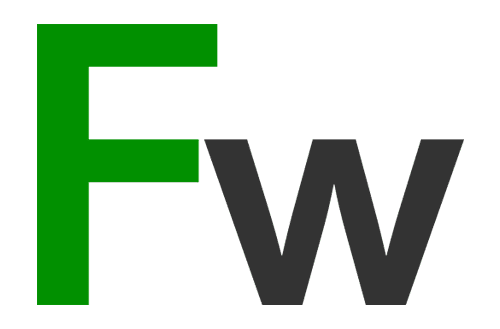
- Communicatie
- Contentmarketing
- Customer experience
- Data analytics
- Klantcontact
- Marketing technology
- Online advertising
- Online marketing
- Samenwerken
- Social media
- Nieuwsbrief
- Alle topics

- Volledig overzicht
- Opleidingen
- Online cursussen
- Masterclasses
- NIMA-opleidingen
- Onbeperkt online leren
- Onbeperkt leren
- AI & ChatGPT
- Membership Teams
- Opleidingsbudget Teams
- Locaties/Virtual Classroom
- Omscholen & UWV
- Subsidies & regelingen
- Erkenningen & accreditaties
- De mogelijkheden
- Vacature plaatsen
- Non-profitorganisaties
- Employer branding
- Inschrijven VacatureAlert
- Conversational Conference
- AI Marcom Event
- Employee Experience Event
- SocialToday Event
- AI Marketing Event
- Content Conference
- Spreker worden
- Partner worden
- Content marketing
- Social Media
- Adverteerders
- Ons verhaal
- Terms & Policies
- Werken bij Frankwatching
- Inzenden campagne
- Frankwatching Studio
- Auteur worden
- Cookie-instellingen
- Alle artikelen
- Artikel inzenden
- Alle vacatures
- VacatureAlerts
- Voor werkgevers
- Vacature Plaatsen
- Alle whitepapers & webinars
- Aanmelden Kennisbank
- Mijn nieuws
- Mijn E-mailabonnementen
- Mijn account
Employee journey-strategie: tevreden & gemotiveerde medewerkers in 7 stappen
Is het verloop van personeel voor jouw HR-afdeling een hoofdpijndossier? Stijgen de budgetten die aan HR-campagnes en projecten worden flink, maar zonder het gewenste resultaat? Een ‘preventieve’ aanpak kan effectiever zijn: anders omgaan met het huidige personeel, zodat medewerkers langer blijven. Als een marketing- of communicatiestrategie daarop ontbreekt, is er werk aan de winkel. Een […]

Is het verloop van personeel voor jouw HR-afdeling een hoofdpijndossier? Stijgen de budgetten die aan HR-campagnes en projecten worden flink, maar zonder het gewenste resultaat? Een ‘preventieve’ aanpak kan effectiever zijn: anders omgaan met het huidige personeel, zodat medewerkers langer blijven. Als een marketing- of communicatiestrategie daarop ontbreekt, is er werk aan de winkel. Een introductie in de employee journey.
De gemiddelde marketeer gebruikt de customer journey . Een kamer verderop in het kantoor verbijt de HR-medewerker zich op de zoveelste ontslagbrief die ingediend wordt. Nu de arbeidsmarkt volop in beweging is, wordt het tijd dat de disciplines marketing en communicatie de afdeling HR opzoekt om samen te werken.
Push- en pullfactoren
Medewerkers wisselen om verschillende redenen van baan. Natuurlijk, soms is er gewoon een beter aanbod. Dat is een pullfactor waar je niets aan kunt doen. Maar er zijn veel meer pushfactoren : de rek in professionele groei is eruit of er is gedoe op de werkvloer. Een goede strategie die gericht is op de medewerker, verkleint het aantal pushfactoren en creëert een positieve vibe rondom het werken bij jouw organisatie. Sascha Becker en Wenda Bolink van communicatiebureau PROOF beschrijven dit in hun boek ‘ De employee journey ‘ (aff.). Het felroze boek is het bewijs van een duidelijke missie om het vakgebied verder te brengen. Dat wordt mooi onderstreept door een interview met de schrijvers als proloog.
Wat houdt de employee journey in?
Het vertrekpunt van de employee journey is een soort concept: de zogeheten Employee Value Proposition (EVP). De EVP verbindt de drijfveren van de (potentiële) medewerkers met de unieke eigenschappen en de aard van de organisatie. Deze waardepropositie, een belofte, moet doordrongen zijn in alle contactmomenten van de employee journey. Het leidt tot een concreet en inspirerend verhaal over de context waarin medewerker en organisatie als het ware samenwerken.
Wat biedt de employee journey?
Wekelijks besteden mensen veel tijd aan hun werk. Hoe mooi is het als je daar trots op kunt zijn? Werken bij een organisatie zou daarom een beleving moeten zijn. De employee journey legt de focus op contactmomenten tussen de organisatie als entiteit en de medewerker (ook voor en na zijn dienstverband). De optelsom van alle positieve ervaringen vormen de experience .
Waarom is de employee journey belangrijk?
Organisaties met een te hoog of te laag verloop zijn kwetsbaar. Een te laag verloop leidt tot te weinig verandering. Met een te hoog verloop gaat continuïteit en betrouwbaarheid verloren. Ook al zijn processen goed ingericht, de medewerkers maken uiteindelijk het verschil in positieve en negatieve zin. Een positieve vibe zorgt bijvoorbeeld minder verzuim en effectiever werken. Maar ook meer winst, want blije klanten zijn vooral het resultaat van blije medewerkers .
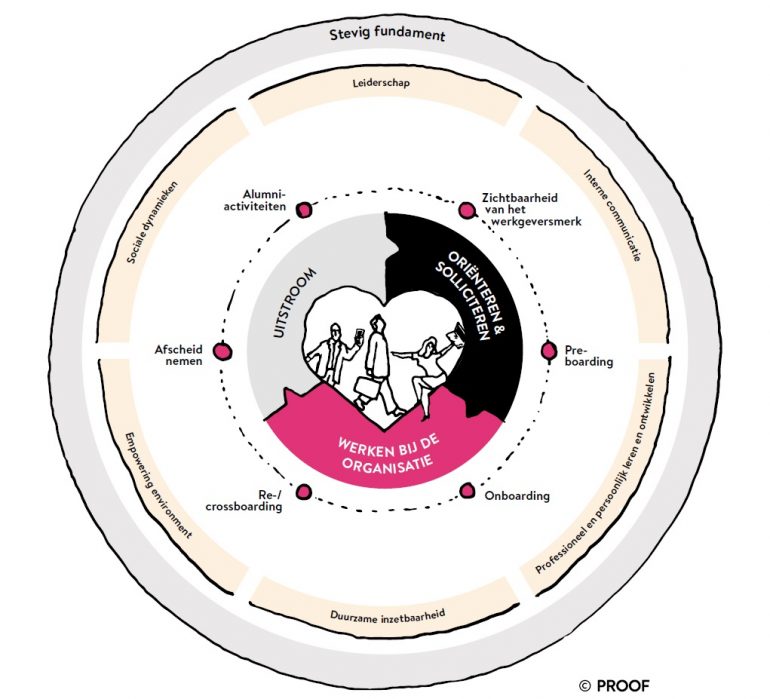
Werkgevers zijn er alles aan gelegen om een positieve experience als doel te stellen. Daarvoor moet het hele proces – de journey – onder de loep. Hoe? Deze 7 stappen (en het boek) helpen je op weg.
1. Zorg dat het bestuur praat over de employer journey
Om maar met de deur in huis te vallen: de employer journey in je organisatie invoeren is waarschijnlijk geen eenvoudige klus. De afdeling HR is verantwoordelijk voor het medewerkersbeleid, maar voor de employee journey is dat niet genoeg: dit moet op de agenda van het bestuur. Terecht ook, want zij hebben het meeste belang bij succes. Daarvoor is het nodig om medewerkers op de lange termijn te helpen om het persoonlijk en zakelijk goed te hebben. Bestuurders moeten deze attitude richting medewerkers onderschrijven en als eerste laten zien. Aan Communicatie en HR de taak om hen te overtuigen van het belang.
2. Werk aan de hygiënefactoren
Alles heeft een stevig fundament nodig. De auteurs Becker en Bolink beschrijven welke basis je moet leggen: het salaris en de arbeidsvoorwaarden moeten bijvoorbeeld goed geregeld zijn, het liefst met de mogelijkheid om zelf daarin keuzes te maken. Ook belangrijk is een passende werkomgeving met de juiste faciliteiten. Te vaak is er gedoe met spullen, waardoor medewerkers niet aan werken toekomen.
De manier van werken van de HR-afdeling is een derde hygiënefactor. Is deze helder, toegankelijk en duidelijk? Kun je bijvoorbeeld je vrije dag eenvoudig aanvragen via het gebruiksvriendelijke systeem en is het personeelshandboek goed te vinden en doorzoekbaar? Op deze manier raken medewerkers niet verstrikt in een bureaucratisch systeem. Easy-to-deal-with HR noemen ze dit ook wel.
Ten slotte is een visie nodig op hoe het leiderschap, talentontwikkeling en gedragsverandering wordt ingevuld. Hoe je als organisatie kijkt naar talent, bepaalt de cultuur. Weten (potentiële) medewerkers hoe ze gebruik kunnen maken van de ruimte om te groeien? En is dit in de praktijk niet alleen gericht op high potentials ? Werken aan de professionele en persoonlijke ontwikkeling geldt immers ook voor de senioren en voor tijdelijke krachten.
3. Benut de invloed die je hebt
De hygiënefactoren zijn belangrijk, maar hebben géén invloed op het behouden van een medewerkers. Wat wel? Het boek beschrijft 6 beïnvloedingsfactoren. Positief leiderschap is een bepalende factor. Leidinggevenden en bestuurders geven het goede voorbeeld: ze gaan voorop, als één team. Ze zijn bereikbaar, nemen de medewerker serieus én laten hun waardering blijken. Zij zetten de toon in het verhaal van de organisatie.
Via interne communicatie zorgen communicatie en HR samen dat het duidelijk is waar de organisatie aan werkt en hoe daar te komen. Belangrijk is dat medewerkers ook echt een bijdrage kúnnen leveren. Goede ict-voorzieningen en een platte organisatiecultuur horen daar bij. Regelmatig updates geven over de voortgang zijn natuurlijk belangrijk. Op die manier kan iedereen erachter komen wat van hen wordt verwacht. Medewerkers moeten op een slimme en efficiënte manier kunnen werken. Decathlon besloot bijvoorbeeld om meer beslissingen op de werkvloer te laten nemen.
Gelukkige medewerkers zijn minder vaak ziek
Gelukkigere medewerkers zijn een andere invloedsfactor: door aandacht te besteden aan bijvoorbeeld gezondheid (sportabonnement, gratis fruit), stress (meditatie via mindfulness, yoga of bidden) en werkdruk (bespreekbaar maken) zullen medewerkers meer ontspannen en minder ziek zijn. Stress op het werk is nog steeds de belangrijkste oorzaak voor ziekteverzuim.
Het is geen nieuw verschijnsel, vertellen de auteurs, maar ‘we horen het wel steeds vaker en het treft steeds vaker jonge mensen’ (TNO en CBS, 2014). Afgelopen jaar waren er in elk geval 14 Nederlandse bedrijven die een Chief Happiness Officer (CHO) in dienst hebben of ernaar op zoek zijn (Volkskrant, 2018). Deze persoon heeft de verantwoordelijkheid voor het werkgeluk van het personeel. Een goede investering, want gelukkige medewerkers zijn minder vaak ziek: veel goedkoper.
Gedragscode
Hoe medewerkers met elkaar omgaan kun je niet bepalen, maar de cultuur is wel enigszins te organiseren. Door hen voldoende na te laten denken over hun eigen ‘gedragscode’ rondom de kernwaarden van de organisatie, volgt het uitvoeren vanzelf. De kernwaarden moeten zorgen voor gedeelde waarden en normen. Uiteindelijk moet het personeel samenwerken. Onderzoek van Eurest toont aan dat voor een goede werksfeer onderling vertrouwen en een goede band met collega’s een van de belangrijkste factoren zijn om te blijven. Een van de bekende quotes van Simon Sinek onderstreept dat.
A team is not a group of people who work together. A team is a group of people who trust each other. – Simon Sinek

4. Wees je bewust van ontwikkelingen die er (niet) zijn
In hoeverre iemand als autonoom persoon kan meedenken en inspraak heeft, is een ontwikkeling om rekening mee te houden. Bijvoorbeeld als het gaat om de eigen ontwikkeling. Kan de medewerker zelf een plan inbrengen om aan zijn talent te werken, is er ruimte voor ontplooiing en is er een dialoog over groeien als professional in plaats van een beoordelingsgesprek?
Een andere ontwikkeling is dat een baan steeds vaker een activiteit is die zingeving moet bieden. Iemand moet zich dan wel kunnen verbinden aan de overtuigingen en het hogere doel van de organisatie. Wat betekent het uitvoeren van de missie voor de maatschappij en welke rol heb ik daar in? Als het lukt om dit verhaal goed op te schrijven en intern te communiceren ben je al goed op weg met een tweede invloedsfactor. Mensen werken graag aan iets waar ze zichzelf in herkennen en wat zijzelf belangrijk vinden.
En zijn millennials – geboren tussen 1980 en 2000 – nu echt heel erg anders om mee om te gaan? Dat idee leeft, maar is een fabel. De helft van de beroepsbevolking is inmiddels een millennial. Volgens de schrijvers van het boek zijn ze geen homogene groep: niet in leeftijd en niet in karakter. Ze kiezen voor een organisatie die bij hen past, net als andere generaties. De schrijver van dit artikel kan het beamen. En omdat het nu cruciaal is geworden om aandacht te besteden aan de medewerker is het belangrijk om de behoeften voortdurend te peilen.

5. Besteed 80% van je energie aan 6 contactmomenten
Net als in de customer journey heeft de medewerker een aantal momenten waarop hij/zij in aanraking komt met de organisatie. Het verschil met de customer journey is dat de momenten in de employee journey veel duidelijker zijn aan te wijzen.
Oriënteren & Solliciteren
In de eerste fase ‘Oriënteren & Solliciteren’ is de zichtbaarheid van het merk belangrijk. Medewerkers willen zich herkennen in hun potentiële werkgever. Daarom zijn er onder meer 15 elementen die je op je ‘werken bij’-website geregeld moet hebben. Dit is op en top communicatiewerk! Spielwork heeft per vacature een aantal vaste bouwstenen.
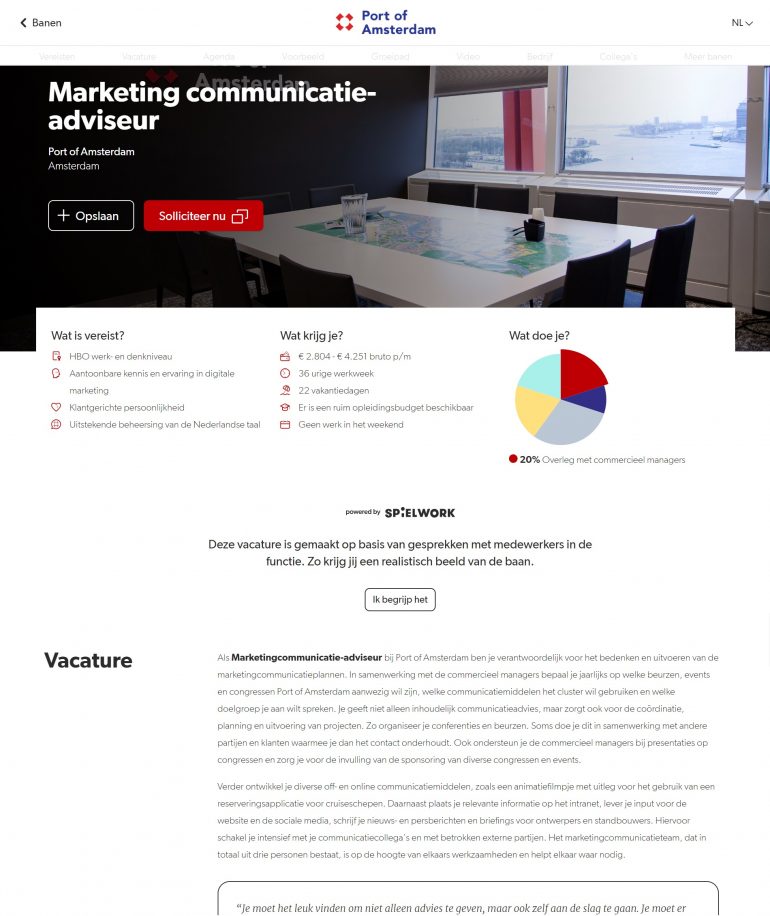
Preboarding
Vervolgens moet je ervoor zorgen dat de eerste indruk van het merk in de ‘ preboarding ’ wordt bevestigd. Hoe maak je dit concreet? Dat kan bijvoorbeeld met een welkomstfeestje. Zorg dat er na de contractondertekening een welkomstdrankje of meet-and-greet met het hele team is.
Programma voor onboarding
Tijdens het werken bij de organisatie, fase 3, volgt een traject van onboarding (dit omvat de eerste 100 dagen). Met een speciaal onboardingprogramma – het liefst interactief – laat je medewerkers kennismaken met de organisatie. Denk in deze fase aan een bloemetje op de eerste werkdag en gesprekken plannen met medewerkers en directie.
Reboarding / Crossboarding
In fase 4 ( reboarding/crossboarding ) begeleid je medewerkers die een grootschalig verandertraject door moeten (nieuwe manier van werken, fusie, strategiewijziging of functiewijziging). Zorg dat je van tevoren het veranderverhaal compleet hebt en dat dit een verhaal is waarin zij zich kunnen herkennen. Zo neem je ze mee, manage je hun verwachtingen en het belangrijkste: je helpt hen succesvol te blijven. De interne campagne Alles Kan voor VodafoneZiggo moest de medewerkers van beide organisaties de juiste mindset geven na de fusie. Op de lanceringsdag bleek de Alles Kan-spelshow (in de traditie van Willem Ruis, Ik Hou van Holland en Alles Mag op Vrijdag) een succes.
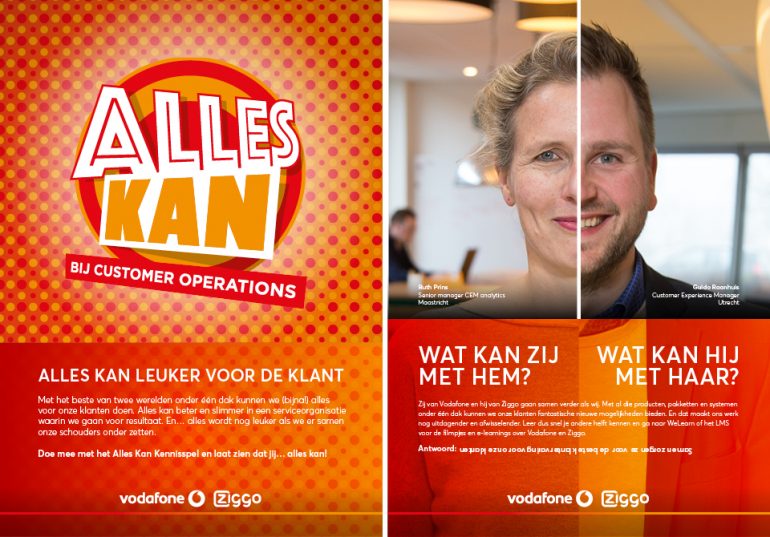
De organisatie met een goed gevoel verlaten
Er is een tijd van komen, en een tijd van gaan. In fase 5 zorg je dat medewerkers met een goed gevoel je organisatie verlaten. Ze kunnen immers in de toekomst je ambassadeur zijn! Dus: met welke reden medewerkers ook vertrekken – vrijwillig vertrek, reorganisatie, ziekte of pensioen – organiseer een goed en respectvol afscheid. Bij het bedrijf Traffic Builders leidt dat zelfs tot een roast (Comedy Central), onder het mom van: ‘voor de achterblijvers maakt dit het afscheid een beetje draaglijker en de vertrekkende collega doet dat met een lach op zijn of haar gezicht’. Door de medewerker te betrekken bij het vormgeven van het afscheid scoor je absoluut pluspunten.
Een netwerk van alumni is de laatste fase (6). Om in het bedrijfsleven succesvol te blijven, is netwerken belangrijk. EY speelt daar op in via het EY-netwerk. Ze onderhoudt contact met oud-medewerkers via activiteiten tussen oud-medewerkers en de organisatie. Ze hebben een versterkend effect, zowel voor de organisatie als oud-medewerkers én huidige medewerkers.
Fantastisch hoeveel tips en concrete verhalen uit de praktijk er in het boek staan beschreven van veel organisaties die bezig zijn met de employee journey.
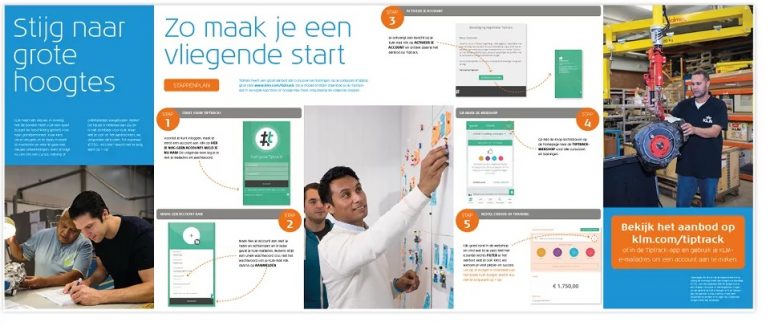
6. Medewerkers behouden is gewoon een kwestie van een goede communicatiestrategie
Wat communicatieprofessionals al in hun werk richting de buitenwereld doen, kunnen zij ook richting medewerkers inzetten: helder en begrijpelijke taal gebruiken, weten wat de doelgroep belangrijk vindt, afstemmen op de belevingswereld en de ‘ what’s in it for me ’ niet vergeten.
Daarvoor is het natuurlijk nodig om elke verschillende doelgroep en het sentiment per doelgroep goed in kaart te hebben. Voor de employee journey zijn dat onder meer de directie, leidinggevenden, medewerkers (nieuw, huidig en vertrekkend), de ondernemingsraad en influencers (zoals vrienden). Elke doelgroep krijgt doelstellingen mee en relevante kernboodschappen worden bepaald (waarom, hoe en wat). Starten maar!
7. Er is geen eindpunt
In het proces is het goed om je steeds te realiseren dat behoeften van medewerkers veranderen. Het is dan ook nodig dat de employee journey structureel op de agenda staat en mee beweegt met de ontwikkelingen. Zo lang tot het een attitude van de organisatie is: steeds weer moet consistentie blijken in gericht zijn op de medewerker. Niet één keer, niet één jaar, maar ‘ over and over and over and over again ’ (Simon Sinek). Alleen dan is er resultaat en kan de experience beginnen.
Een geoliede organisatie en tevreden klanten
De schrijvers van ‘ De employee journey ‘ hebben hun huiswerk goed gedaan en een zeer toepasselijk boek afgeleverd. Alle definities zijn goed verwoord en het geheel is gebaseerd op een theoretisch kader. Een goede basis dus en ook nog eens begrijpelijk geschreven.
Ook al stellen de schrijvers zelf dat de employee journey geen ‘heilige graal’ is, elke organisatie zou de inhoud van dit boek ter harte moeten nemen: tevreden en gemotiveerde medewerkers leiden tot een geoliede organisatie en tevreden klanten. Dat is belangrijk in Nederland, een dienstenland waarin veel afhangt van hoe medewerkers hun werk uitvoeren. En hoe mooi is het om op feestjes te delen dat je werk een ware experience is?
Over het boek
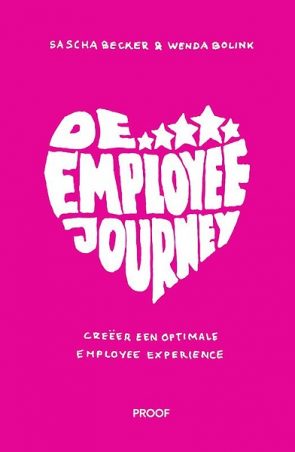
- Succesvolle employee experience? Kom uit je silo, werk samen!
- Employee experience: zo start je & bepaal je de prioriteiten
- Zo ga je in 2023 om met de employee experience [onderzoek]
Over de auteur

Harmen van Doorn is communicatie-adviseur en tekstschrijver. Daar waar het nodig is wil hij communicatie vernieuwen met de technologische middelen die voorhanden zijn. Zodat communicatie zijn doel bereikt: de ontvanger in beweging zetten.
- 09:00 3 beïnvloedingsprincipes die de Oranjekoorts aanwakkeren
- vr Help! ChatGPT pikt mijn baan in [podcast]
- vr Zo kies je de juiste AI-tool voor je marketingactiviteiten [checklist]
- do What’s next voor cryptovaluta? 5 voorspellingen
- do Vergeet specialist en generalist: word een onmisbare marketing-multispecialist
- Moeite met Gen Z begrijpen? Zo spreek je hun taal
- Schrijf als een pro: vermijd deze 10 meestvoorkomende stijlfouten
- Ons zoekgedrag verandert: de 4 trends in 2024 die je moet kennen
- Dit is de CTR van topposities in Google [nieuw onderzoek]
- 10x populair: GPT-4o, de beste tijden om te posten & nieuwe LinkedIn-functies
Growth Hacking
Schrijven op B1-niveau
Community management
- Dagelijkse nieuwsbrief
- Wekelijkse nieuwsbrief
- Locaties & route
- Business channel
- Themanieuwsbrieven
- Academy Update
- Partnership Events
- Partnership Studio
- Inzenden branded content
- Advertising (Eng)
- Business Update
- Meetup SEO-content
- VacatureAlert
- Mens & Werk-nieuwsbrief
Meld je aan bij Frankwatching
Heb je nog geen account? Word member
Wat is de Employee Journey en waarom is het belangrijk?
Employee journey: behandel medewerkers als klanten.
Een Employee Journey of Employee journey model omvat de hele ‘reis’ die een medewerker maakt binnen een organisatie.. Deze reis begint bij het eerste contact in een sollicitatieproces en eindigt op het moment dat de medewerker de organisatie verlaat.
Gedurende deze reis krijgen medewerkers te maken met verschillende ervaringen en gevoelens. Als werkgever wil je de Employee Journey van elke medewerker zo aangenaam mogelijk maken.
Stuur op werkgeluk in Employee Journey
Door continu te sturen op het werkgeluk van de medewerker, schep je de condities om optimaal te bij te dragen aan het succes van de organisatie.
Het wordt steeds belangrijker om te investeren in een goede Employee Journey. Blije medewerkers zorgen immers voor blije klanten en blije klanten zorgen voor een hogere omzet!
Daarnaast neemt de krapte op de arbeidsmarkt toe, waardoor de noodzaak toeneemt voor organisaties om het aanwezige talent te behouden en om aantrekkelijk te zijn voor nieuwe talenten.
De 3 belangrijkste touchpoints in de Employee Journey
Veel organisaties hebben de Employee Journey gekoppeld aan drie belangrijke touchpoints, de belangrijkste momenten in de reis.
- De oriëntatie en het sollicitatieproces.
- Het onboardingtraject: het moment dat een medewerker wordt ingewerkt.
- Het moment van offboarding: het moment dat iemand de organisatie verlaat.
Het is heel begrijpelijk dat organisaties – en veel HR-goeroes overigens ook – zich juist vastpinnen op deze drie touchpoints. Het zijn namelijk momenten waarop je heel concreet iets kunt betekenen in iemands Employee Journey.
Zo heb je bijvoorbeeld tijdens een sollicitatieprocedures de kans om de filosofie van de organisatie uit te dragen en is het onboardingtraject een eerste moment waarin een nieuwe collega zich kan positioneren binnen de organisatie.
Van Employee Journey naar Employee Experience
Toch is het een risico als organisaties heel veel energie steken in deze drie touchpoints. Vaak wordt het belangrijkste namelijk vergeten: de periode waarin een medewerker daadwerkelijk bij de organisatie werkt.
Dat is best begrijpelijk, want het dagelijkse werk is niet te vangen in een concreet touchpoint. Toch is het wel de belangrijkste – of in ieder geval de langste – periode binnen de Employee Journey. In onze blog over de employee experience ontdek je hoe je hier concreet invulling aan kunt geven.
Dat wil natuurlijk niet zeggen dat de andere touchpoints niet van belang zijn. Sterker nog, juist het begin van de Employee Journey bepaalt het beeld en de verwachtingen die mensen van jouw organisatie hebben. En dat is cruciaal om de juiste nieuwe mensen aan boord te halen.
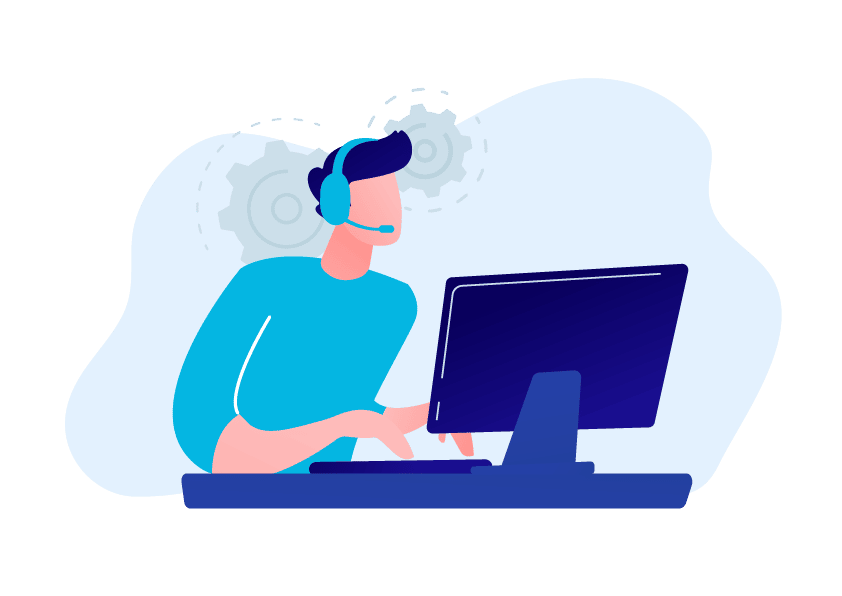
Op zoek naar de ultieme employee journey?
Download gratis het e-book 'in 5 stappen naar de ultieme employee experience’., consistentie is key.
Je kunt natuurlijk een mooi verhaal ophangen over hoe geweldig het is om voor jouw organisatie te werken. Maar als vervolgens in de praktijk blijkt dat de werkelijkheid op de werkvloer toch een stuk minder rooskleurig is, dan voelt de medewerker zich al snel ‘voor de gek gehouden’. Zo’n teleurstelling heeft vanzelfsprekend geen positieve invloed op de motivatie en het werkplezier.
Het is dan ook cruciaal dat de Employee Journey consistent is: wat je belooft in je employer branding en tijdens sollicitatiegesprekken, moet je ook waarmaken.
Consistente Journey met Employee Value Proposition
Om erachter te komen of het beeld van nieuwe medewerkers overeenkomt met het beeld dat je schetst, stel je bestaande medewerkers de vraag: waarom vind jij het fijn om hier te werken?
De antwoorden op deze vraag vormen samen je Employee Value Proposition (EVP). Dit doet je waarschijnlijk denken aan de Customer Value Proposition (CVP) en dat heeft een reden.
Waar je bij CVP bepaalt welke waarde een klant ervaart als hij jullie producten en diensten gebruikt, draait het bij de EVP om de waarde die medewerkers ervaren als ze in jouw organisatie werken.
Steek net zoveel tijd in je EVP als CVP
Het helder krijgen van de EVP is één ding, deze overbrengen op potentiële nieuwe medewerkers is nog iets heel anders. Organisaties steken veel tijd en energie in het uitdragen van hun Customer Value Proposition.
Betrokkenen worden getraind om deze te kunnen dromen en op een consistente manier uit te dragen. Geen gek idee om dat ook voor je EVP te doen, toch?
Voor je Employee Journey is het essentieel dat alle betrokkenen binnen het bedrijf de EVP herkennen en geloofwaardig uit kunnen dragen. Dit kan alleen als de kernwaarden van je organisatie zijn bepaald door huidige medewerkers, niet door een extern marketingbureau.
Continu verbeteren van de Employee Journey
De Employee Journey is niet een statisch gegeven, maar aan verandering onderhevig. Daarom wil je voeling houden met hoe medewerkers het werken in jouw organisatie beleven. En nog beter: deze ervaring continu verbeteren.
Hiervoor is het essentieel om te blijven te luisteren. Doe dit zonder enig oordeel en alleen met als doel om zaken alsmaar te verbeteren. De echte Employee Journey vindt tenslotte dagelijks plaats op de werkvloer en dit is niet te vatten in vaste touchpoints, zoals de sollicitatie of de onboarding.
Hierbij kun je als organisatie gebruik maken van een engagement tool zoals Dialog . Dit is een mooie manier om continu te luisteren naar je mensen en om het goede gesprek aan te gaan.

Zo breng je het goede gesprek op gang in jouw organisatie

Zo maak je van het functioneringsgesprek een feestje

Waarom de klassieke HR-cyclus verdwijnt
Voor veel organisaties is het een belangrijk HR-thema: hoe brengen we ‘het goede gesprek’ (of ‘de continue dialoog’) op gang in onze organisatie?
Het is weer bijna tijd voor de jaarlijkse functioneringsgesprekken. Kijken de medewerkers en leidinggevenden in jouw organisatie al uit naar dit moment?
Het einde van de klassieke HR-cyclus is nabij. Deze levert vaak namelijk niet het gewenste effect op. Wat kan je hier aan doen?
Wil je direct gratis het platform bekijken?
- Ontdek platform
- Bekijk demo video
- Beveiliging
- Kenniscentrum
- Continue dialoog
Performance
- Leren en ontwikkelen
- Real-time inzicht
- Integraties & instelbaarheid
- Implementatie
- [email protected]
- +31 30 7600 290
- Ondiep-Zuidzijde 6 3551 BW, Utrecht (NL)
Beoordelingscyclus
- Beoordelingsgesprekken
- Functioneringsgesprek
- Constructieve feedback
- 360 graden feedback
Medewerkers
- Eigenaarschap
- Het goede gesprek
- Kernwaarden
Talentmanagement
Personeelsbeleid
- Duurzame inzetbaarheid
- Vlootschouw
- Functiehuis
- Performance management
- Leren en reflecteren
- Bedrijfscultuur
- Medewerkerstevredenheid
- Betrokkenheid
- Employee journey
- Competentieprofiel
- Succession planning
- Skills matrix
- Carrièrepaden
- Strategische personeelsplanning
- Talent management = matchmaking
Arbeidsmarkt
- Binden en boeien
- Goede werk prive balans
- Houd goede mensen aan boord
- Voordelen krappe arbeidsmarkt
- Oplossingen arbeidsmarktkrapte

- Persoonsgegevens zijn beschermd. Dialog is ISO 27001 gecertificeerd
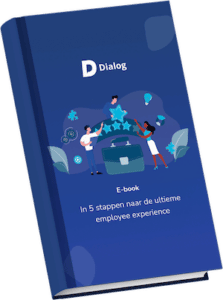
In 5 stappen naar de ultieme employee experience
Met dit e-book helpen we je in 5 stappen op weg om doorlopend de regie te houden op de employee experience binnen jouw organisatie.
Download nu het gratis e-book!
Ontdek ons platform.
Ontdek alle functies en ervaar zelf de voordelen.
Registreer nu voor de gratis klikbare demo!
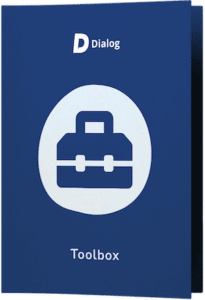
Toolbox 'Vernieuw je HR-cyclus'
Ontvang de beste artikelen, e-books, tools en video’s over het vernieuwen van de HR-cyclus.
Download de gratis toolbox nu!
Deel dit artikel
Verbeter je organisatie door inzicht in de employee journey
Marlies Pellikaan
De werkende wereld verandert. Denk aan de steeds verdergaande digitalisering en robotisering van werk, flexibele arbeidsverhoudingen, vergrijzing en ontgroening. Om in te kunnen spelen op deze ontwikkelingen is het voor organisaties belangrijk om flexibel te zijn. En op elk moment klaar zijn voor verandering. Maar hoe doe je dat?

Door voortdurend vinger aan de pols te houden over hoe het gaat; zowel intern (wat gaat het goed en wat kan er beter) als extern (wat speelt er in de markt en bij mijn klanten). En wie weten dat beter dan je eigen medewerkers? Zij zien van dichtbij wat er speelt en hebben vaak goede ideeën over hoe het beter kan. Slimme organisaties luisteren daarom goed naar hun medewerkers: ze benutten hun feedback én bereiden zich zo samen voor op de toekomst.
Flexibel onderzoek: benut de feedback van medewerkers waar, wanneer en hoe je maar wil
Vrijwel iedere organisatie heeft ervaring met het uitvoeren van regulier medewerkersonderzoek : onderzoek naar de werkbeleving van hun medewerkers. Voor wendbare en duurzaam succesvolle organisaties van nu is één of twee keer per jaar meten niet meer genoeg. Zij willen veel vaker de feedback van medewerkers benutten als het gaat over hun organisatiebrede, team- en individuele werkbeleving. Dus op ieder gewenst moment, over ieder gewenst thema. Van feedback over het inwerkproces tot aan feedback over het hoe en waarom van het verlaten van de organisatie. Kortom: organisaties van nu vragen feedback in de complete employee journey van hun medewerkers.
Wat is de employee journey en waarom is inzicht hierin belangrijk?
Het in kaart brengen van een employee journey is niet het doel op zich. Het is een instrument dat gebruikt wordt om de punten in kaart te brengen waar de organisatie of managers een grote impact hebben op de medewerkers. De employee journey helpt gebieden te signaleren die verbeterd moeten worden en maakt de organisatie/managers bewust van de beleving van medewerkers binnen hun organisatie. De employee journey is dus ‘de reis’ die medewerkers maken binnen een organisatie.
Tijdens deze reis kun je op verschillende momenten om feedback vragen over het werken bij de organisatie. Bijvoorbeeld over het inwerktraject, de samenwerking binnen een team of over belangrijke organisatiethema’s. Met het in kaart brengen van de employee journey maak je inzichtelijk welke belangrijke momenten er in jouw organisatie zijn, waarmee een medewerker gedurende zijn loopbaan te maken krijgt. De employee journey kan per branche of sector verschillen, maar er zijn drie stadia in de reis te onderscheiden die voor elke organisatie gelijk zijn:
- Instroom: het instromen en inwerkproces van een nieuwe medewerker bij een organisatie. Van sollicitatie tot en met de eerste maanden in dienst
- Voortgang & doorstroom: het verloop van de rest van de carrière van een medewerker binnen een organisatie
- Uitstroom: het uitvliegen van een medewerker. Bijvoorbeeld naar een andere organisatie
We zien dat organisaties, die inzicht hebben in hun employee journey en hier gericht mee aan de slag gaan, een aantrekkelijke werkgever en duurzaam succesvol zijn.
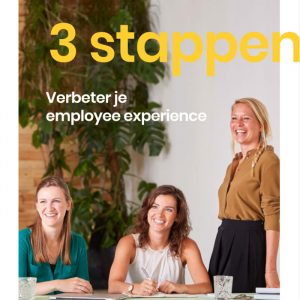
Verbeter je employee experience in 3 stappen
De employee experience is de nieuwste trend op HR gebied. In dit whitepaper vertellen we je er graag meer over.
Verbeter de employee journey met behulp van feedback van je medewerkers
Bij Effectory bieden we verschillende instrumenten aan om feedback van je medewerkers te verzamelen op elk gewenst moment gedurende hun loopbaan bij jouw organisatie. Dit geeft inzicht in hoe je medewerkers hun werk ervaren gedurende de verschillende stadia in de employee journey. Dit helpt je om je organisatie van binnenuit te verbeteren, het juiste talent aan te trekken en te behouden én je medewerkers de juiste doorgroei- en ontwikkelingsmogelijkheden aan te bieden.
Het blijft niet bij het verzamelen van de feedback: medewerkers krijgen ook de kans om concrete verbeterpunten voor elke stap in hun reis aan te geven. Daar kun je als organisatie vaak direct mee aan de slag. En lukt dat niet, dan bieden wij je daar graag de handvatten voor aan.
In het stadium van voortgang & doorstroom halen organisaties vaak feedback van medewerkers op via een regulier jaarlijks medewerkersonderzoek of door middel van Flex en Pulse onderzoek. Met Pulse onderzoek haal je feedback op wanneer, hoe vaak en op welke wijze je maar wilt. Bijvoorbeeld decentraal – per regio of functiegroep –, als er een specifiek thema speelt binnen je organisatie of als je een verandering wilt polsen. Denk aan de werkdruk van medewerkers sinds de reorganisatie van afgelopen najaar of de nieuwe rolverdeling binnen een team.
Speciale aandacht voor feedback van startende en vertrekkende medewerkers
De andere stadia van de employee journey – instroom en uitstroom – vragen om andere feedbackinstrumenten. Feedback verzamelen van startende medewerkers via een instroomonderzoek helpt je aan inzichten om vroegtijdig verloop te voorkomen en je inwerktraject te verbeteren. De eerste maanden in een functie zijn voor nieuwe medewerkers cruciaal voor het verdere verloop van een carrière en voor de kickstart voor bevlogenheid en productiviteit bij nieuwe medewerkers.
De feedback van een vertrekkende medewerker is ook heel waardevol. Waarom gaat hij weg en wat kun je als organisatie verbeteren? Lag het aan zijn carrièrekansen, de cultuur of misschien het leiderschap in de organisatie? In het uitstroomonderzoek kun je hierop inzoomen. Het helpt je op een goede manier afscheid te nemen van medewerkers. Daarmee vergroot je de kans dat ze een ambassadeur van je organisatie blijven bij (on)vrijwillig vertrek.
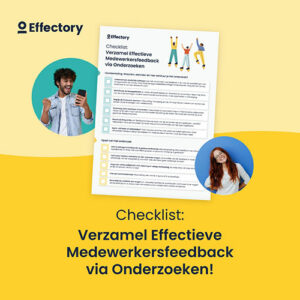
Feedback vragen aan je medewerkers
De checklist is beknopt maar vol handige tips voor het opzetten van een succesvol medewerkersonderzoek!
Goed draaiende teams dragen bij aan duurzaam organisatiesucces
Tijdens de employee journey is het belangrijk om inzicht te krijgen in de teamdynamiek en de samenwerking binnen en tussen teams. Goed draaiende teams zijn de stuwende kracht van een organisatie. Is er binnen teams ruimte voor dialoog en neemt iedereen z’n verantwoordelijkheid, dan vergroot je de kans op betere prestaties, innovaties en werkplezier. Alleen: goed presterende teams heb je als organisatie niet zomaar. Het vraagt om onderling vertrouwen en helder inzicht in de teamdynamiek.
Wat levert het op?
Door inzicht te hebben in de employee journey behaal je als organisatie op verschillende gebieden winst:
- Nieuwe medewerkers zijn snel ingewerkt
- Je bent aantrekkelijk voor talent
- Je verbetert je organisatie samen met je medewerkers
- Je hebt een positieve impact alle medewerkers binnen je organisatie
- Je bent wendbaarder en innoveert sneller
Met andere woorden: je geeft je organisatie een stem die je vertelt waar het beter kan. Waardevol voor de organisatie en een belangrijk signaal richting je medewerkers: hun mening telt!

Ontdek alles over onze oplossingen in de demo
Wil je meer weten én zien van onze feedbacktools? Vraag een demo aan.
gerelateerde thema's
Gerelateerde artikelen.
Employee Experience
6 steps to mapping the employee journey at your organization
Close employee experience gaps by mapping your people’s journey with your organization.
In order to master employee experience, you must listen to your people at each stage of their journey with your organization. To do so you first need to map that journey, an easy and impactful exercise that reveals opportunities for improvement and optimization. Here’s how to do it.
eBook: Use Employee Lifecycle Feedback to improve your EX
What is the employee journey?
From the moment someone looks at your careers page to the moment they leave your organization, everything an employee learns, does, sees, and feels is part of the employee journey. The employee journey is a framework used to understand the sum of all the employee's experiences during their time with an organization and it's used by HR to understand and enhance the employee experience.
These moments and milestones (big and small) contribute to their employee experience – and present opportunities to tune in to your employees’ needs, to be more equitable and inclusive , and to close the gaps that exist for employees.
If you want to improve employee experience you need to map the journey your employees go through while they’re employed by your organization.
What is employee journey mapping?
An employee journey map is a visual representation of each stage of an employee's time within an organization from recruitment, through onboarding, right up until the time they leave.
Employee journey mapping enables organizations to prioritize resources and funding, clarify roles, and identify critical moments that matter by visually mapping the various steps and emotional states which employees experience while interacting with the company.
Employee journey mapping allows you to:
- Align the organization on a common view of the actual employee experience.
- Focus the EX program on moments that matter most.
- Facilitate employee-centric thinking and actions.
- Prioritize resources and funding.
- Clarify critical roles within the organization and moments that matter most.
Learn how Southwest Airlines rebuilt its understanding of employee needs along all the moments that matter.
What are the benefits of employee journey mapping?
More and more organizations are looking to capture feedback and insights at every stage of the employee journey. Doing so allows you to understand the moments that matter most, how those moments impact employee experience, and what to do at each stage to have a positive impact on metrics like engagement , attrition , and productivity.
A key benefit of employee journey mapping is to use the insights from the mapping process to design and execute better experiences throughout. You do this by:
- Revealing and optimizing unseen experiences . Journey mapping helps you think about the more hidden aspects of the employee journey.
- Finding out where the employee journey runs smoothly and leveraging what’s working well in other moments of the journey so as to meet employees’ needs at various moments in time.
- Fixing bad experiences more effectively . Journey mapping helps reveal why you haven’t met employee expectations and what you need to do to make amends.
- Identifying opportunities to foster equity and inclusion . There is rarely a single critical point in the employee journey that creates inequity. It’s often the cumulative impact of bias and systemic inequity over many moments that create significant gaps in experience.
Collect and apply employee feedback with our 360-Feedback eBook: Download Now
What are the stages of the employee journey?
Every employee goes through a series of stages from the day they apply for a job right through to the day they leave. This journey can be summarized into five stages:
Stage #1: Recruitment . This includes all the steps that lead to hiring a new employee. Considerations are: how long it takes to hire, how much it costs to hire, the rate of offer acceptance, and the hire’s quality. Were your job postings attractive and clear enough to catch the attention and applications of the best candidates? Did your interview process engage and reassure great candidates so they quickly accepted your job offer?
Stage #2: Onboarding . Where a new hire gets up to speed with the systems, tools, and processes, as well as the role’s expectations. Most new employees need ‘ramp time’ to get up to speed and become productive in their job. An effective onboarding process translates someone’s initial enthusiasm for their new job into a more meaningful, long-term connection to the organization and a commitment to doing great things while they’re there.
Stage #3: Development . This is the ongoing stage in the employee journey, with individuals developing at different rates and across a variety of skills. As the employee develops within his or her role, you need to quantify their productivity, ability to be a team player, and promotion aspirations. You also want to offer them the chance to expand their skill sets, an increasingly important differentiator for many employees looking to have a ‘portfolio career’ consisting of many different experiences.
This stage often includes incremental steps or annual events, like:
- Role changes
- Performance evaluations (e.g., career conversations, training and development)
Stage #4: Retention . Employees are now fully ramped and integrated into the organization. Your challenge then is to keep them performing, developing, and contributing to the company’s success. Plus, to ensure they’re inspired by and connected to the company’s core vision.
While there are countless strategies organizations use to retain talent , programs that support EX can often look like:
- Inclusive parental leave
- Extended leave or sabbaticals
- Celebrating anniversaries and birthdays (or other personal milestones)
Stage #5: Exit . Employees can leave for a whole host of reasons: they may retire, move to another employer, or make a life change. Every employee will leave your company at some stage, and finding out why is an opportunity to improve and develop the employee experience for current and future employees. Those who leave may be more candid about why they’re going as they may feel they have nothing to lose by being brutally honest.
How to design an employee journey map
An employee journey map allows you to plot out every moment that matters and understand what you can do to improve the experience. Here’s how to start building your employee journey map.
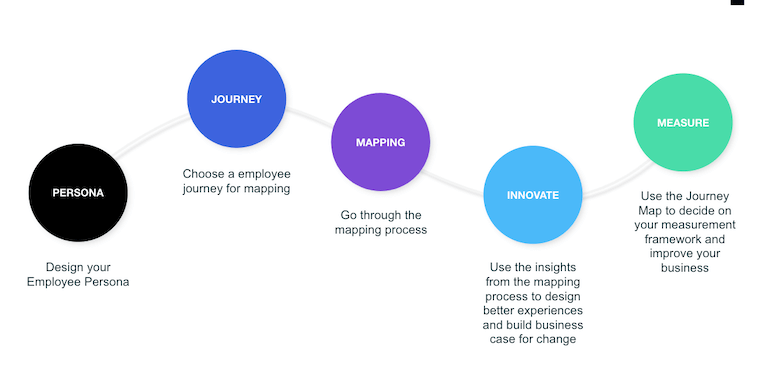
Step #1: Segment your employees.
Start by identifying your employee segments, also known as employee personas . Ideally, segments should be based on role, not on demographics like age or gender – you can use the latter to parse out the data later. An engineer, for example, is likely to have a very different experience from someone in your marketing team. Segment employees in this way, rather than demographics like age and gender
Step #2: Establish the journey for each persona.
Now that you know your personas, you can start to map out the interactions they have with the organization from their first contact (usually before they’re hired) all the way through to them eventually leaving. You’ll need to bring in a cross-functional team for input on this, as different teams and departments will likely have different interactions along the way. You may even want to consider looking at the interactions post-exit as in some cases retirees or past employees may come back or have an interaction with the organization later on or act as advocates for the organization.
Step #3: Map feedback and insights to the employee journey.
To truly understand the impact of each interaction on the employee experience, you need to be able to map feedback to each stage in the lifecycle. So for each persona, make sure there is a feedback mechanism attached to each stage in the journey that meets them where they are and provides them with the opportunity to give feedback in the moment – this is much more useful than waiting up to 12 months to ask them about it, as you’ll get the most honest and useful feedback while the experience is still fresh in their mind.
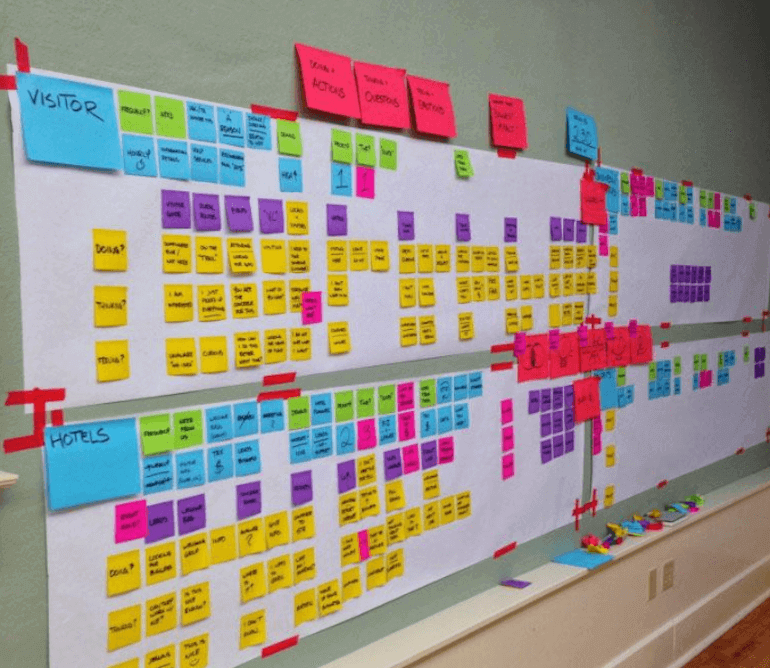
Step #4: Align your measurements at different stages in the employee journey.
It’s likely that different stages in the journey will be managed by different teams, e.g. your recruiting, training, or onboarding teams. In order to link insights across the journey, you need to make sure that everyone agrees on a consistent approach to measurement, whether that’s using a simple metric like eNPS with open-text follow-up questions or a set of core 5-point Likert scale items (e.g., Engagement) that are consistent across each measurement. The key is to have a set of core metrics that are consistent across many of your measurements. Exit and onboarding surveys may still have custom questions unique to those processes, but having a consistent set of items in each measurement allows you to look at connections to see how the experience at one touchpoint impacts the other.
Step #5: Use automation to manage feedback at scale.
Manually sending out a survey every time someone takes a training course, goes for promotion, or interacts with any of the other moments that matter along the journey is a drain on resources. Instead, make sure you integrate your employee experience program with your HRIS and set up triggers to automatically send a request for feedback when an employee hits a certain milestone.
Step #6: Combine the employee journey with your engagement survey.
A lifecycle approach to employee experience doesn’t mean giving up on your employee engagement survey altogether. In fact, the engagement survey should be your cornerstone – but more in-depth view of the state of employee experience and the key drivers that are impacting it either positively or negatively. Many organizations choose to do shorter, more frequent surveys like bi-annual engagement surveys or monthly employee pulse surveys as an alternative to the annual survey. However you run it, it’s essential you connect it to your feedback mechanisms across the lifecycle.
As an example, employee onboarding feedback, on its own, will likely show you how your onboarding process is perceived and what can be improved, but it won’t necessarily show the impact on engagement, productivity, or attrition. When you combine it with your engagement survey (which does measure these things) you can then start to see connections – how did that improvement to onboarding affect engagement for employees in their first year? Did it reduce attrition? Did it promote cross-functional collaboration? Do those employees who went through the new program understand better how their work contributes to the organization’s success?
It’s only by connecting all these different feedback mechanisms that you’ll know the answer.
Learn how to create actionable insights with employee journey analytics
The dos and don'ts of employee journey mapping
Do: look at each phase from multiple angles.
Each stage in the employee journey is different, so it’s important to look at each individually while considering multiple components of the stage. For example, if you just look at a stage from the vantage point of an employee, you may miss important considerations related to current business challenges. In that example, you may have employee feedback on your onboarding process that tells you employees do not feel supported, but that insight becomes much more tangible when you pair that with the knowledge that the onboarding team is currently very short staffed.
Do: Know your end game
An effective employee journey mapping process should always start with clearly defined outcomes. Without them, it’s impossible to know when the journey if complete or how you’ll use it to drive improvements. Here are a few questions to ask yourself up front:
- What does a best-case output of the journey mapping work look like?
- What will this work inform?
- How will it influence people, processes, and tools?
- How will you measure its success?
- What problem are you trying to solve?
- How are you aligning this process and conversation to the metrics that matter and the current business problems in the organization?
Do: Be intentional about who you involve
This can be a tricky balancing act. It’s important to avoid “decision by committee” by involving too many people in your journey mapping session, however it’s essential to ensure those familiar with various steps in the journey are involved as they’ll have the best knowledge of all the components you need to take into account.
Here are a few roles to consider including on your journey mapping exercise:
- Cross-functional HR
- Learning and development representative
- Cross-representation of key employee groups
- Corporate and internal communications
- Business leaders and frontline managers
Do: Focus on key groups within the organization
Within any organization there will be multiple employee journeys — after all one person’s pathway through the organization is likely to be very different from the next person’s. But here is where it’s important to keep the end-game in mind - don’t get lost in small differences, otherwise you risk overcomplicating the process with too many journeys with very minor differences between them.
Think about distinct and significant groups, such as remote versus corporate office workers, where clear differences in experience exist or are already apparent. Take a retail company for example, the experience of your frontline employees in your stores is likely to be very different from that of your marketing team in your corporate office. In contrast it’s unlikely there will be significant differences between different store departments, say menswear and children’s clothing.
Don't: Take a ‘one size fits all’ approach
Don’t feel like you have to use a specific template or format to create your journey map. What is most important is the framework behind what you create – from there, organizations often use whiteboards or large sticky paper to brainstorm their journey maps.
Don't: Allow your journey map to stagnate
As the organization changes — say for example a reorganization occurs or a new succession planning process is put in place — you’ll want to revisit and update your employee journey maps to reflect any significant changes.
Journey maps are a supporting tool for the organization, the frequency with which you update them should be based on how you are utilizing them internally and the extent to which the organization and the roles within it have changed.
Remember - it’s a tool, not a solution
Most importantly, remember that journey maps are just a starting point to help your organization identify the next steps necessary to improving your overall employee experience. Journey maps should be a part of forming a broader employee experience strategy, - the real value and impact will come from the actions the organization takes whether that’s gathering additional feedback or giving people in the organization the tools they need to make improvements at each moment that matters.
Break down silos by combining your listening programs with employee journey analytics
Amanda Wowk
Amanda Wowk is a freelance writer, founder of Amanda Wowk Creative—a content writing services company—and contributor to the Qualtrics blog. She creates content for clients in a variety of industries, including travel, tech startup, healthcare, and consumer products. Prior to freelancing, she spent 9+ years in human resources and HR communications.
Related Articles
August 4, 2023
Throw your drowning managers a lifeline before it’s too late
The diversity of the top 50 fortune 500 ceos over time.
August 2, 2023
What do we mean by people experience?
August 1, 2023
IDC names Qualtrics a leader in employee experience
July 27, 2023
Regular feedback and rapid action with Qualtrics Pulse enhancements
May 25, 2023
HR and people teams trends in 2023
April 18, 2023
Gender experience gaps at work: where they are, and how to close them
April 5, 2023
The critical role of employee technology experience during times of uncertainty
Stay up to date with the latest xm thought leadership, tips and news., request demo.
Ready to learn more about Qualtrics?
Waar ben je naar op zoek?

Deel dit artikel
Zo maak je een employee journey map
Om de employee journey in jouw organisatie naar een hoger niveau te tillen heb je allereerst een volledig beeld nodig van de cruciale momenten in deze reis, wat de impact is van deze momenten en wat je als organisatie kunt doen om de medewerkersreis in zijn geheel positief te beïnvloeden. In dit artikel gaan we dieper in op het begrip employee journey, hoe je deze in kaart kunt brengen en geven we je een concreet employee journey map voorbeeld.
Wat verstaan we onder employee journey?
Met een employee journey wordt de reis bedoeld die een medewerker aflegt in een organisatie. Van het allereerste contactmoment tot het moment dat iemand het bedrijf weer verlaat. De employee journey is voor elke medewerker en elke afdeling weer anders, en is dus niet in beton gegoten.
Gedurende de medewerkersreis zijn er vele momenten (ook wel touch points genoemd) waarin medewerker en organisatie contact met elkaar maken. Dit kan een sollicitatiegesprek zijn, dagelijks contact met een leidinggevende, een vrijdagmiddagborrel of voortgangsgesprek. Deze touch points bieden voor elke organisatie een uitgelezen kans om de ervaring van medewerkers positief te beïnvloeden.
Wat is employee experience journey mapping?
Met behulp van employee experience journey mapping breng je de hele employee journey in kaart. Je maakt een employee journey map. Hiermee kun je de medewerkersreis beter begrijpen en beïnvloeden.
Door de reis en de verschillende touch points te visualiseren wordt duidelijk op welke momenten je als organisatie een grote impact hebt op je medewerkers. En ook hoe je deze impact nu gebruikt. Is er bijvoorbeeld een goed inwerkproces voor nieuwe medewerkers? Worden werknemers genoeg gestimuleerd om zich te ontplooien? Worden successen gevierd?
Schrijf je in voor de nieuwsbrief
Hoe zet je een employee journey map effectief in.
Medewerkers die bevlogen zijn, graag hun werk doen en zich met liefde inzetten voor jouw organisatie zijn van onschatbare waarde. Door hen te motiveren en waarderen creëer je ambassadeurs die bewezen meer rendement opleveren. Een employee journey map is maatwerk. Want voor elke organisatie is de employee journey weer anders. Bij het maken van een map kun je jezelf de volgende vragen stellen:
● Kan ik de algemene employee journey verdelen in fases? Bijvoorbeeld onboarding (instroom), doorstroom en offboarding (uitstroom).
● Wat zijn de belangrijkste touch points per fase?
● Welke touch points hebben de grootste impact op de beleving van medewerkers?
● Hoe kun je op organisatie- of managementniveau deze impact positief beïnvloeden?
Heb je een employee journey map gemaakt, dan is de volgende stap het identificeren van de belangrijkste verbeterpunten en het creëren van nieuwe strategieën om verbetering in gang te zetten.
Benieuwd naar onze opdrachten?
Gerelateerde artikelen.

De meerwaarde van leiderschaps-ontwikkeling voor managers
Gelet op de huidige krapte van de arbeidsmarkt, is het voor veel organisaties…

Wat is de DBA wet?
De DBA wet staat voor Deregulering Beoordeling Arbeidsrelaties en vervangt de…

De 10 beste vragen om erachter te komen hoe de werkcultuur is bij een opdrachtgever
Bestaat de perfecte opdrachtgever? Nee, die bestaat niet. Toch is het als zzp’er…

Uitbreiden van de arbeidsmarkt infrastructuur: wat houdt het in?
Er zijn meer openstaande vacatures dan ooit, terwijl 382.000 werkzoekenden in…

Wat is een HR-cyclus en hoe zet je deze effectief in?
Breng je huidige HR-cyclus in kaart. Van het eerste sollicitatiegesprek tot het…

Wat zijn de belangrijkste competenties voor professionals?
Door de toegenomen krapte op de arbeidsmarkt kunnen professionals makkelijker…

Wat is een flexibele schil en wat zijn de voordelen ervan?
Een flexibele schil bestaat uit arbeidskrachten die samen de buitenste ‘schil’…

Circle8 kiest voor Total Talent Flow
Circle8 kiest voor ‘Total Talent Flow’ (TTF). | ZiPconomy Werf& – Webinarweek…
- Case studies
- Expert advice
Employee experience journey map: A complete guide + example + template
Today, we are all obsessed with the experience of the customer. However, only some seem to care about employee experience. This makes no sense whatsoever.
It is common to think that customers are the drivers of our business. And while this is true, imagine what would happen if all employees from your company decided to take a couple of days off, stay home, and watch Netflix? This would be a disaster. Yet, many companies still don't see the importance of designing a better employee experience.
- 1 What is an employee journey?
- 2 Benefits of employee journey mapping
- 3 Employee experience journey mapping
- 4 What to map?
- 5 Employee journey stages
- 6.1 Start with employee experience research
- 6.2 Produce an employee persona
- 6.3 Map the employee experience journey
- 7 What’s next?
- 8 Wrapping up
What is an employee journey?
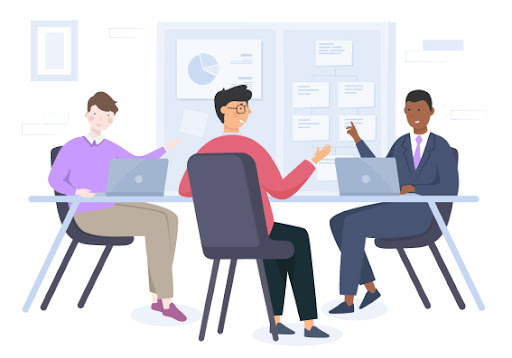
Put simply, an employee journey is the complete experience an individual has while they're employed at an organization, starting from the day they apply for the job until the day they leave. Such a journey includes every interaction they have with the organization, whether it's having a conversation with a manager, participating in a training session, or attending a team meeting. Think of it like a story that unfolds over time, each chapter representing a different part of the work life.
For example, consider Steve, who just got a job at a technology firm. His employee journey starts with applying for a job, getting an interview invitation, and having the interview. Then he has the second interview and receives the job offer, which moves Steve to the next stage — his first day of work, where he's welcomed by his colleagues and continues as he works on projects, receives feedback, and grows his skills.
Over the years, Steve might get promoted, switch to different roles within the company, or take part in special programs. His journey captures all these experiences right up until his retirement party or the moment he leaves the company, capturing the entire arc of his career at the firm.
Benefits of employee journey mapping

Why is it essential to know the state of your employees’ journeys and improve them? Many smart companies all over the world are using a very effective idea. They treat their employees really well, just like they do with their customers.
They've figured out that this is super important. In this paragraph, we'll explain why this is a big deal and how it can make companies much better in today's world.
Here are a few down-to-earth points as to why you should take employee experience seriously:
- Employee engagement means customer success. Did you know engaged employees are almost 90% less likely to leave their company compared to employees who have a low level of engagement? Leave alone the fact that engaged employees are a lot more productive.
- Employees come at a great cost . And it’s not just about money. Customers do not interact with CEOs. They interact with front-desk staff, customer support, sales, you name it. Mistakes of these people may seriously damage your company’s reputation. That alone is a good reason to start thinking about designing a better employee experience.
- Word of mouth. Finally, just like a great customer product, an outstanding employee experience gets spread by word of mouth. It becomes one of the ways you attract talented people to the company.
- Enhanced onboarding and retention. By understanding the employee journey, organizations can create a more structured and engaging onboarding process. This will help new hires become productive more quickly and feel a greater sense of belonging, which can reduce turnover rates.
Now that we’re on the same page regarding the importance of designing a better experience for employees at a company, it’s time to proceed to actionable to-dos.
Read also: Case study on improving the employee journey
Employee experience journey mapping
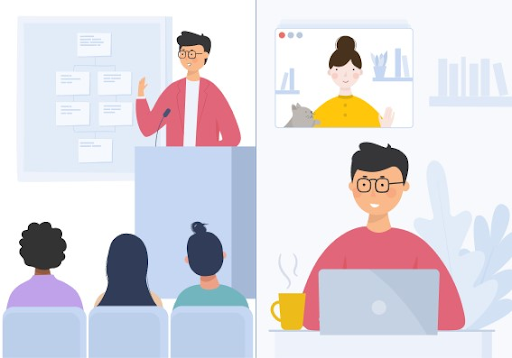
One of the proven approaches to analyzing, understanding, and enhancing the employee experience and employee journeys is a great technique called customer journey mapping.
Not familiar with this subject? Check out our complete guide on creating a customer journey map .
The idea behind this technique is fairly simple: you take the journey people take when interacting with your business and break it down into stages. The next step is to look at each stage from different angles to get a complete picture of what the experience of this particular person may look like. In other words, a map of your employee’s journey helps you see through the eyes of your customer or, in our case, through the eyes of employees.
There’s another similar technique called employee experience mapping. These two techniques are often used interchangeably, but it should be noted that experience mapping takes a broader view. It goes beyond chronicling the stages an employee goes through, delving into the qualitative aspects of an employee's daily life within the organization, their experience with it. This encompasses, for example, the emotional experiences of employees at various touchpoints, like participating in daily team meetings, using the company’s tools and technologies, or during interactions with leadership.
What to map?
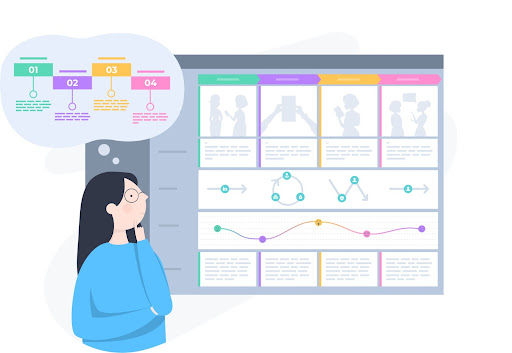
First, it’s important to decide which part of the employee experience journey you want to start with. At this point, there are a couple of routes you may take:
- High-level mapping. Obviously, it simply would take too much time to map the entire journey, as the employee lifecycle is way too long for one map. Unless you want to start with a high-level map and dive into details later as you dig more information. The downside of a high-level approach is that you won't get a lot out of it. The formula is fewer details = fewer insights.
- Focus on a specific part of the journey. It would be a whole lot easier to start with something like onboarding. The best part about onboarding is that if you are an HR, you have just enough knowledge to take the first steps.
- Identify the most problematic stage and start with it. However, it’s not that easy to tell which part is the most problematic without running research.
Employee journey stages
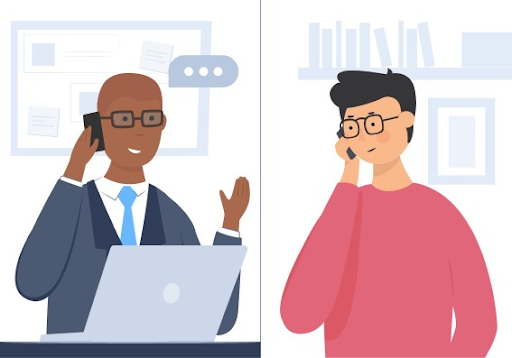
As we’ve touched the employee journey stages, let’s consider some of the common ones to give you an idea of what to include in your employee experience journey map.
- Attraction. This is the beginning of the journey, where potential employees first encounter the company brand or job opening. They form initial impressions about the company culture and values, and these impressions are often influenced by the company website, social media presence, and employer reviews.
- Recruitment. The potential employee actively considers the job opening and applies for a position. This stage may encompass submitting applications, attending interviews, and communicating with the company's hiring team.
- Hiring. This is when you make the job offer, and the candidate accepts it.
- Onboarding. The new employee starts their job, they get oriented and integrated into the organization. They learn about company policies, may undergo training for their specific role, and start building relationships with the team and managers.
- Development. This stage involves the employee's growth within the organization. It includes receiving feedback, pursuing professional development opportunities, and potentially participating in mentoring or coaching programs.
- Advancement. This is when the employee moves up within the company hierarchy through promotions or transfers.
- Exit. This is the final stage of the employee journey when the employee leaves the organization, whether for retirement, a new job, or other reasons. The exit process can include such substages as exit interviews, knowledge transfer, and the employee's transition out of the company.
Looking for more information about employee journey stages to add to your model of journey map? Check out our deck of cheat cards to look deeper into the stages and substages of employee journeys.
Three steps in designing an employee journey map
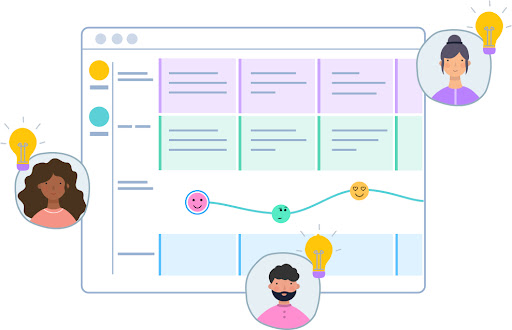
Now, we will cover the basic steps for creating a full-fledged, true-to-love employee journey map.
Start with employee experience research
Employee research, often referred to as employee surveys or employee feedback programs, is of paramount importance for organizations across various industries.
It involves collecting, analyzing, and acting upon feedback from employees to gain insights into their experiences, attitudes, and needs within the workplace. Here are some key reasons why employee research is important:
- It enhances employee engagement. By understanding what engages or disengages employees, organizations can take targeted actions to boost engagement.
- It supports informed decision-making. Employee research provides quantifiable insights, allowing leaders to allocate resources more effectively and prioritize initiatives that matter most to employees.
- It helps measure progress. By conducting surveys periodically, organizations can track progress over time. They can see how their efforts to address employee concerns and improve the workplace have translated into tangible results.
In other words, employee research is a strategic tool that empowers organizations to create better workplaces, improve employee satisfaction, increase productivity, and drive overall success. It aligns the interests of employees and employers, contributing to a positive organizational culture and sustainable growth.

So, you should always start with profound research. Otherwise, what exactly are we going to put on that map? And when it comes to interviewing employees, some really nice factors contribute to great research:
- Employees are easy to get in touch with, and such research is inexpensive compared to customer research. Imagine a situation where you have to bring a bunch of customers for a focus group or an interview. Each has a different time availability and level of involvement. Plus, chances are they might want to have something in return. Whereas, employees are almost always there and ready to share their thoughts over a cup of coffee.
- You have lots of data already. If you’ve been working in the company for a while, there’s probably enough information for you to start with employee journey mapping. And you can always talk to the HR department to get this information.
- Co-creation opportunities. There is nothing better than inviting coworkers for a journey mapping workshop . And again, it’s much easier within a company than when you’re trying to bring in real customers.
In addition to employee feedback and interviews, it may also be helpful to review internal audit reports to gain a better understanding of potential areas for improvement in the employee experience journey.
Surely, there will be a conflict of interests and ethics issues, so be ready to get creative!
Before doing any kind of research, make sure you come up with a list of sources. They can be:
- Employee feedback. If you are an HR, chances are you have a lot of info on hand that can be used for employee experience mapping.
- Interviews with employees. Trust me, they have so much to say, and chances are they wanted to say it years ago.
- Interviews with managers. They observe employees and are able to give you a whole different perspective on things.
- Polls and surveys. Those can give a lot of quantitative data. And the best part is that polls can be anonymous.
Produce an employee persona
To truly empathize with employees, it’s vital to create an employee persona. It is a made-up person that is based on real employees. It should have some basic description as well as some of the details you found during the research phase: goals, motivations and frustrations, some background, and maybe even skills.
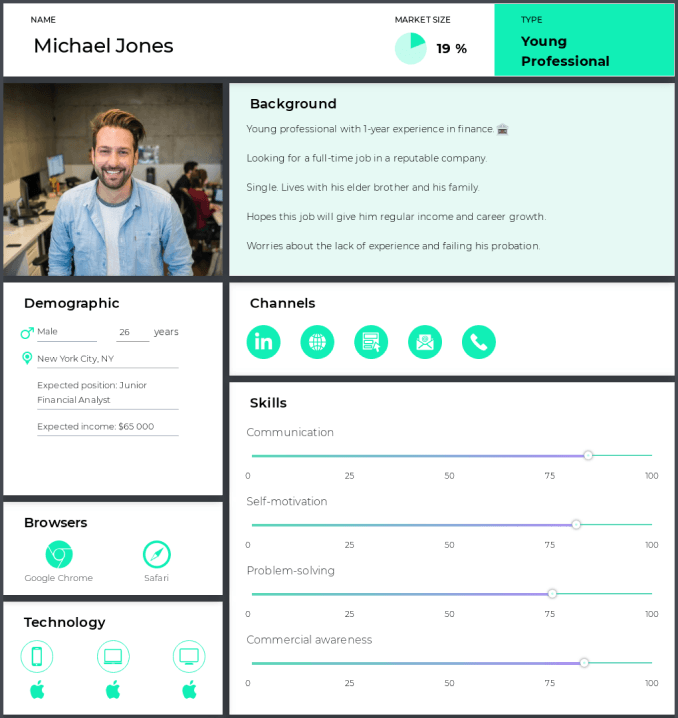
Meet Michael, our example, a young finance professional in the heart of NYC. With a year's experience under his belt, he aspired to land a job in a prestigious firm. Living with his brother's family in their cozy apartment, he found solace in their company but yearned for his own space. His daily routine includes job hunting between work, and his mind is always set on reaching the top of the corporate ladder.
You can have one, two, or multiple personas depending on your needs. To create your own persona, here's our guide with examples of how to create a persona in 7 steps .

Map the employee experience journey
Now, after the research has been done and personas have been created, it’s time to put everything on a map. The way you map an employee experience journey is the following:
- Define the stages you need for your map
If we talk about the journey part that covers a new employee onboarding, there will be stages like awareness, research, first contact, phone screening, job interview, the hiring process, the first day, the list goes on. It is very likely that some stages will have multiple substages (especially the hiring process and job interview).
- Decide on map layers or sections
These are layers of data you want to have on your map. Some of the commonly used journey map layers include employee goals, employee expectations, emotional experience, process, channels, touchpoints, and problems.
For each stage you defined, fill in the map sections with data about this stage. For example, write down the goals of the employee persona as well as their expectations or describe the process the employee persona goes through at each stage.
Feel free to add anything that can benefit you in the search for employee experience insights. If you feel like adding some quotes from real employees — it's great. Want to add a photo of the workplace for a new employee? Go ahead!
In fact, if you're mapping employee experience in our journey mapping tool , multiple sections will help you capture all the details you might want to have in your map!
- Find flaws and come up with solutions
Once you see the whole picture, you can start looking for roadblocks that prevent employees from, for example, getting the best onboarding experience.
Once you put roadblocks on the map, you can come up with ideas and solutions. In the end, you will have a map that looks somewhat like this:
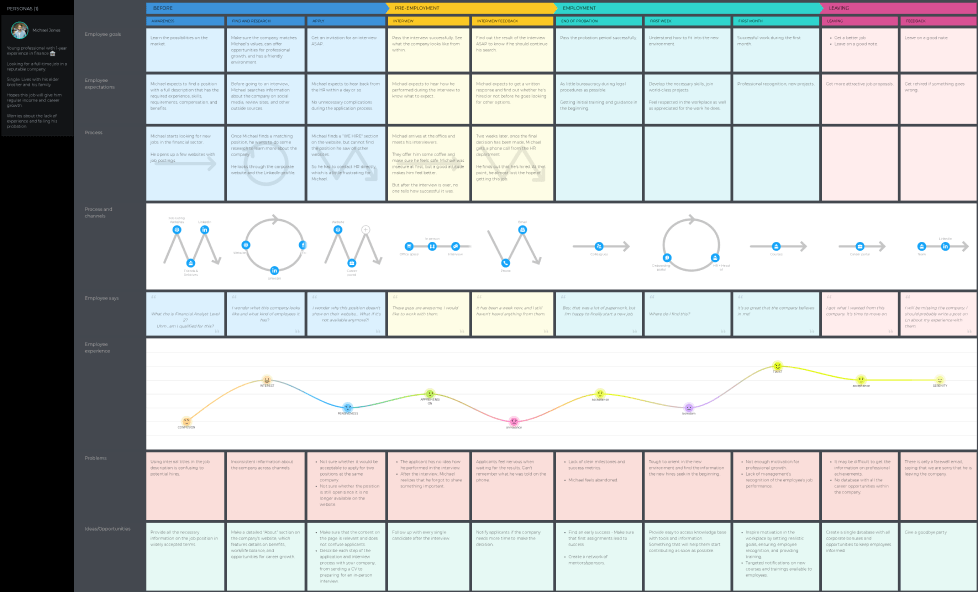
What’s next?
Once the journey map has been created, it serves as a valuable foundation for a positive employee experience. To ensure that their experience continually improves and stays aligned with the evolving needs of your company, consider the following actions:
- Collect ongoing feedback. Encourage employees to provide feedback throughout their journey. This can be done through surveys, one-on-one discussions, or anonymous feedback channels. This feedback should be used to identify pain points and areas for improvement.
- Regularly update the map. As processes and procedures change within your organization, update the map accordingly. This ensures that it remains an accurate reflection of the journey and can guide improvements effectively.
- Implement quick wins. Identify low-hanging fruit or quick wins based on the map insights. These are small, immediate changes that can significantly improve the experience without requiring extensive resources or time.
- Prioritize key touchpoints. Focus on the most critical touchpoints in the journey that have the greatest impact on the employee experience. Allocate resources and efforts to improve these areas first.
- Involve cross-functional teams. Collaborate with HR, IT, training, and other departments to address issues and implement changes. A cross-functional approach ensures a holistic perspective and comprehensive solutions.
- Set clear objectives. Define specific goals and objectives for improving the employee experience. This provides a clear direction for change initiatives and helps measure their success.
- Training and development. Invest in training and development programs for managers and mentors involved in onboarding. Equip them with the skills and knowledge needed to support the company’s employees effectively.
- Leverage technology. Use technology to streamline and automate parts of the onboarding process. This can reduce administrative burdens and create a more seamless experience for new hires.
- Monitor progress. Continuously monitor the impact of changes on the employee experience. Key performance indicators (KPIs) should be tracked and analyzed to ensure that improvements are achieving the desired outcomes.
- Employee involvement. Involve new employees in the co-creation of their onboarding journey. Seek their input and preferences to tailor the process to individual needs.
- Celebrate successes. Acknowledge and celebrate successes and improvements at different stages of your employees’ journey. Positive reinforcement can motivate teams to keep making enhancements.
- Stay compliant. Ensure that the onboarding process remains compliant with all relevant laws and regulations. Regularly review and update documentation as needed.
- Communication and transparency. Maintain open and transparent communication with employees regarding changes in the onboarding process. Provide clear explanations and expectations to manage their experience effectively.
Remember, journey mapping is not a one-time activity; it should evolve alongside your company's growth and changing needs. By actively listening to employee feedback, making data-driven decisions, and continually refining the onboarding experience, your organization can create a positive and impactful journey for new employees from day one.
Wrapping up
Mapping the employee experience is undoubtedly a challenging undertaking, one that demands a significant amount of effort, time, and resources. However, the rewards that come with creating an exceptional workplace environment and a satisfied workforce are simply too compelling to ignore.
Good news: we have a library of free templates, including employee experience map templates, which you can use for high-level mapping. Either download a PDF file and print it out or create a map in our Journey Mapping Tool, tweak it as you like, and then export it to show all the insights you came up with!
Related posts
Rate this post
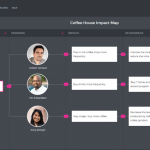
Thanks for the map. It’s a great template to start with for my company’s employee journey.
You’re welcome, Chris! We also have templates for remote employee journey and an employee journey mapping whitepaper with expert advice. Be sure to check those out and happy mapping!
Thank you for these employee journey mapping examples. Our problem is not so much with onboarding but with keeping people from leaving after 6-8 months. Do you have any advice on how to improve retention in the long run?
Hi Tarik, you’re welcome! We do have some employee experience examples you could use for better retention, and a detailed breakdown of common stages people go after the probation period is over: annual performance evaluation, office events, paternity leave, skill upgrading, etc.
You can find them all in our filled-out template called “End-to-end employee journey map” right here: https://uxpressia.com/templates/education-and-career
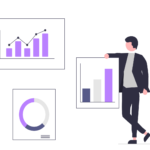
United States
+1-800-872-1727
Or see our complete list of local country numbers
Chat Unavailable
Allow Functional Cookies to enable chat
Send us your comments, questions, or feedback.
- All Products
- Human Capital Management
- Employee Central
- Technical Information
- Plans and Pricing
- Get Started
SAP SuccessFactors Employee Central

Explore how you can put your people at the center of everything.
Watch the replays
What is SAP SuccessFactors Employee Central?
Our flexible, cloud-based human resources information system (HRIS) software helps standardize HR processes globally and provides visibility to make better people decisions.
Meet the expectations of your people and the needs of your organization with cloud HRIS software.
- Manage user profiles and organizational charts with confidence
- Support HR compliance management in over 100 locales across all industries
- Increase productivity with self-service tools and proactive alerts
- Leverage embedded capabilities for global benefits administration and absence management
Fast-track your HR journey to the cloud
Hear how SAP and our global network of partners can support you on your journey.
Register for our live webinar
See how customers are succeeding with SAP
Providing better employee experiences in the cloud
See how Swiss Re empowers employees to take control of their experiences using modern HR tools and technology.
Fostering an inclusive, future-ready workforce
Explore how Sanlam delivers consistent experiences to workers, empowering them to learn, lead, and live its common purpose.
Optimizing employee and customer experiences
Discover how Emirates Fast Food Company digitalizes operations and provides mobile-first HR experiences.
Integrating and automating HR processes
Find out how GROWMARK provides consistent, efficient HR services across its operations with a centralized HR platform.
- View all customer stories
What are analysts saying about SAP?
HR takes the lead: Strategies for growth-focused organizations
Explore IDC research insights into the strategies and challenges of midsize HR leaders and how the right technology solutions can help them achieve their goals.
Analyzing the economic benefits of moving to SAP SuccessFactors solutions
See how organizations that have moved to SAP SuccessFactors solutions can realize over 100% ROI over a five-year period.
HR's role in unlocking organizational growth
Discover how HR leaders are integral to the success of fast growing organizations, based on the latest research from Oxford Economics.
Frequently asked questions
What is sap's hris.
SAP SuccessFactors Employee Central is SAP’s HRIS software. The cloud solution can help you standardize processes globally and provide visibility to make better people decisions. It includes capabilities for managing user profiles, organizational charts, global benefits administration, and absence management.
Why should organizations use a cloud HRIS?
A cloud HRIS can help you take your HR strategy to new levels with an improved user experience, mobile functionality, and the flexibility to meet changing business demands. You can also take advantage of the latest innovations, helping you better support your managers and employees. Learn more about the benefits of moving to the cloud .
What is SAP benefits administration software?
SAP SuccessFactors Employee Central includes capabilities for managing your global benefits . A flexible framework helps you standardize the global management of benefits for your entire organization.
What is SAP HR compliance software?
SAP SuccessFactors Employee Central includes capabilities for managing HR compliance. Embedded localization supporting over 100 locales can help you ensure compliance and standardize HR processes across the globe. Additionally, you can stay up to date on legal and regulatory changes within the integrated upgrade center.
We are currently using SAP ERP Human Capital Management (HCM) – how does SAP help us move to the cloud?
We have a program dedicated to helping existing SAP ERP HCM customers move to the cloud. Learn more about our offerings here .

Search form

Sexual & Gender Minority
Engaging communities. influencing change..

A Message from the Strategist
As the Principal Strategist for the Sexual and Gender Minority Employment Portfolio, I am elated to introduce the NIH theme for our 2024 Pride Month commemoration, "Pride in Belonging."
I hope this month’s activities will inspire you to take pride in your individuality and help foster the sense of belonging many of us find within our communities. We will highlight how various aspects of identity intersect and explain the importance of this intersection in addressing systemic inequalities here at NIH and for the communities we serve.
Belonging is experiencing happiness and comfort as a valued member of a group where acceptance and support from others are evident. By focusing on belonging, NIH recognizes the multifaceted nature of identity in the lesbian, gay, bisexual, transgender, queer, intersex, and asexual community and the challenges faced by individuals who navigate intersecting identities. This powerful message highlights the strength and beauty in coming together, embracing differences, and fostering a supportive environment where everyone feels valued and accepted.
By working together, both within the organization and with external allies, NIH can continue to make strides toward creating a more equitable and welcoming environment for all staff.

Monique Robinson Sexual and Gender Minority Employment Portfolio Strategist
- Message From Leadership
SafeZone Training
About the artwork, a message from leadership.
Dear Colleagues,
NIH proudly celebrates Pride Month under the banner of “Pride in Belonging.” This theme embodies the ongoing journey of recognizing, embracing, and uplifting LGBTQIA+ people across NIH and beyond. This year’s Pride Month centers on belonging to highlight the importance of embracing diversity and cultivating an inclusive atmosphere where all individuals are esteemed and empowered to flourish. Here at NIH, we know that diversity of thought and backgrounds within the NIH workforce is vital to advancing the mission of our agency.
NIH is committed to building belonging for LGBTQIA+ communities not only this month but throughout the year. We are proud of the work that is being done across the agency toward cultivating diversity in clinical trials and broader health research representative of sexual and gender diverse communities. We have also taken steps toward fostering a more supportive, respectful, and inclusive workplace for LGBTQIA+ people within the biomedical and health science research enterprise.
We hope that you will join us in celebrating Pride Month at our events throughout June. To kick off the month, we invite you to attend the Office of Equity, Diversity, and Inclusion’s (EDI) Sexual & Gender Minority Employment Portfolio Pride Flag Raising tomorrow, June 4, at 11:30 a.m. in front of Building 1. Raising the Pride flag signifies that LGBTQIA+ people are welcomed and celebrated at NIH, while also demonstrating our agency’s commitment to elevating these communities’ voices and perspectives in the work we do. Other Pride events this month include weekly SafeZone training from EDI along with a celebration and scientific webinar hosted by the NIH Sexual & Gender Minority Research Office .
Together, let us continue to build a culture of respect, dignity, and belonging for all members of the NIH community. This month and throughout the year we encourage you to visit EDI’s website, explore the blog posts , follow the office on LinkedIn and X , and watch EDI’s YouTube channel to stay informed.

Monica M. Bertagnolli, M.D. NIH Director

Kevin D. Williams, Esq. EDI Director
* The May 1 NIH and EDI Directors’ all-staff message incorrectly stated that the 80th anniversary of the Chinese Exclusion Act/Magnuson Act took place at the National Library of Medicine. The anniversary and exhibit took place, and is currently still running, at the NIH Library .
What were you surprised to learn during our Pride 2024 observance?
Join the conversation on our social media channels below. Share what posts resonated with you and let us know if there are other topics you would like to see in the future.
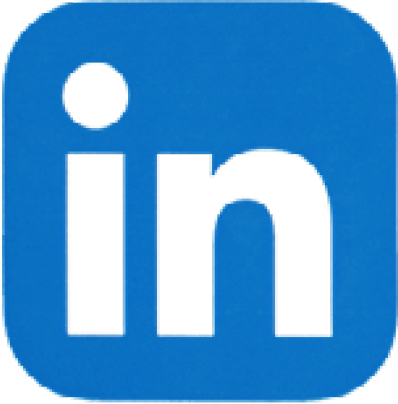
#PrideInBelonging #Pride2024 #NIH2024Pride
What Women Want . . . At Work Podcast
Join us for specially scheduled Pride Month SafeZone Trainings. SafeZone promotes awareness and education on the needs and concerns of lesbian, gay, bisexual, transgender, queer, intersex, and asexual individuals.
- Thursday, June 6, 2024 | 9 a.m. to 12 p.m. EDT
- Wednesday, June 12, 2024 | 9 a.m. to 12 p.m. EDT
- Monday, June 24, 2024 | 1 p.m. to 4 p.m. EDT

Inclusive Pride Flag Raising
Tuesday, June 4, 2024 | 11:30 a.m. - 1 p.m. EDT
On Tuesday, June 4, join EDI and Salutaris for the Pride Flag Raising event. Meet us on the lawn in front of Building 1 at the flagpole.
In the event of rain, we will meet on the 8th Floor of Building 31. Food trucks will be available at Building 10 South, Lot 10 H.

2024 Safety, Health, and Wellness Day
Tuesday, June 18, 2024 | 11 a.m. - 2 p.m. EDT
The 2024 NIH Safety, Health, and Wellness Day will be held at the 6th Floor Conference Center of Building 31, C Wing on the NIH Bethesda campus. Everyone is welcome.
Featured Blogs

Meet Salutaris – The NIH Sexual and Gender Minority Employee Resource Group

The Journey of Belonging Starts in the Family

Active and Authentic Allyship
It is not our differences that divide us. It is our inability to recognize, accept, and celebrate those differences. — Audre Lorde, American Writer and Professor
Our 2024 Pride Month artwork celebrates the vibrancy and intersectionality of the LGBTQIA+ community. Although the flag has evolved into several variations , some of which are subtly placed as buttons worn by the people in the image, the original Pride flag created by Kansas native Gilbert Baker boldly sits at the center of the artwork.
The state of AI in early 2024: Gen AI adoption spikes and starts to generate value
If 2023 was the year the world discovered generative AI (gen AI) , 2024 is the year organizations truly began using—and deriving business value from—this new technology. In the latest McKinsey Global Survey on AI, 65 percent of respondents report that their organizations are regularly using gen AI, nearly double the percentage from our previous survey just ten months ago. Respondents’ expectations for gen AI’s impact remain as high as they were last year , with three-quarters predicting that gen AI will lead to significant or disruptive change in their industries in the years ahead.
About the authors
This article is a collaborative effort by Alex Singla , Alexander Sukharevsky , Lareina Yee , and Michael Chui , with Bryce Hall , representing views from QuantumBlack, AI by McKinsey, and McKinsey Digital.
Organizations are already seeing material benefits from gen AI use, reporting both cost decreases and revenue jumps in the business units deploying the technology. The survey also provides insights into the kinds of risks presented by gen AI—most notably, inaccuracy—as well as the emerging practices of top performers to mitigate those challenges and capture value.
AI adoption surges
Interest in generative AI has also brightened the spotlight on a broader set of AI capabilities. For the past six years, AI adoption by respondents’ organizations has hovered at about 50 percent. This year, the survey finds that adoption has jumped to 72 percent (Exhibit 1). And the interest is truly global in scope. Our 2023 survey found that AI adoption did not reach 66 percent in any region; however, this year more than two-thirds of respondents in nearly every region say their organizations are using AI. 1 Organizations based in Central and South America are the exception, with 58 percent of respondents working for organizations based in Central and South America reporting AI adoption. Looking by industry, the biggest increase in adoption can be found in professional services. 2 Includes respondents working for organizations focused on human resources, legal services, management consulting, market research, R&D, tax preparation, and training.
Also, responses suggest that companies are now using AI in more parts of the business. Half of respondents say their organizations have adopted AI in two or more business functions, up from less than a third of respondents in 2023 (Exhibit 2).
Gen AI adoption is most common in the functions where it can create the most value
Most respondents now report that their organizations—and they as individuals—are using gen AI. Sixty-five percent of respondents say their organizations are regularly using gen AI in at least one business function, up from one-third last year. The average organization using gen AI is doing so in two functions, most often in marketing and sales and in product and service development—two functions in which previous research determined that gen AI adoption could generate the most value 3 “ The economic potential of generative AI: The next productivity frontier ,” McKinsey, June 14, 2023. —as well as in IT (Exhibit 3). The biggest increase from 2023 is found in marketing and sales, where reported adoption has more than doubled. Yet across functions, only two use cases, both within marketing and sales, are reported by 15 percent or more of respondents.
Gen AI also is weaving its way into respondents’ personal lives. Compared with 2023, respondents are much more likely to be using gen AI at work and even more likely to be using gen AI both at work and in their personal lives (Exhibit 4). The survey finds upticks in gen AI use across all regions, with the largest increases in Asia–Pacific and Greater China. Respondents at the highest seniority levels, meanwhile, show larger jumps in the use of gen Al tools for work and outside of work compared with their midlevel-management peers. Looking at specific industries, respondents working in energy and materials and in professional services report the largest increase in gen AI use.
Investments in gen AI and analytical AI are beginning to create value
The latest survey also shows how different industries are budgeting for gen AI. Responses suggest that, in many industries, organizations are about equally as likely to be investing more than 5 percent of their digital budgets in gen AI as they are in nongenerative, analytical-AI solutions (Exhibit 5). Yet in most industries, larger shares of respondents report that their organizations spend more than 20 percent on analytical AI than on gen AI. Looking ahead, most respondents—67 percent—expect their organizations to invest more in AI over the next three years.
Where are those investments paying off? For the first time, our latest survey explored the value created by gen AI use by business function. The function in which the largest share of respondents report seeing cost decreases is human resources. Respondents most commonly report meaningful revenue increases (of more than 5 percent) in supply chain and inventory management (Exhibit 6). For analytical AI, respondents most often report seeing cost benefits in service operations—in line with what we found last year —as well as meaningful revenue increases from AI use in marketing and sales.
Inaccuracy: The most recognized and experienced risk of gen AI use
As businesses begin to see the benefits of gen AI, they’re also recognizing the diverse risks associated with the technology. These can range from data management risks such as data privacy, bias, or intellectual property (IP) infringement to model management risks, which tend to focus on inaccurate output or lack of explainability. A third big risk category is security and incorrect use.
Respondents to the latest survey are more likely than they were last year to say their organizations consider inaccuracy and IP infringement to be relevant to their use of gen AI, and about half continue to view cybersecurity as a risk (Exhibit 7).
Conversely, respondents are less likely than they were last year to say their organizations consider workforce and labor displacement to be relevant risks and are not increasing efforts to mitigate them.
In fact, inaccuracy— which can affect use cases across the gen AI value chain , ranging from customer journeys and summarization to coding and creative content—is the only risk that respondents are significantly more likely than last year to say their organizations are actively working to mitigate.
Some organizations have already experienced negative consequences from the use of gen AI, with 44 percent of respondents saying their organizations have experienced at least one consequence (Exhibit 8). Respondents most often report inaccuracy as a risk that has affected their organizations, followed by cybersecurity and explainability.
Our previous research has found that there are several elements of governance that can help in scaling gen AI use responsibly, yet few respondents report having these risk-related practices in place. 4 “ Implementing generative AI with speed and safety ,” McKinsey Quarterly , March 13, 2024. For example, just 18 percent say their organizations have an enterprise-wide council or board with the authority to make decisions involving responsible AI governance, and only one-third say gen AI risk awareness and risk mitigation controls are required skill sets for technical talent.
Bringing gen AI capabilities to bear
The latest survey also sought to understand how, and how quickly, organizations are deploying these new gen AI tools. We have found three archetypes for implementing gen AI solutions : takers use off-the-shelf, publicly available solutions; shapers customize those tools with proprietary data and systems; and makers develop their own foundation models from scratch. 5 “ Technology’s generational moment with generative AI: A CIO and CTO guide ,” McKinsey, July 11, 2023. Across most industries, the survey results suggest that organizations are finding off-the-shelf offerings applicable to their business needs—though many are pursuing opportunities to customize models or even develop their own (Exhibit 9). About half of reported gen AI uses within respondents’ business functions are utilizing off-the-shelf, publicly available models or tools, with little or no customization. Respondents in energy and materials, technology, and media and telecommunications are more likely to report significant customization or tuning of publicly available models or developing their own proprietary models to address specific business needs.
Respondents most often report that their organizations required one to four months from the start of a project to put gen AI into production, though the time it takes varies by business function (Exhibit 10). It also depends upon the approach for acquiring those capabilities. Not surprisingly, reported uses of highly customized or proprietary models are 1.5 times more likely than off-the-shelf, publicly available models to take five months or more to implement.
Gen AI high performers are excelling despite facing challenges
Gen AI is a new technology, and organizations are still early in the journey of pursuing its opportunities and scaling it across functions. So it’s little surprise that only a small subset of respondents (46 out of 876) report that a meaningful share of their organizations’ EBIT can be attributed to their deployment of gen AI. Still, these gen AI leaders are worth examining closely. These, after all, are the early movers, who already attribute more than 10 percent of their organizations’ EBIT to their use of gen AI. Forty-two percent of these high performers say more than 20 percent of their EBIT is attributable to their use of nongenerative, analytical AI, and they span industries and regions—though most are at organizations with less than $1 billion in annual revenue. The AI-related practices at these organizations can offer guidance to those looking to create value from gen AI adoption at their own organizations.
To start, gen AI high performers are using gen AI in more business functions—an average of three functions, while others average two. They, like other organizations, are most likely to use gen AI in marketing and sales and product or service development, but they’re much more likely than others to use gen AI solutions in risk, legal, and compliance; in strategy and corporate finance; and in supply chain and inventory management. They’re more than three times as likely as others to be using gen AI in activities ranging from processing of accounting documents and risk assessment to R&D testing and pricing and promotions. While, overall, about half of reported gen AI applications within business functions are utilizing publicly available models or tools, gen AI high performers are less likely to use those off-the-shelf options than to either implement significantly customized versions of those tools or to develop their own proprietary foundation models.
What else are these high performers doing differently? For one thing, they are paying more attention to gen-AI-related risks. Perhaps because they are further along on their journeys, they are more likely than others to say their organizations have experienced every negative consequence from gen AI we asked about, from cybersecurity and personal privacy to explainability and IP infringement. Given that, they are more likely than others to report that their organizations consider those risks, as well as regulatory compliance, environmental impacts, and political stability, to be relevant to their gen AI use, and they say they take steps to mitigate more risks than others do.
Gen AI high performers are also much more likely to say their organizations follow a set of risk-related best practices (Exhibit 11). For example, they are nearly twice as likely as others to involve the legal function and embed risk reviews early on in the development of gen AI solutions—that is, to “ shift left .” They’re also much more likely than others to employ a wide range of other best practices, from strategy-related practices to those related to scaling.
In addition to experiencing the risks of gen AI adoption, high performers have encountered other challenges that can serve as warnings to others (Exhibit 12). Seventy percent say they have experienced difficulties with data, including defining processes for data governance, developing the ability to quickly integrate data into AI models, and an insufficient amount of training data, highlighting the essential role that data play in capturing value. High performers are also more likely than others to report experiencing challenges with their operating models, such as implementing agile ways of working and effective sprint performance management.
About the research
The online survey was in the field from February 22 to March 5, 2024, and garnered responses from 1,363 participants representing the full range of regions, industries, company sizes, functional specialties, and tenures. Of those respondents, 981 said their organizations had adopted AI in at least one business function, and 878 said their organizations were regularly using gen AI in at least one function. To adjust for differences in response rates, the data are weighted by the contribution of each respondent’s nation to global GDP.
Alex Singla and Alexander Sukharevsky are global coleaders of QuantumBlack, AI by McKinsey, and senior partners in McKinsey’s Chicago and London offices, respectively; Lareina Yee is a senior partner in the Bay Area office, where Michael Chui , a McKinsey Global Institute partner, is a partner; and Bryce Hall is an associate partner in the Washington, DC, office.
They wish to thank Kaitlin Noe, Larry Kanter, Mallika Jhamb, and Shinjini Srivastava for their contributions to this work.
This article was edited by Heather Hanselman, a senior editor in McKinsey’s Atlanta office.
Explore a career with us
Related articles.

Moving past gen AI’s honeymoon phase: Seven hard truths for CIOs to get from pilot to scale

A generative AI reset: Rewiring to turn potential into value in 2024

Implementing generative AI with speed and safety

COMMENTS
Het begrijpen van de employee journey van je werknemers is belangrijk om werknemerssucces mogelijk te maken. Personeelsdiensten doen daarom aan Employee journey mapping om belangrijke inzichten te verwerven. Met een duidelijk inzicht in de employee journey genieten bedrijven namelijk van de volgende voordelen:. Een betere werknemerservaring: door het herkennen en analyseren van de ...
De employee journey kan worden onderverdeeld in zes fasen: werving, onboarding, ontwikkeling, retentie, beëindiging en alumni. McKinsey & Company. De employee journey is de reis die een medewerker aflegt binnen een organisatie, vanaf het moment dat hij of zij voor het eerst in contact komt met het bedrijf totdat hij of zij het bedrijf verlaat.
De employee journey, ook wel employee lifecycle genoemd, is het traject die je medewerkers afleggen vanaf hun sollicitatie bij je bedrijf tot hun offboarding. Die weg bepaalt hoe je medewerkers hun job, of specifieke elementen ervan (touchpoints) beleven. Door elk van deze stappen goed uit te werken zorg je ervoor dat je het juiste talent kan ...
Een employee journey is de reis die medewerkers afleggen bij een organisatie. Het begint bij het solliciteren en eindigt zodra de medewerker de organisatie verlaat. Tijdens de journey komen medewerkers verschillende dingen tegen, hebben zij ervaringen en gevoelens. Dit alles wordt samengevat in de employee journey. Neem bijvoorbeeld de onboarding.
Mail dan met [email protected], of bel me dan maak ik graag een afspraak (06-23881672) De employee journey maakt de succesfactoren voor groei van een medewerker in de organisatie zichtbaar. Je ziet waar je door middel van slimme feedback of interventie als leidinggevende en organisatie invloed uitoefent om de ervaringen van de medewerker om ...
Stap 2. Breng de reis van je persona in kaart. Nu je de verschillende persona's van je organisatie kent, kun je beginnen met het in kaart brengen van de interacties die zij met je organisatie kunnen hebben. Schakel een groep collega's in om je van de juiste informatie te voorzien. Zorg dat die groep alle persona's bevat die je in de ...
This holistic, objective perspective will show leaders: the moments that matter most to employees. success strategies and high points. blind spots and turnover risk factors. When employers study ...
Tips & tricks. Breng met de employee journey de belangrijkste contactmomenten in kaart en ontdek waar de employee experience kan worden verbeterd. Dit helpt HR en communicatie om prioriteiten te bepalen. Gebruik de belofte aan medewerkers als vertrekpunt voor de gehele employee journey.
Employee journey mapping is the process of creating a defined timeline that covers each stage of the employee lifecycle. The aim is to identify the 'moments that matter' for employees so that you can improve each touchpoint and offer the best possible employee experience. That way, you can build an engaged, loyal and productive workforce.
The "Employee Journey" refers to the complete journey an employee takes within an organization, from first contact to the moment they leave. This term encompasses every interaction, experience and moment of contact employees have with the company, playing a crucial role in both their professional development and overall satisfaction with ...
The employee journey is the collection of experiences an employee has throughout their entire tenure with a company. It encompasses everything from recruitment to employee onboarding, training, career development, and eventual departure from the company. Essentially, it's the story of an employee's time with your business.
Benefits of the employee journey mapping process include: Visualizing each employee's experience at your company. Illuminating holes or areas for improvement in your current employee experience. Enabling more accurate job descriptions. Informing budget allocation for initiatives that boost retention and engagement.
5. Besteed 80% van je energie aan 6 contactmomenten. Net als in de customer journey heeft de medewerker een aantal momenten waarop hij/zij in aanraking komt met de organisatie. Het verschil met de customer journey is dat de momenten in de employee journey veel duidelijker zijn aan te wijzen.
Volg. Een Employee Journey of Employee journey model omvat de hele 'reis' die een medewerker maakt binnen een organisatie.. Deze reis begint bij het eerste contact in een sollicitatieproces en eindigt op het moment dat de medewerker de organisatie verlaat. Gedurende deze reis krijgen medewerkers te maken met verschillende ervaringen en ...
Dit geeft inzicht in hoe je medewerkers hun werk ervaren gedurende de verschillende stadia in de employee journey. Dit helpt je om je organisatie van binnenuit te verbeteren, het juiste talent aan te trekken en te behouden én je medewerkers de juiste doorgroei- en ontwikkelingsmogelijkheden aan te bieden. Het blijft niet bij het verzamelen van ...
Employee journey mapping allows you to: Align the organization on a common view of the actual employee experience. Focus the EX program on moments that matter most. Facilitate employee-centric thinking and actions. Prioritize resources and funding. Clarify critical roles within the organization and moments that matter most.
Updated October 17, 2022. Mapping employee journeys helps organizations understand the different stages employees go through while working for them. This form of mapping is a framework for employers that prioritizes resources and funding, clarifies roles, and identifies important moments employees experience while working in an organization.
Je maakt een employee journey map. Hiermee kun je de medewerkersreis beter begrijpen en beïnvloeden. Door de reis en de verschillende touch points te visualiseren wordt duidelijk op welke momenten je als organisatie een grote impact hebt op je medewerkers. En ook hoe je deze impact nu gebruikt.
Online Human Journey trajectvoor HR professionals. Voor HR-professionals die hun employee journey willen verbeteren en daardoor medewerkers behouden. Verken verschillende levensfasen voor meer onderling begrip en een betere samenwerking. Krijg inzicht in identiteitsvorming en de impact hiervan op de organisatiecultuur.
An employee journey, also known as the employee life cycle, is an employee's various stages of tenure with a particular organization, including the time spent working for a company. This journey begins when a potential employee enters the recruitment process or applies for an open position and ends when they leave the company. Throughout the ...
Some of the commonly used journey map layers include employee goals, employee expectations, emotional experience, process, channels, touchpoints, and problems. Map it out. For each stage you defined, fill in the map sections with data about this stage. For example, write down the goals of the employee persona as well as their expectations or ...
How to map employee journeys. When creating an employee journey, it's helpful to follow these five key steps: 1. Create employee segments. Several factors can impact how an employee's journey looks, so the first step is segmenting employees into unique persona groups. An employee segment typically focuses on the role of each member in the ...
5. Map the employee journey. Identify key phases: Break down the employee lifecycle into the key phases (e.g., recruitment, onboarding, development, retention, exit). Detail experiences in each phase: For each phase, map out the key experiences, touchpoints, emotions, and actions of the employees. Pain points and moments of truth: Identify any ...
Our flexible, cloud-based human resources information system (HRIS) software helps standardize HR processes globally and provides visibility to make better people decisions. Meet the expectations of your people and the needs of your organization with cloud HRIS software. Manage user profiles and organizational charts with confidence.
Tuesday, June 4, 2024 | 11:30 a.m. - 1 p.m. EDT. On Tuesday, June 4, join EDI and Salutaris for the Pride Flag Raising event. Meet us on the lawn in front of Building 1 at the flagpole. In the event of rain, we will meet on the 8th Floor of Building 31. Food trucks will be available at Building 10 South, Lot 10 H.
Stages Of The Employee Life Cycle. The employee life cycle is split into six stages: Attraction —how you're perceived as an employer. Recruitment —your recruitment process e.g. candidate sourcing and interviewing. Onboarding —getting a new team member off to the best possible start.
If 2023 was the year the world discovered generative AI (gen AI), 2024 is the year organizations truly began using—and deriving business value from—this new technology. In the latest McKinsey Global Survey on AI, 65 percent of respondents report that their organizations are regularly using gen AI, nearly double the percentage from our ...